Iceland Review

COMMUNITY, CULTURE, NATURE — SINCE 1963
Capelin is crucial to Iceland’s ecology and its economy.
Maria Alyokhina on Pussy Riot’s first-ever gallery exhibition.


Capelin is crucial to Iceland’s ecology and its economy.
Maria Alyokhina on Pussy Riot’s first-ever gallery exhibition.
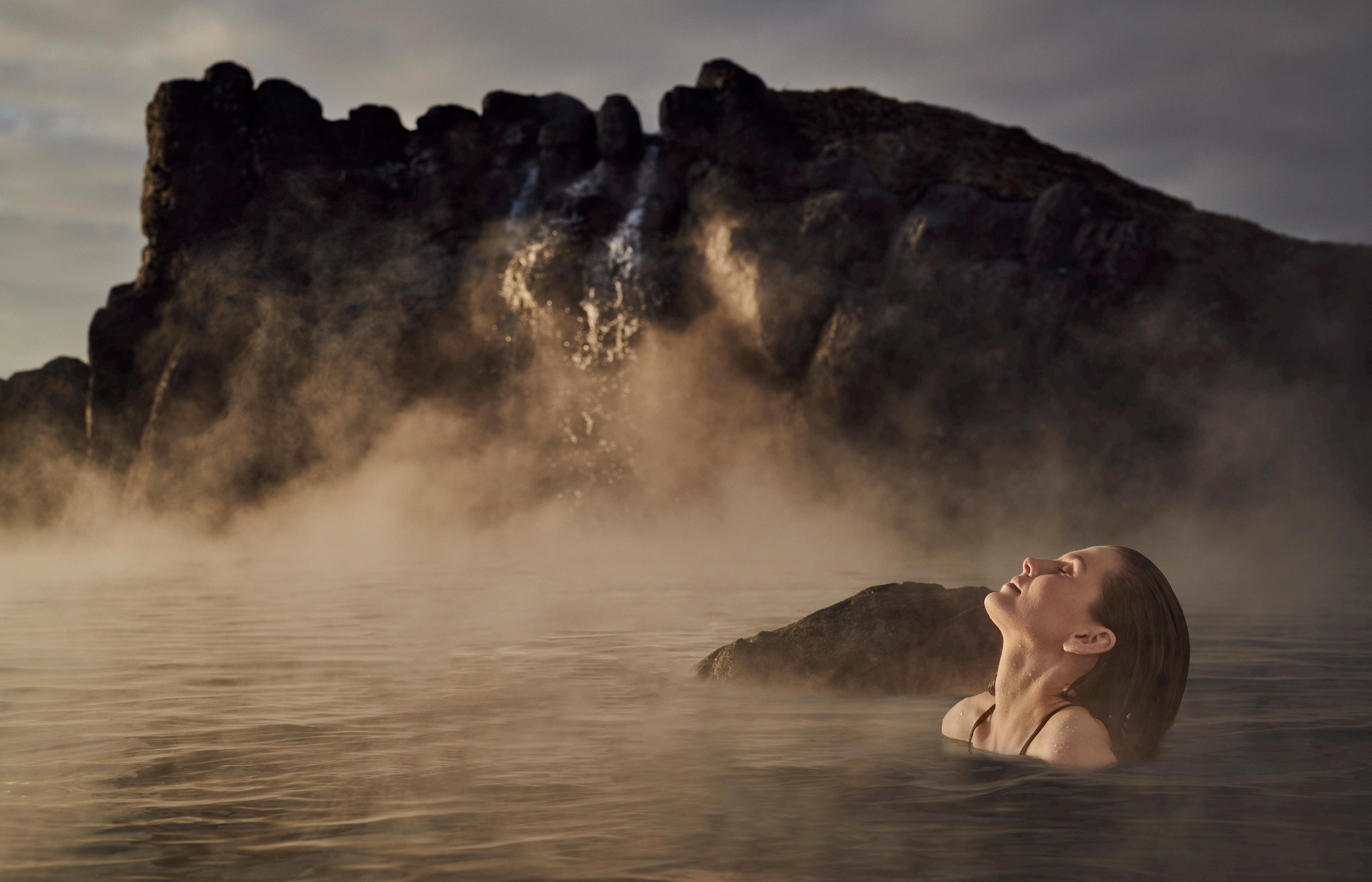

NEWS IN BRIEF 6
ASK ICELAND REVIEW 8
IN FOCUS
FERRIES 10
CULTURAL APPROPRIATION AT THE ICELANDIC OPERA 14
FICTION
AN EXCERPT FROM THE QUIET GAME BY HALLA ÞÓRLAUG ÓSKARSDÓTTIR 120
PHOTOGRAPHY
DO YOU BELIEVE IN MAGIC? 100
LOOKING BACK
TO THE MANOR BORN 48
At the turn of the 20th century, a French aristocrat rattled Reykjavík society.
FROM THE ARCHIVES
AUTHOR AND NOBEL LAUREATE
HALLDÓR LAXNESS 36
Living from 1902 to 1998, Halldór’s books were synonymous with the history of the 20th century.
ART
VELVET TERRORISM 18
Maria Alyokhina on Pussy Riot’s first-ever museum exhibition.
SOCIETY
MAN OF THE PEOPLE
Journalist Gísli Einarsson champions Iceland’s countryside folk. 28
INNOVATION
FULL HAUS 88
A new hub in downtown Reykjavík is giving creative workers room to grow.
MUSIC
POWER PLAYER 62
Diljá is ready to take on Eurovision.
MUSIC
THE WONDERER 78
Júníus Meyvant and his many tangents.
INDUSTRY
NET PROFIT 40
Capelin is crucial to Iceland’s ecology and its economy.
TECHNOLOGY
SOUNDING SMART 110
The Intelligent Instruments Lab is teaching us about music and AI.
ENVIRONMENT
FULL CIRCLE 66
The innovators who are making Iceland’s economy circular.
LITERATURE
PEDRO: IN PRIVATE 54
Author Pedro Gunnlaugur Garcia on making his innermost thoughts public.
CONTRIBUTORS
Editor
Gréta Sigríður Einarsdóttir
Cover photo
Golli
Publisher
Kjartan Þorbjörnsson
Design & production
Daníel Stefánsson
Writers
Erik Pomrenke
Frank Walter Sands
Halla Þórlaug Óskarsdóttir
Jelena Ćirić
Kjartan Þorbjörnsson
Ragnar Tómas Hallgrímsson
Zachary Jordan Melton
Photographers
Anton Brink
Golli
Eggert Jóhannesson
Mummi Lú
Rúnar Gunnarsson
Sigfús Eymundsson
Illustrator
Ásdís Hanna Guðnadóttir
Translator
Larissa Kyzer
Copy editing & proofreading
Jelena Ćirić
Erik Pomrenke
Ragnar Tómas Hallgrímsson
Zachary Jordan Melton
Subscriptions
subscriptions@icelandreview.com
Advertising sales sm@mdr.is
Print Kroonpress Ltd. 5041 0787 Kroonpress
NORDIC SWA N ECOLAB E L
Annual Subscription (worldwide) €72.
For more information, go to www.icelandreview.com/subscriptions
Head office MD Reykjavík, Laugavegur 3, 101 Reykjavík, Iceland, Tel.: (+354) 537-3900. www.icelandreview@icelandreview.com No articles in this magazine may be reproduced elsewhere, in whole or in part, without the permission of the publisher. Iceland Review (ISSN: 0019-1094) is published six times a year by MD Reykjavík in Iceland. Send address changes to Iceland Review, subscriptions@icelandreview.com .


Whether or not I like to talk about it, we’re seeing changes in the world that result from climate change. We and the generations that went before us got us into this mess, but we, and the generations that will come after us, are going to be the ones dealing with it. That doesn’t mean that the world is coming to an end. It just means that the world is going to look a lot different 50 years from now. And if you think about it, that was always going to be the case.
The good news is that this gives us what may be the best thing a person can have: a challenge. The human mind is at its best when it has a goal – a distinct problem which we can work to solve. Even if the problem seems insurmountable, there’s contentment to be found in chipping away at it, leaving it just a tiny bit smaller at the end of the day. One person working for one day is not going to secure our future in a changing world, but millions of people working for a lifetime just might.
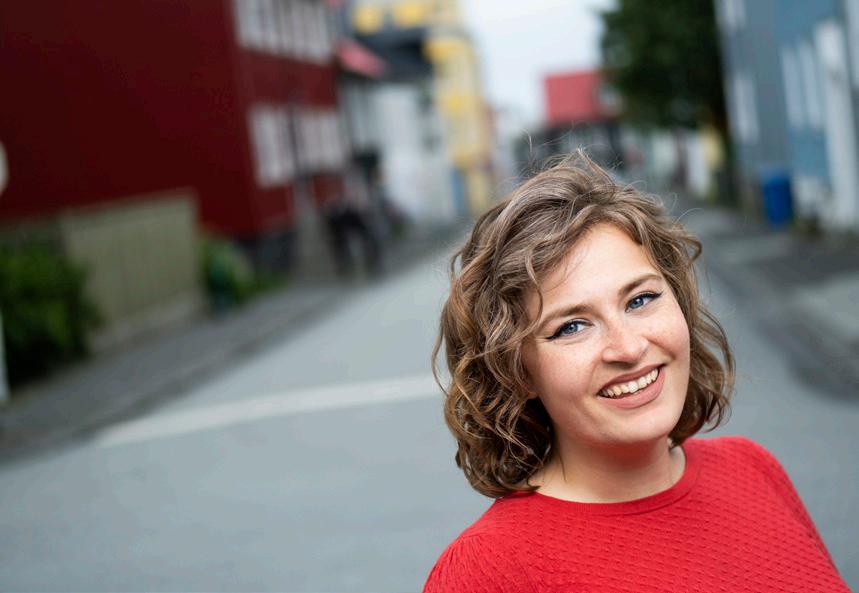
In Iceland, we’re already seeing subtle changes to our ecosystem, and it’s starting to have a direct impact on our bottom line. Capelin roe, which can only be harvested for about three weeks each spring, is a valuable seafood product that brings Icelandic fisheries a good chunk of change. As the ocean around Iceland warms up, capelin swim further north, in search of polar-temperature seawater. As the development continues, we’re likely to see other small changes to our blue economy, and they add up quickly.
There are already people at work on finding creative and innovative ways to change the way we use natural resources. There are people working on finding the scientific data we need so we know where to direct our efforts. There are people making apps that make it easier for us to navigate a changing world, and people working on new sources of energy. There are also artists, musicians, filmmakers, and authors hard at work imagining a future we can come to terms with while opening up our eyes to what the world could be.
We’ve all got work to do. Let’s get to it.
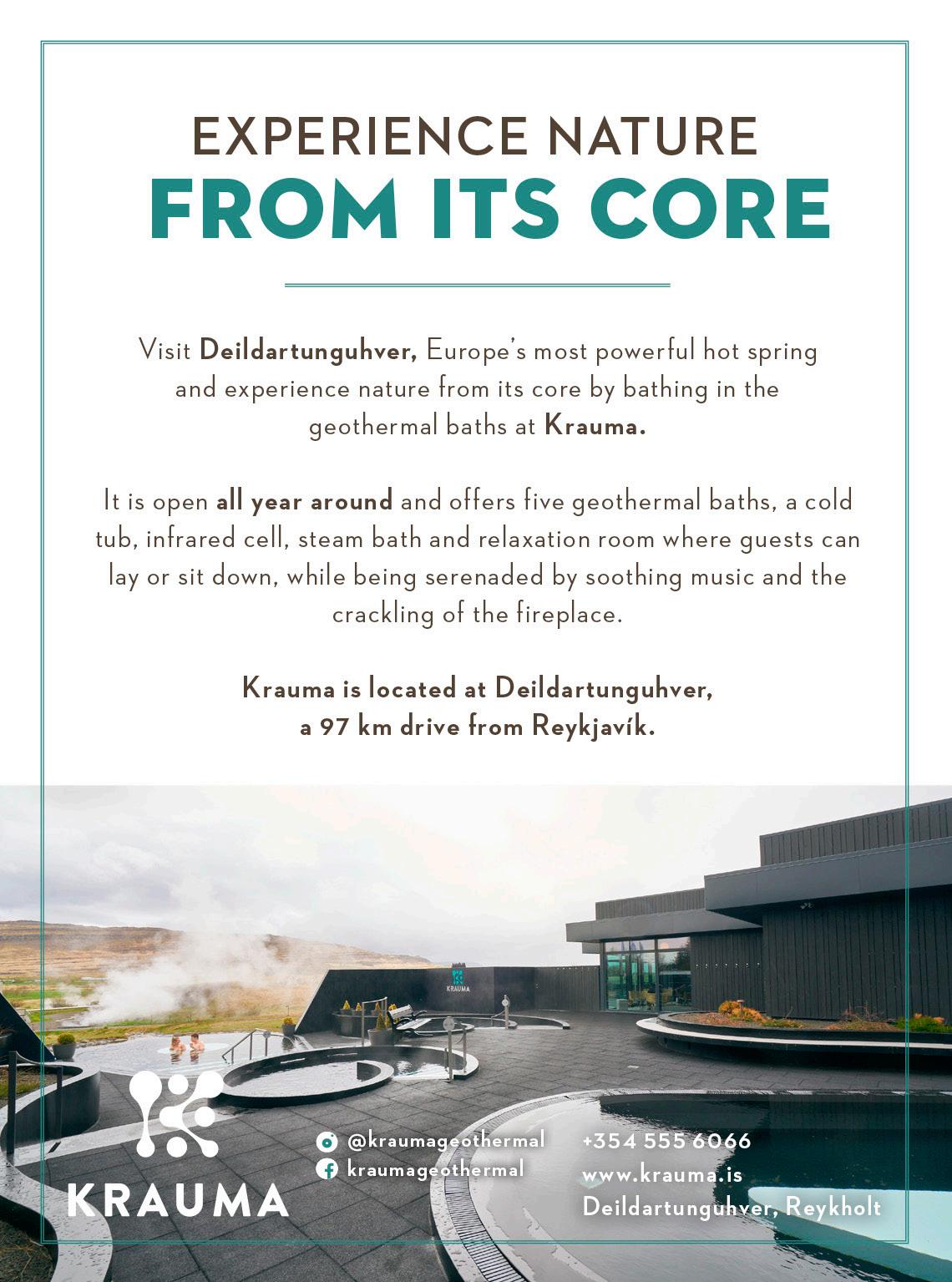
The saga of the Efling Union negotiations finally concluded in early March. The powerful labour union had gone back and forth with SA, the Confederation of Icelandic Enterprise, for months trying to agree upon a new collective agreement. In February, SA threatened to lockout Efling union members, which in essence would have forced the 21,000 members out of work and out of a paycheck until the negotiations ended. On March 8, Efling members voted to accept a mediation proposal put forth by the state mediator, which gives members an 11% monthly wage increase.
Icelandic millionaire and the 2022 Icelandic Man of the Year Haraldur (Halli) Þorleifsson got entangled in an online exchange with his boss, controversial Twitter owner Elon Musk. Halli was one of the recent casualties of Musk’s layoffs at the popular social media app. Halli began working for Twitter in 2021 after his start-up company Uneo was purchased, but after being locked out of his accounts for over a week in March 2023 with no word from Twitter’s HR department, Halli assumed he had been fired. He tweeted his former boss, only for Musk to question Halli’s work and his disability (muscular dystrophy). After a backlash, Musk backtracked his comments and apologised to Halli. Some commenters have also pointed out that identifying Halli’s disability publicly violates American labour laws, raising suspicion that Musk’s apology was made primarily for legal reasons.
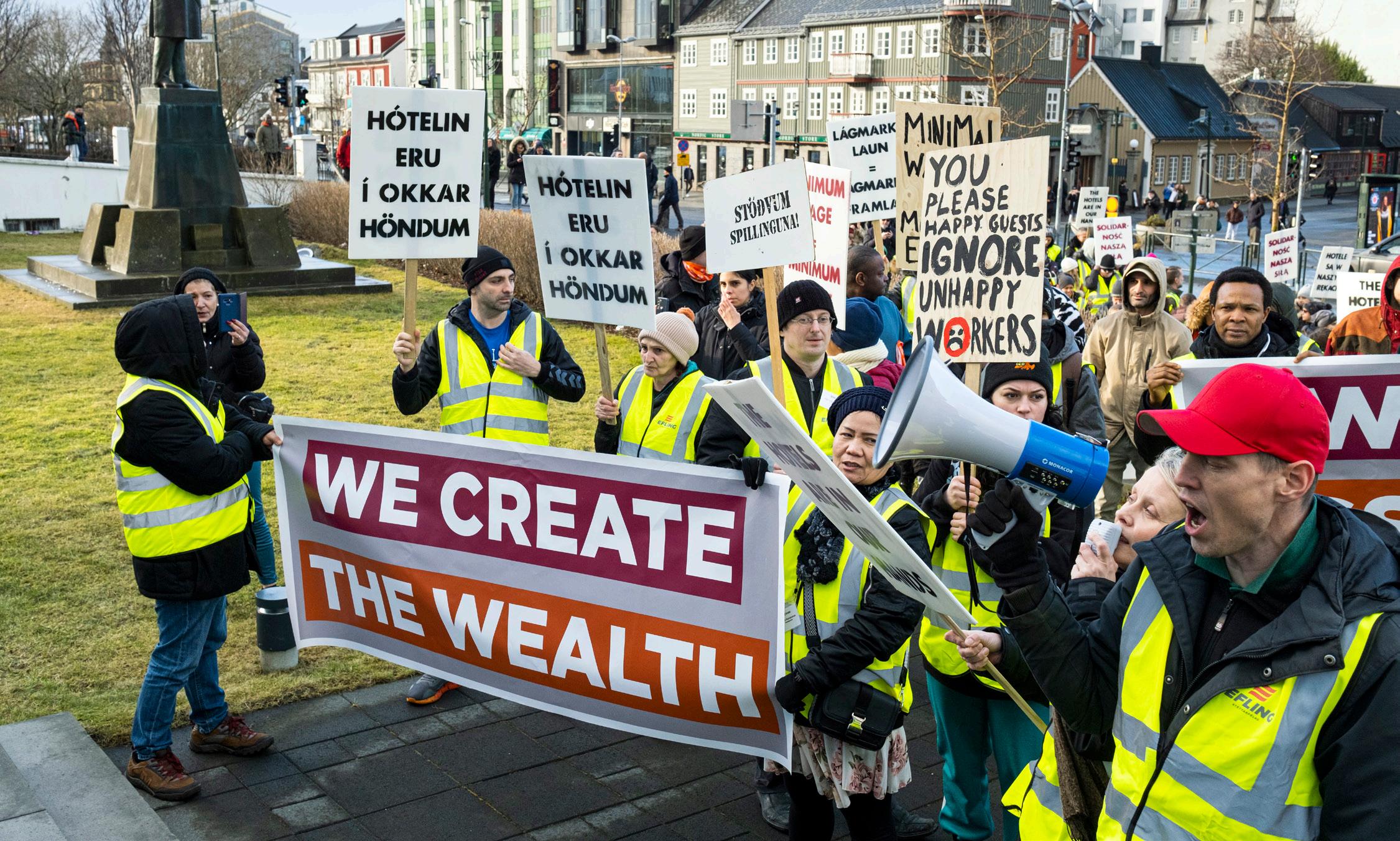
In early March, Justice Minister Jón Gunnarsson introduced a new plan to fight organised crime and sex offences in Iceland. However, the bill proposed by the minister would also give police unprecedented power to carry out surveillance. Sigurður Örn Hilmarsson, the chairman of the Icelandic Bar Association, stated that he is concerned that the proposed surveillance is quite general and can give the police authority to monitor people’s movements without themselves being under suspicion of criminal conduct. This comes on the heels of another controversial move to overhaul the police force. Earlier in 2023, Jón Gunnarsson authorised police to use electroshock weapons in Iceland without consulting Parliament.

Up until Iceland’s independence in 1944, Iceland was a colony of Denmark. In addition to being taught in primary and secondary school, Danish was also the gateway to many higher professions: studying at the university in Copenhagen was one of the most prestigious educations an upwardly-mobile Icelander in the 19th century could get. In fact, Copenhagen was in many ways the centre of Icelandic intellectual life up until the modern era. To this day, many Icelanders choose to attend university in another Nordic nation, such as Norway, Denmark, or Sweden. Because the Nordics are all
The Atlantic puffin (in Icelandic, lundi), is something of a national symbol, with many tourists and Icelanders alike flocking to bird cliffs to catch a glimpse of these brightly-coloured seabirds. If you’re planning your trip to Iceland around seeing these birds, then it helps to know when, exactly, they’re here!
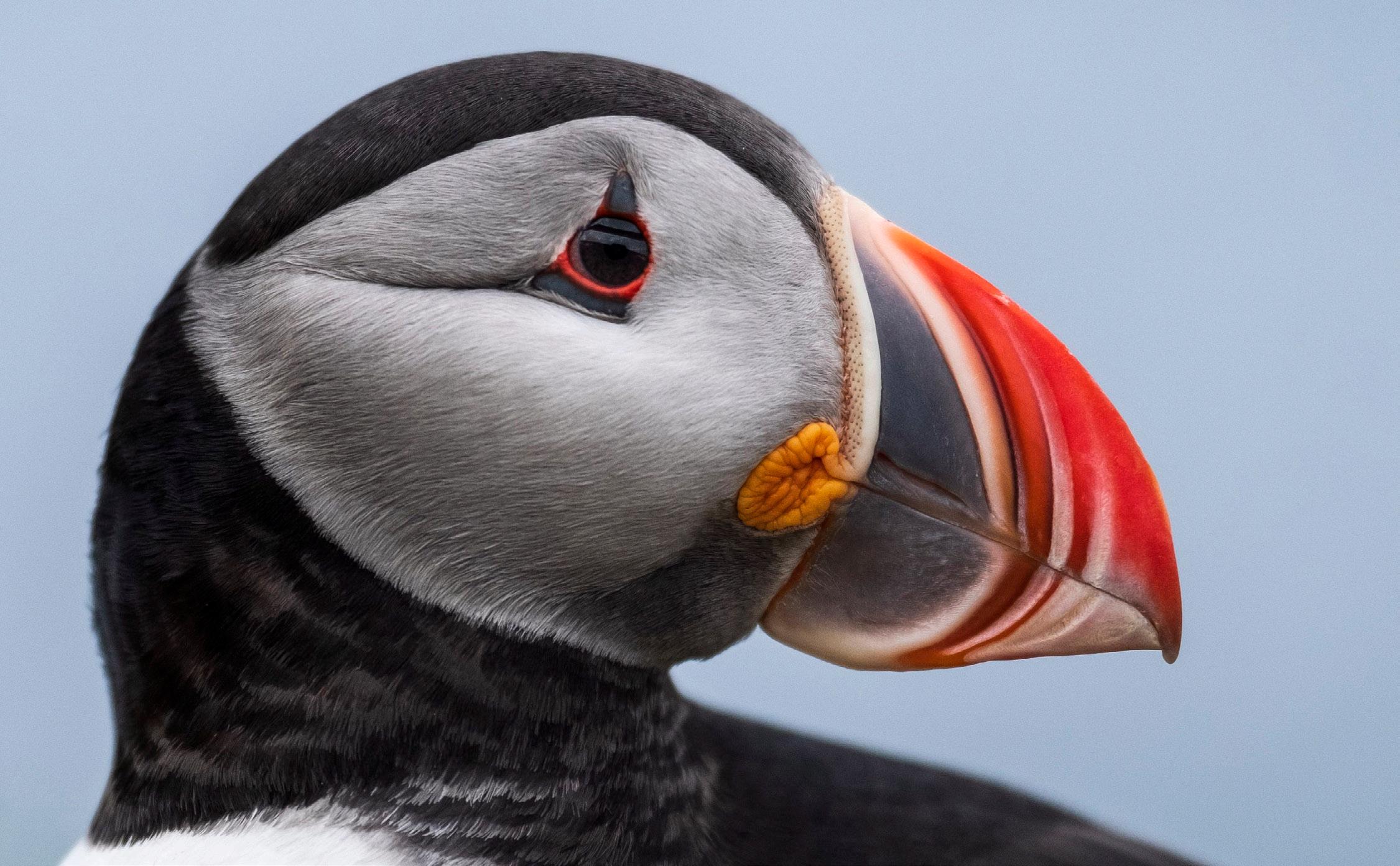
Puffins spend much of their life at sea and are only in Iceland for a relatively short time to breed and nest. They tend to arrive in late April and generally begin to leave in August. The puffins are usually gone by September. The height of the breeding and nesting season is from June through early August.
Unlike many other cliff-dwelling seabirds, Atlantic puffins will actually dig little holes to build their nests in. Puffins are monogamous
good places to study and work, there remains an incentive today to develop a baseline proficiency with the language.
Written Danish and Norwegian are very similar, and a background in Danish can play a key role in communicating with other Scandinavians. Another reason Danish education has stayed in place in Iceland is that Iceland’s neighbours were historically, and continue to be, Danish colonies as well. Specifically, Danish is still taught in Greenland and the Faroe Islands, two territories that have strong historical and cultural ties to Iceland.
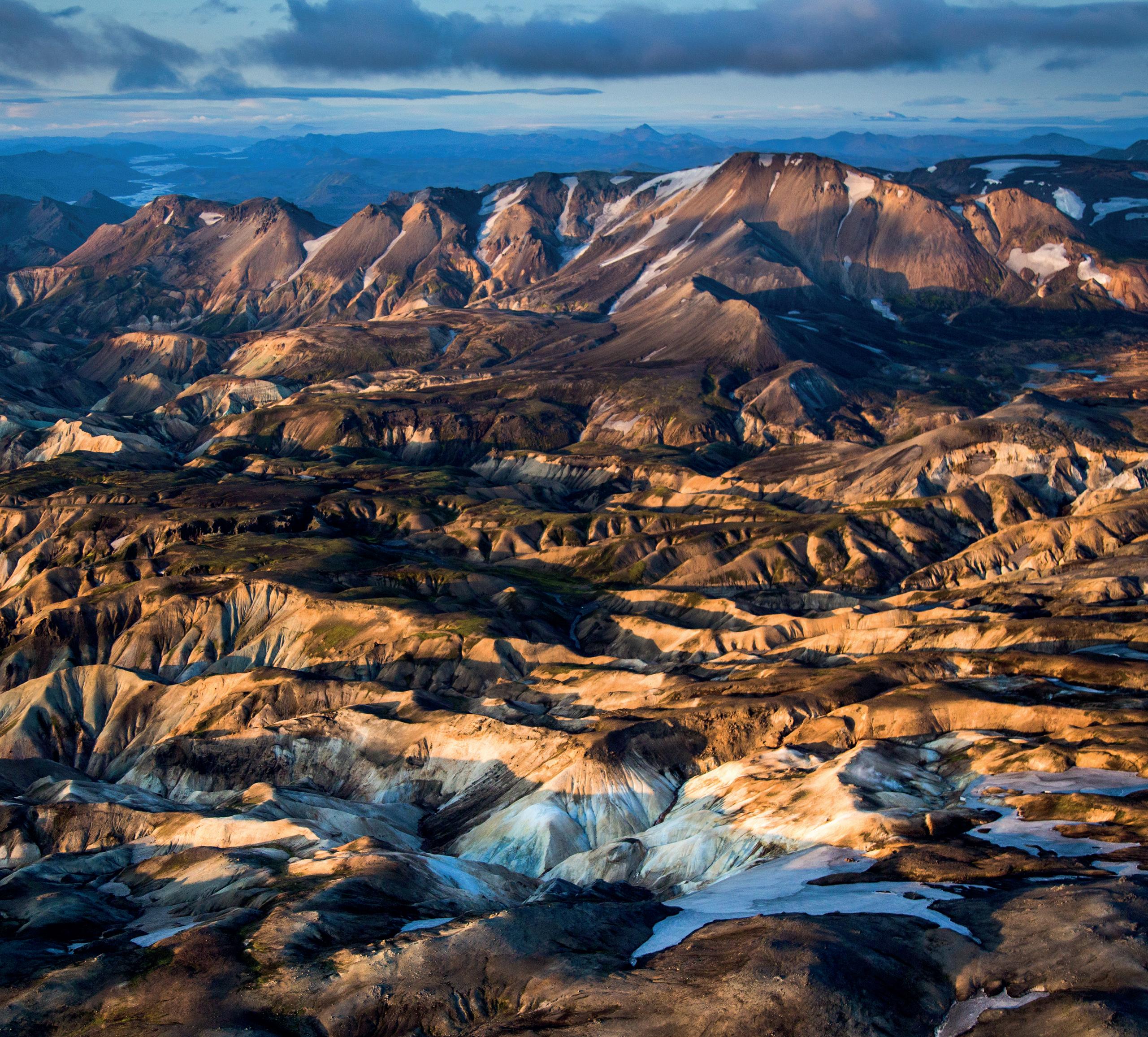
and mate for life, generally producing just one egg each breeding season. Male puffins tend to spend more time at home with the chicks, or pufflings, while female puffins tend to be more involved with feeding the chicks. Raising the pufflings takes around 40 days.
Until recently, it was actually unknown where, exactly, Atlantic puffins spent the rest of the year. But with modern tracking technologies, these little birds have been found to range as far south as the Mediterranean during the winter season. They don’t always head to warmer climates in the winter, however. Icelandic puffins have been found to winter in Newfoundland, Canada, and in the open sea south of Greenland.

FNJÓSKÁ NOLLUR
A loft apartment with incredible views of the fjord.
1 bedroom, 1 bathroom, sleeps 2 (4)
VALLHOLT GRENIVIK
A spacious, luxurious house at the shore.
3 bedrooms, 2 bathrooms, sleeps 6
HRAFNABJÖRG AKUREYRI
A very well situated, exclusive villa opposite Akureyri.
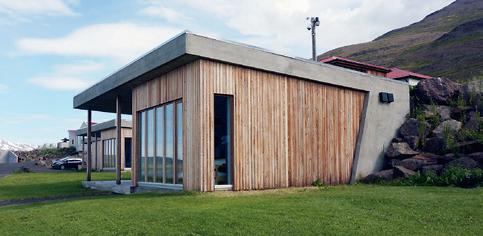
3 bedrooms, 3 bathrooms, sleeps 6
SÚLUR NOLLUR
A wonderful holiday house with an elegant interior.
1 bedroom, 1 bathroom, sleeps 4
LEIFSSTADIR AKUREYRI
Exclusive villa in the vicinity of Akureyri.
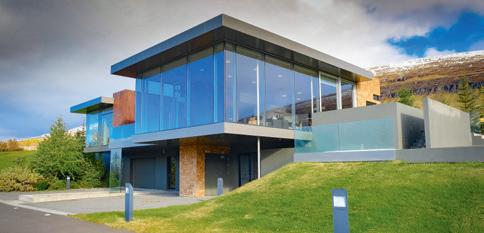
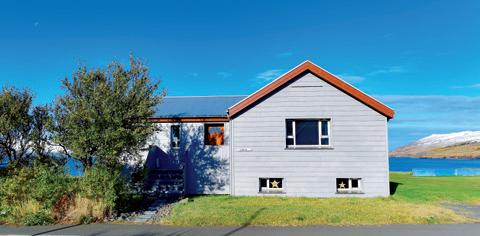

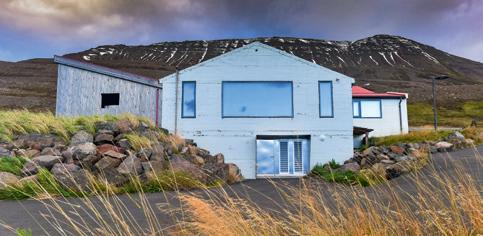

4 bedrooms, 2 bathrooms, sleeps 8
KRÝSUVÍK NOLLUR
A convenient loft apartment on the Nollur farm in Eyjafjörður.
2 bedrooms, 1 bathroom, sleeps 4
and booking
This spring, the ferry Sæfari will be out of commission for maintenance, in drydock from at least March 20 until May 15. Sæfari services Grímsey, an island 40 km [25 mi] north of the mainland, bisected by the Arctic Circle. The 50-some residents of Grímsey are dependent on the ferry, not just for getting to and from the mainland, but also for their essential goods and services.
Normally, Grímsey is connected to the mainland both by the ferry, which leaves from Dalvík, and a Norlandair connection to Akureyri. Now for eight weeks, the residents of Grímsey will have to rely on the fishing vessel Þorleifur for the delivery of basic supplies, and any visits to the mainland will have to be done by air. A programme known as Loftbrú, or Air Bridge, does subsidise flights for Iceland’s most remote regions, but this programme only covers flights to and from Reykjavík. During the ferry repairs, flights to and from Grímsey will be increased from three weekly flights to four. These flights will likewise be subsidised, though the final amount of support is not determined at the time of writing.
In the recent report on Sæfari’s scheduled maintenance, it was also noted that the ferry had been in service longer than initially intended. Originally planned to service Grímsey for 10 years, Sæfari has already been in service for 15 years, with no clear plans for a replacement. As Akureyri Councillor Halla Björk Reynisdóttir stated: “The thing is that ferry routes are just like Route 1 [the main highway around Iceland] and we would of course not accept any community being cut off from the main transport artery.”

In total, six ferries are operated throughout Iceland, connecting its inhabited islands and most remote regions to the rest of the nation. These six ferries are something of a relic from the golden age of boat travel. Route 1 was only completed in 1974, when the last section along the South Coast between Vík and Höfn was constructed. Prior to its completion, travellers to Southeast Iceland had to drive all the way around the island, heading north via Akureyri. Or they could take a ferry.
Ferries have played a role in Icelandic transportation from the settlement of the island. Indeed, building and maintaining ferries was one way a powerful chieftain could both flaunt his wealth and foster good will in his district, while also bolstering trade. Several Icelandic sagas contain references to this phenomenon, and in a stateless society like Commonwealth Iceland, the ferry could be seen as a kind of early public transportation.
The first ferries powered by modern engines arrived in Iceland in the 1920s. In 1924, one Guðmundur Jónsson from Narfeyri bought an old boat, the first in a long line of Baldurs (the ferry which services Breiðafjörður bay), founding one of Iceland’s first and oldest travel companies. In those days, there were no fixed departure times; everything depended on sea conditions.
Today, the operational framework remains similar to the earliest days of ferry travel in Iceland: a patchwork of public and private. Some companies, such as Sæferðir ehf., are privately owned and operated. Herjólfur ohf., the operator that services the
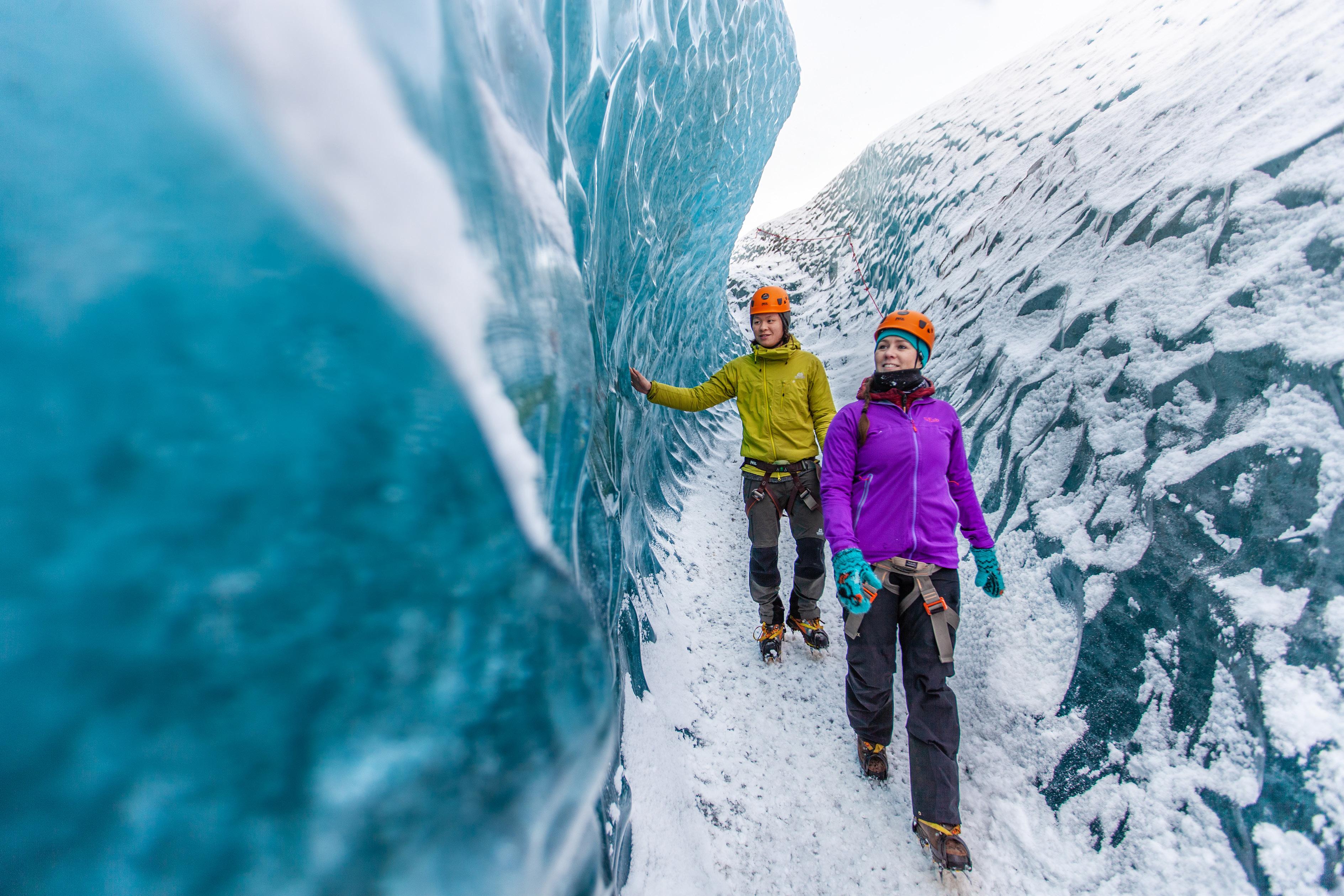

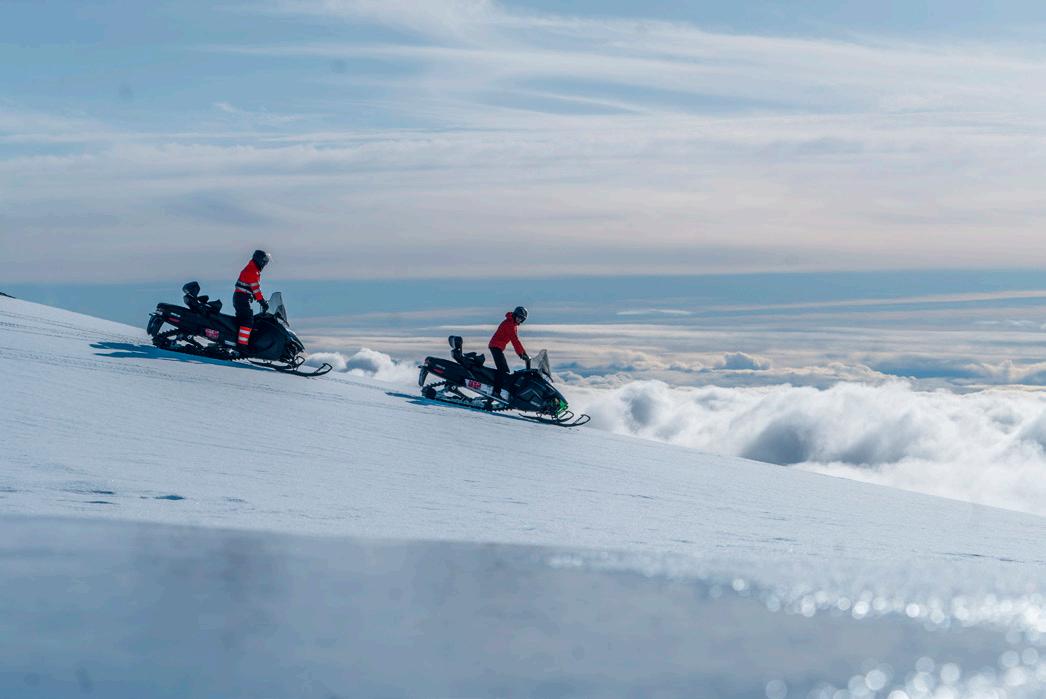

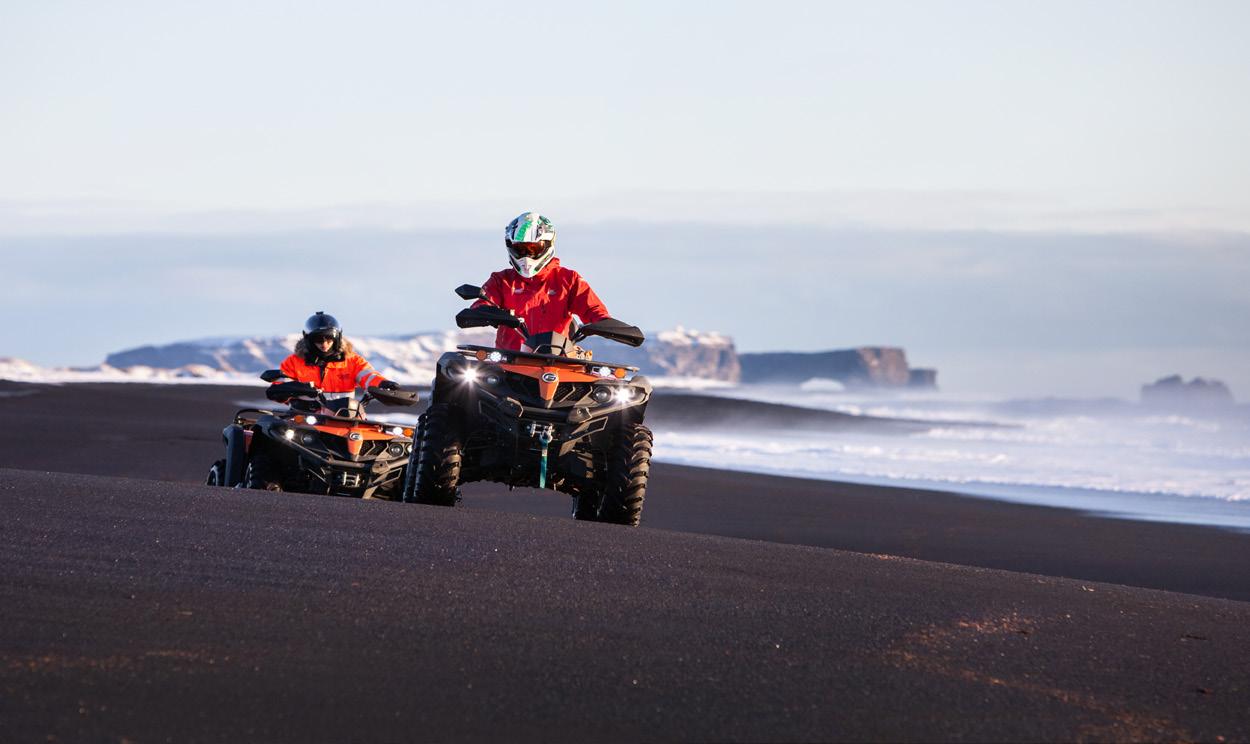
Listasafn
National Gallery of Iceland
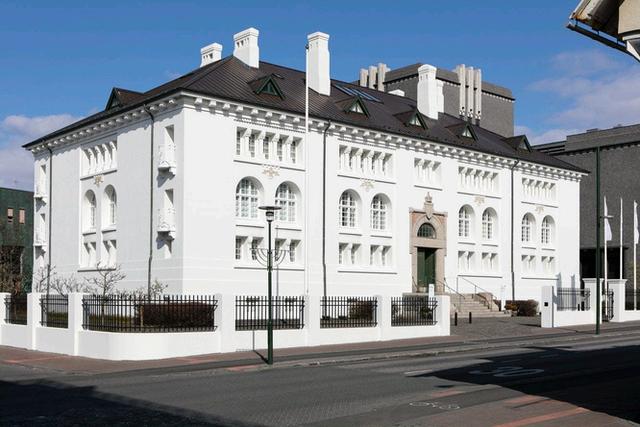
Fríkirkjuvegur 7 101 Reykjavík
Safnahúsið
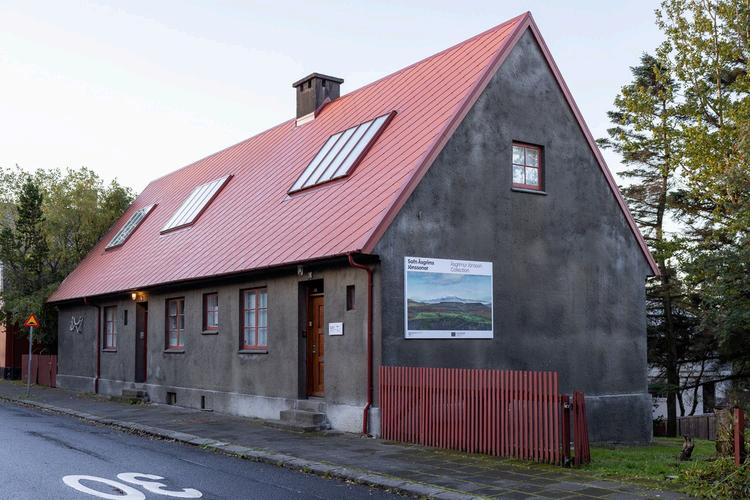
The House of Collections

Hverfisgata 15 101 Reykjavík
Hús Ásgríms Jónssonar Home of an Artist
Bergstaðastræti 74 101 Reykjavík
Westman Islands, is, on the other hand, publicly owned. All ferries in Iceland, however, are overseen by The Icelandic Road and Coastal Administration. And, despite Iceland’s maritime history, ferries have fallen by the wayside in recent years, with many of the nation’s ferries in need of replacement.
Recent incidents
In March 2021, the ferry Baldur was stranded in Breiðafjörður bay for more than a day. Some 20 passengers, a crew of eight, and 80 tonnes of salmon spent the night being buffeted by sharp winds before the stranded ferry could be towed back to port.
Baldur travels between Stykkishólmur, on the north coast of the Snæfellsnes peninsula, and Brjánslækur in the Westfjords, making stops at Flatey island along the way. Because Klettsháls, an important road connecting the Barðaströnd region to the outside world, is often impassable, the ferry serves as a vital link for this area. Often referred to as “the bridge to the Westfjords,” Baldur also sails year-round, meaning that for much of the year, Baldur is the safest, most practical way for residents of the Westfjords to access the rest of Iceland.
And although Baldur was serviced after the March 2021 breakdown, it was not the last one. Since then, Baldur has broken down twice. Notably, unlike all of Baldur’s predecessors stretching back to 1955, the current Baldur is a single-engine ship, meaning that if its engine fails, it is totally without power: something that has become increasingly common for the 44-year-old ship. The municipalities of Stykkishólmsbær and Helgafellssveit lodged official complaints about the safety of the ferry, but Baldur continues to be in service.
Baldur, originally named Vågan, was constructed in Norway in 1979. After 35 years of service, it was sold to Iceland to take its place in the long line of Baldur ferries that have operated in Breiðafjörður since 1924. Following the 2021 breakdown, state broadcaster RÚV featured the ferry in Kveikur, their investigative journalism programme. Kveikur reporters found that even after repairs and maintenance, Baldur was quite simply not seaworthy. Among other issues, there were serious problems accessing life vests, basic safety equipment was found to not work, the engine room was left open to the public, and several doors were found to leak water. But despite the problems with Baldur, authorities insisted that the old ship was still seaworthy. In an interview, Bergþóra Þorkelsdóttir, director of The Icelandic Road and Coastal Administration, described Baldur as “an old, but safe, ship.”
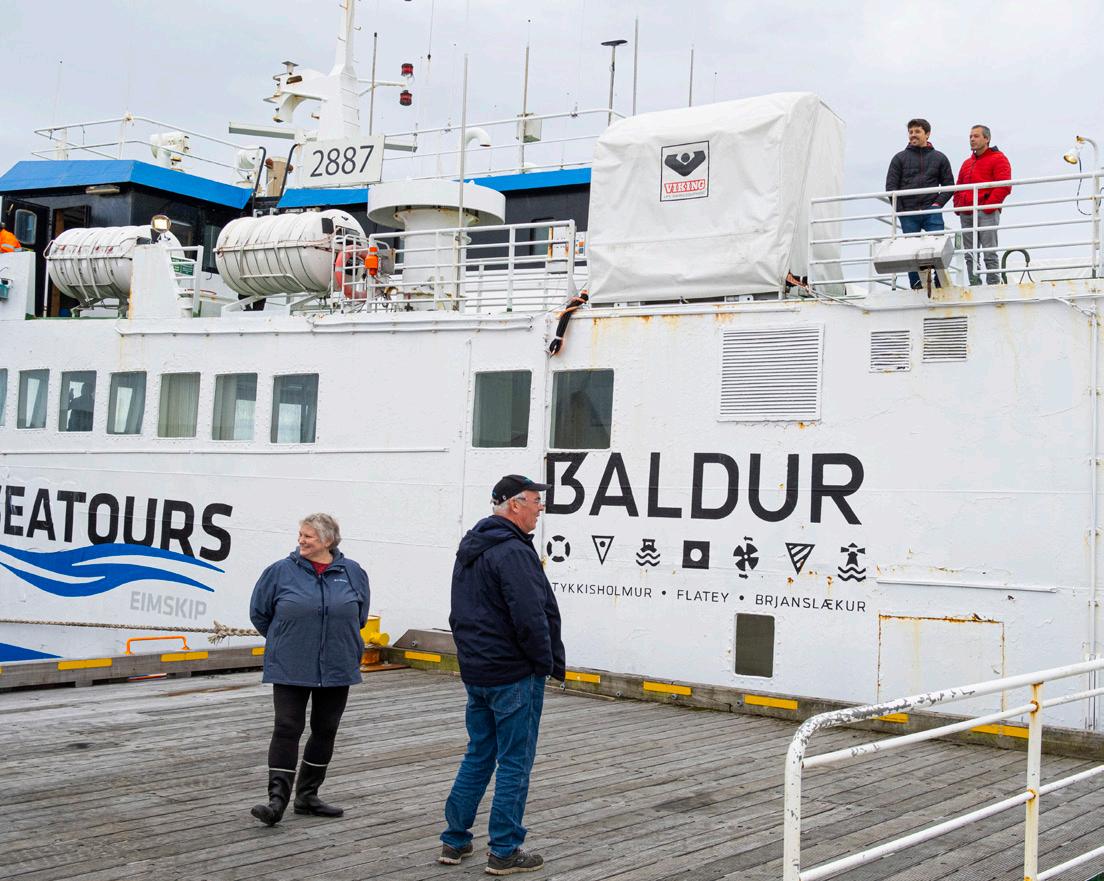
Many of the safety issues on Baldur that Kveikur shed light on have since been rectified, but even at the time of its purchase by operator Sæferðir some 10 years ago, there were concerns. The ferry was originally rejected for registration due to safety reasons, and it was only after an appeal that the ferry entered service.
In June of 2019, a new ferry – bright white, green, and blue –docked in the Westman Islands. It had crossed the Atlantic from Poland, where it was made, to be officially christened Herjólfur IV by Prime Minister Katrín Jakobsdóttir. As it came to harbour, it met its predecessor, Herjólfur III. They sounded their horns in greeting. More than just a nautical nod of the head, this encounter was much more: a meeting of past and present.
Herjólfur IV is in fact the first electric ferry in Iceland. Equipped with extra diesel generators for longer journeys, it is capable of making the crossing to Landeyjahöfn on battery power alone. For longer journeys, such as when the weather forces Herjólfur to cross at Þorlákshöfn, the backup diesel generator helps it along the way.
In 2019, the UK Department for Business, Energy, and Industrial Strategy estimated that ferry travel averages 18g of CO2 per passenger per kilometre. For comparison, domestic flights averaged 254g of CO2 per passenger per kilometre, and singlepassenger cars averaged 171g. Although ferries’ efficiency will vary widely depending on their age and design, they stand out as a clear winner for environmentally friendly travel, even beating out some train systems. And, of course, these figures are for ferries that still operate on diesel and oil power. For primarily battery-powered ferries such as Herjólfur, the environmental impact is even smaller.
Ferries are, of course, a special-use case that will never reach the capacity of, say, a high-speed rail network. But Iceland’s ageing ferries should not be allowed to become a relic of the past. Iceland owes it to all of its communities, even the smallest and farthest flung, to connect them with reliable transportation and services. Further investment in ferries could make travel safer and more environmentally friendly for the entire nation.
And in our increasingly disenchanted lives, isn’t the occasional boat trip still an adventure?
On March 3, the Icelandic Opera premiered its production of Madama Butterfly, authored by Italian composer Giacomo Puccini and first performed publicly in 1904.
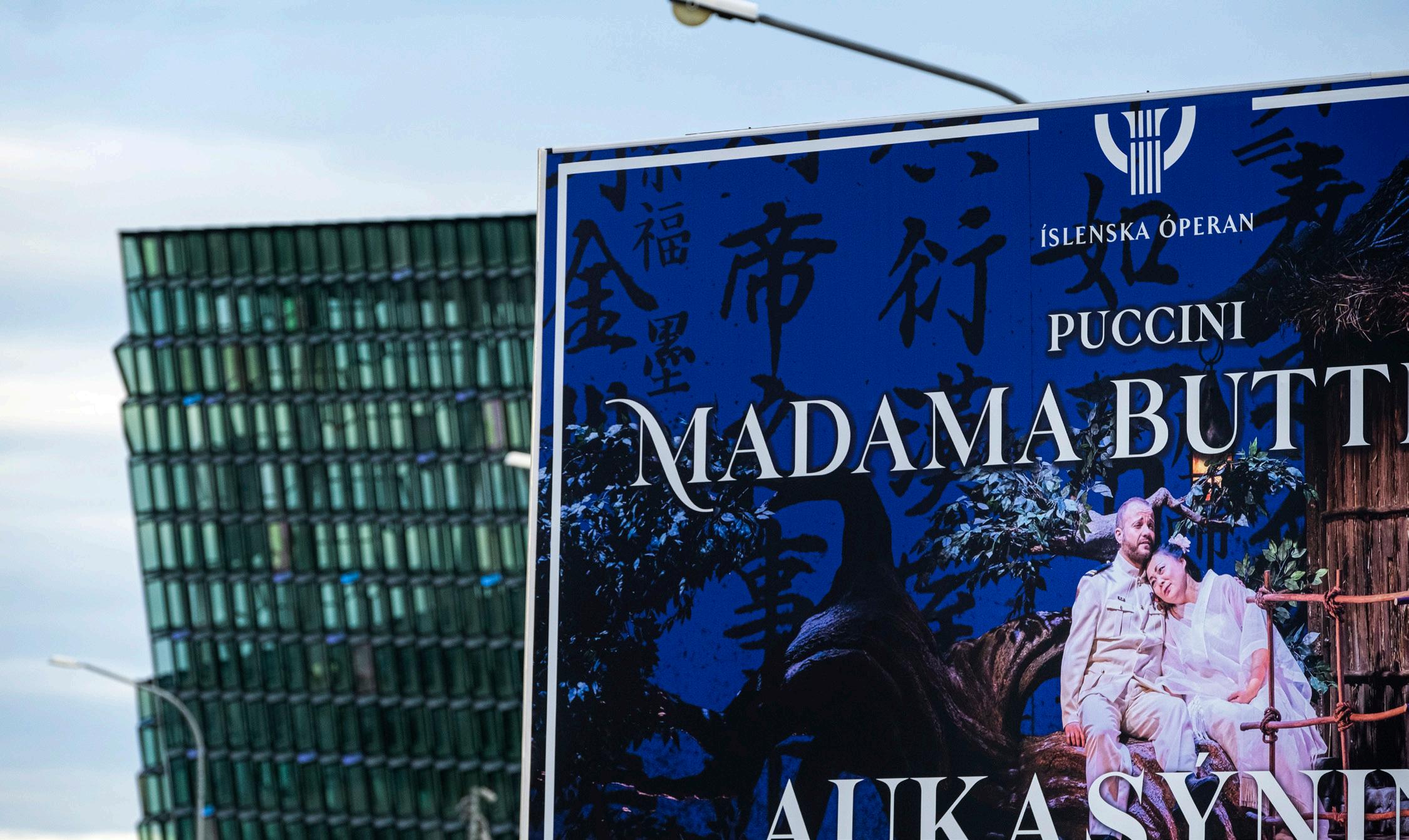
The opera is set in Japan in the early 20th century and centres on the relationship between the US naval officer Pinkerton, portrayed by the Icelandic tenor Egill Árni Pálsson; and Cio-Cio-San, a 15-year-old Japanese girl, played by the Korean soprano Hye-Youn Lee.
Shortly after premiering, the Icelandic Opera’s production drew criticism for creative decisions in set design, costumes, and make-up.
Three days after the premiere, Laura Liu, a Chinese-American violinist for the Iceland Symphony Orchestra, published a post on Facebook accusing the production of yellowface (i.e. where a nonAsian performer uses makeup to imitate the appearance of an Asian character).
Liu shared pictures of the performers, who were shown wearing tinted makeup, painted-on eyebrows, and black wigs:
“Are we bringing yellowface back, Iceland?” Liu asked. “Furthermore, Madame Butterfly is Japanese. Those are Chinese characters. ‘All look same,’ right? It’s disturbing to have to repeat this: yellowing up is the same as blacking up. When you wear another race as your costume that’s called dehumanisation. Do better.”
Additionally, Liu also posted photos of the set design and
costumes, claiming that they weren’t representative of Japanese culture but rather a mish-mash of vaguely Asian aesthetics, including Chinese symbols.
Responding to Liu’s criticism online, Michiel Dijkema – the production’s Dutch stage director and set designer – argued that no attempts had been made to alter the skin colour or eye shape of the performers. Instead, elements from classical Japanese theatre traditions, including Noh and Kabuki, had been employed. These elements actually made the singers look “much whiter,” he wrote.
Dijkema asserted that he had consulted with friends and colleagues of Asian heritage regarding the use of these elements – and that none of them had deemed the choices racist As for the characters used on the set, Dijkema insisted that they were Japanese Kanji characters that were almost identical to Chinese characters. (Other commenters, including a few Japanese individuals, refuted these claims.)
On March 9, Steinunn Birna Ragnarsdóttir, Director of the Icelandic Opera, addressed accusations of racism and cultural appropriation in an interview with the radio programme Reykjavík Síðdegis.
Prior to the interview, Daniel Roh – a Korean-American stand-up comedian and teacher living in Iceland – had written an open letter
to the Icelandic Opera published on Vísir. In his letter, Roh stated that “performing yellowface” in such a large, state-funded production could lead to “real harm and alienation” given that racism was “real and present” in everyday Iceland. Daniel also announced that he would be staging a protest of Madama Butterfly on the following Saturday.
When asked what she made of such criticism, Steinunn reiterated some of the points made by her colleague Michiel Dijkema: “I was very clear about not using yellowface in this production,” she told her two interlocutors, adding that the producers had decided to take a “different route” to make the production believable (e.g. Kabuki makeup). Like Dijkema, Steinunn maintained that various experts, many of whom were of Asian heritage, had been consulted for the staging of Madama Butterfly, and had agreed that there was nothing racist about the production.
Lastly, Steinunn concluded by saying that she welcomed the discussion and that her team would keep an open mind to different perspectives – but that she did not foresee making any changes to the production: “Because these productions are copyrighted. It would be a very long process. We’d be in a pretty strange place if works of art were changed under these circumstances for these reasons.”
“It’s the nature of theatre; you can’t make everyone happy all the time,” Steinnun remarked.

The day after Steinunn spoke to Vísir, actor Arnar Dan Kristjánsson, a performer in Madama Butterfly, announced that he would not be wearing a wig or eye paint at the next performance of the opera:
“I was hired as an actor at the Icelandic Opera to work on the production of Madame Butterfly, which premiered last Saturday. I participated in cultural appropriation. I apologise,” Arnar wrote on Facebook.
Journalist Jakob Bjarnar lampooned the actor’s apology, stating that if he refused to wear his costume he should be booted, literally, from the production.
Guðmundur Arnlaugsson – a choir-member in the production of Madama Butterfly, and one of the individuals featured in the photo shared by Laura Liu – expressed profound regret for having inspired negative feelings among people. He noted, however, that some of the conclusions that people had drawn about the photo and the opera, and consequently about him and his friends, seemed “quite unfair.”
“All I can say is that my moustache is authentic, and I’m grateful that I wasn't asked to shave it off; the make-up applied, to me and others, was no different from makeup in other opera performances in which I’ve participated; and my eyes are simply not bigger than that – so what others think is intentional squinting is simply my natural look. The wig, however, is a disaster and the beard is dyed. But nothing else is out of the ordinary.”
On Saturday, March 11, demonstrators arrived at the Harpa Music and Conference Hall to protest the ongoing production . They were barred from protesting inside the building.
Speaking to the nightly news, Steinunn Birna told reporters that her team had decided to make “a few minor changes” to the production. “We had a good meeting yesterday with the performers, and the director, where we listened to their experiences,” she stated. “We decided that we would tone down the makeup slightly. Despite our conviction that we had not been guilty of yellowface, we decided to remove painted-on, slanted eyebrows and wigs, given that it will
not detract from the overall performance. In these decisions, I’ve stuck to two principles: one, that my people feel comfortable; and two, that we’re trying to make a good show even better.”

Steinunn added that she would be welcoming the protesters and inviting them to have a conversation: “I hope to have a constructive conversation. These are big questions. Where do the lines lie? Which races are you allowed to imitate – and are some races off limits? And these are questions that we can’t answer (we can’t step into their shoes).”
“We belong to this privileged race, and so I would like to have a constructive conversation.”






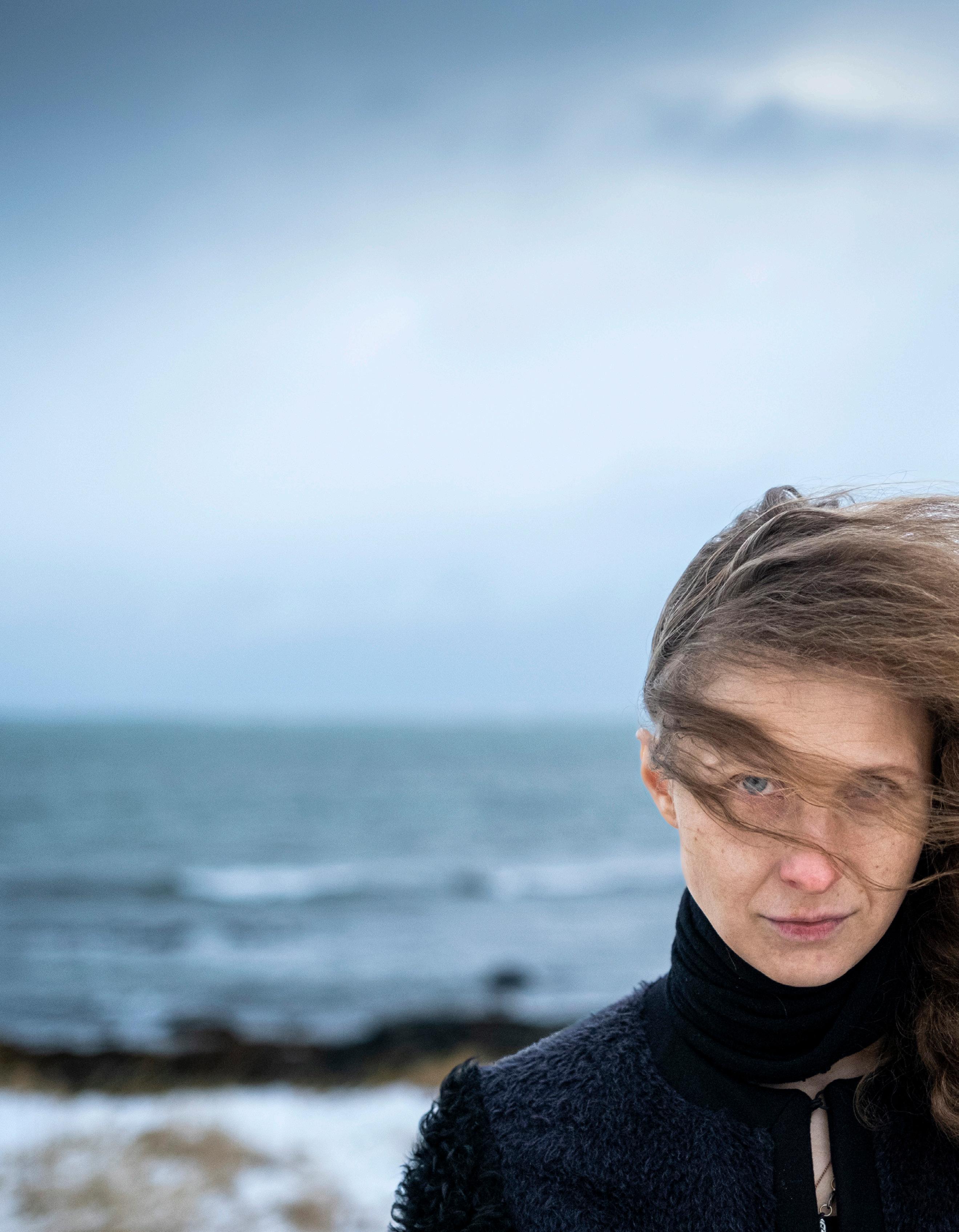 Photography by Golli & Eggert Jóhannesson
Words by Erik Pomrenke
Photography by Golli & Eggert Jóhannesson
Words by Erik Pomrenke

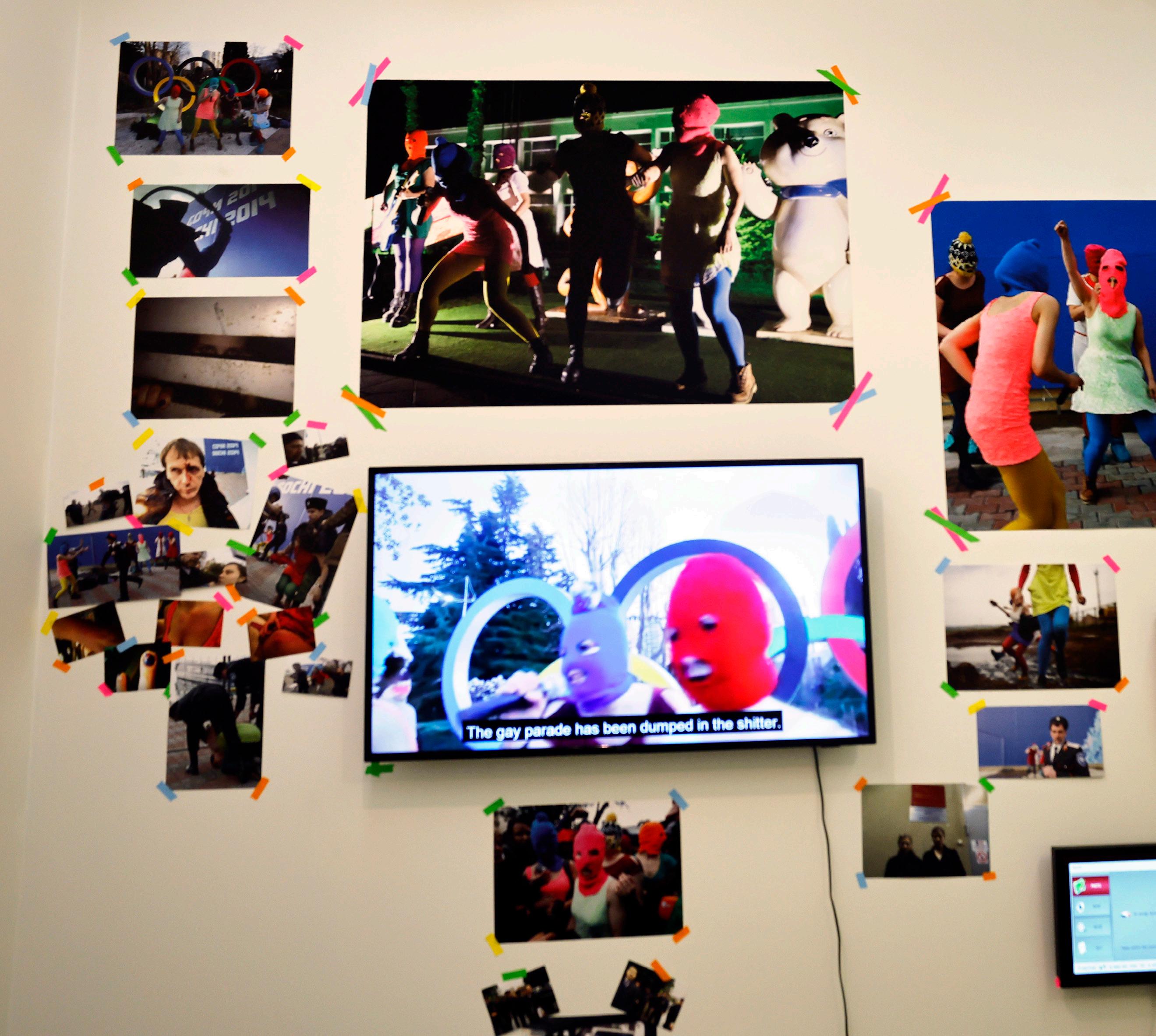
Visiting the exhibition Velvet Terrorism: Pussy Riot’s Russia, you enter a dark room. You are pleasantly greeted by a man sitting at a fold-up table spread with pamphlets and copies of Maria Alyokhina’s 2017 prison memoir, Riot Days. To your right: a video of a woman in a baggy, black dress fills one wall, blonde hair curling messily out from beneath a red balaclava. Standing above a portrait of President Vladimir Putin, she carefully lifts her dress and pisses all over him.
This is the first-ever museum exhibition of Pussy Riot’s work, and it’s being held at Reykjavík’s Marshall House. Maria Alyokhina has been through much to be here. When, on February 24, 2022 President Vladimir Putin announced the beginning of a “special military operation” in Ukraine, Maria, a founding member of Pussy Riot, watched the announcement from a detention centre on the outskirts of Moscow. Less than a year later, she and fellow members of the feminist punk band and activist group have created a visual omnibus of their political actions, a comprehensive critique of Putin’s Russia, in Reykjavík.
Pussy Riot is in theory a punk band, but their best-known works are acts of political protest and performance art. They first came to prominence in 2012, when they performed Punk Prayer, a frantic 60-second sonic protest at the altar of the Cathedral of Christ the Saviour in Moscow, in which Maria and her companions exhorted the Virgin Mary to become a feminist. Indeed, the exhibition’s title, Velvet Terrorism, comes from Patriarch Kirill of Moscow’s description of the protest. Several of the band’s members, including Maria (also known as Masha), served time in Siberian penal colonies for the performance. The charges: hooliganism and “religious hatred.”
“I was concerned that all of this visual material might die in the exhibit,” Masha tells me. “We didn’t want any frames on anything.” It’s never easy to incorporate the provocative, rebellious spirit of performance art into the sometimes-musty confines of art museums. In lieu of frames, glitter and brightly-coloured tape decorate the walls, evoking a teenage girl’s poster collage. Nothing here is permanent, the entire exhibition ready to be torn down about as quickly as it was put up.
Among the many images and videos of their diverse political actions, one stands out. Two women, Nadya Tolokonnikova and Maria Alyokhina, are dressed in blue and white sarafans, a traditional Russian women’s costume, accessorised with fishnet stockings and black boots. The scene resembles idyllic depictions of maypole dances, except the streamers are replaced with yellow plastic police tape and the two women are tying up a faceless, masked policeman. Nadya stares at the camera.
After politely pacing among many such images, visitors are finally challenged by a prison guard. To get through to the end of the exhibit, you must surrender your shoelaces, belts, phones, and keys and place them all in a grey, plastic tray. Your personal belongings disappear through a slot in the wall. It’s unclear where they’ve gone.

You are ushered into a small room, shuffling to not trip over your now-loose shoes. In front of you: a closed door. Above: an intercom, broadcasting in Russian. On either side: institutionally grey-green walls. It doesn’t help that the door is rather heavy and stiff. It takes some time to realise that freedom is only a quick, violent push away.
Hanging on the opposite side of the door is a
“RESISTANCE IS ALWAYS A CHOICE. AND THERE ARE ALWAYS NEW MOMENTS FOR RESISTANCE. IT’S NOT JUST IN THE PRISONS, IT’S IN EVERYDAY LIFE.”
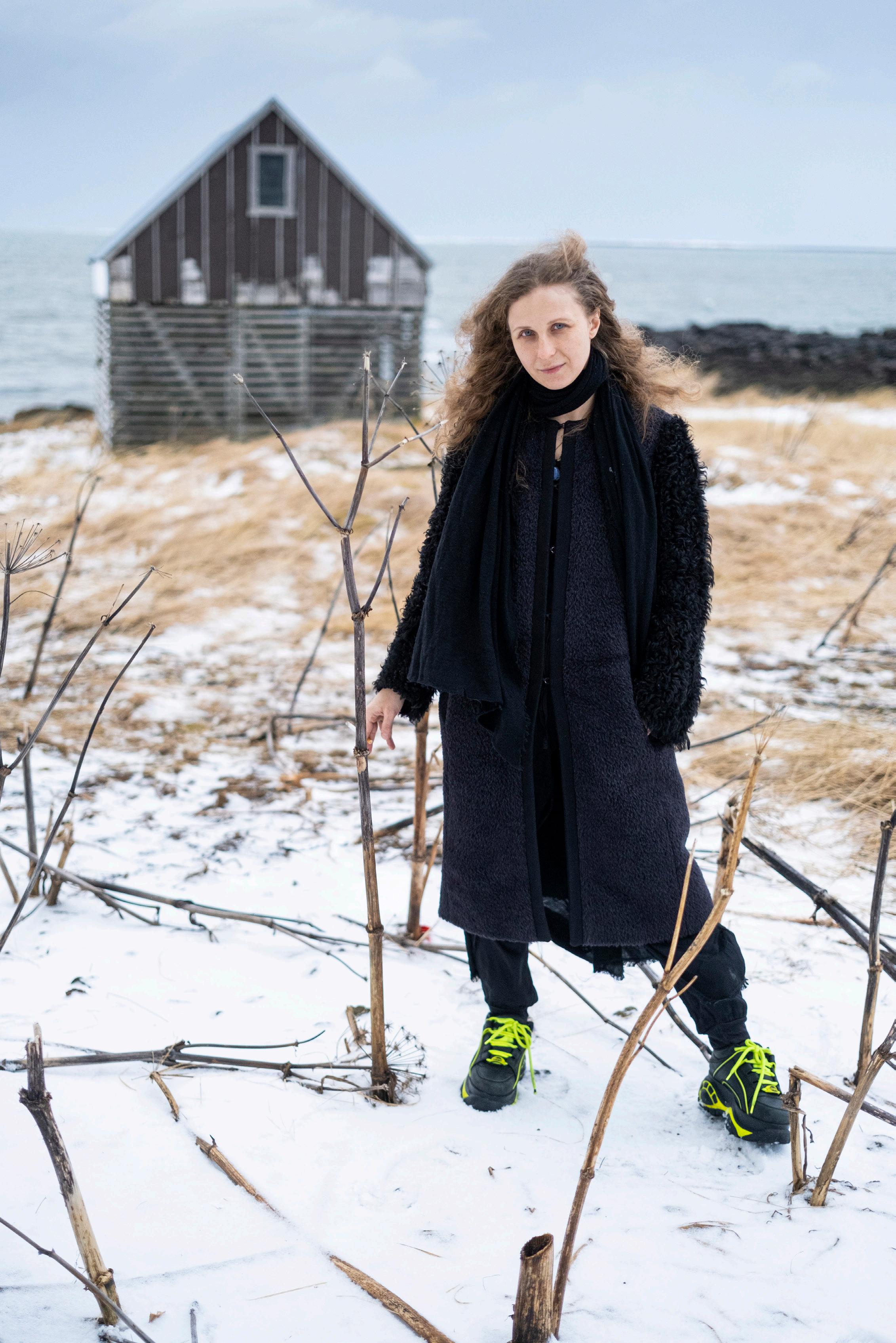
bright-green uniform complete with an insulated backpack, the kind used by online food ordering and delivery services. This is the uniform that Masha used to escape from Russia in April 2022.
“We transported the uniform all the way from Moscow,” Masha says. “It took two months and got here just two weeks before the start of the exhibition. We never really know what’s going to happen to us, so it’s better for it to be here.” Police surveillance is a daily reality for her and her friends (you can always tell Kremlin agents from their bad taste in footwear, she says). And since 2021, Masha has been picked up by authorities for various trumped-up charges, including violating COVID-19 quarantine. For the past two years, she has been under intermittent house arrest, but the decision to flee only came when the authorities announced that she was to serve the rest of her sentence in a penal colony. Having once served out a sentence in Siberia, she had no desire to return.
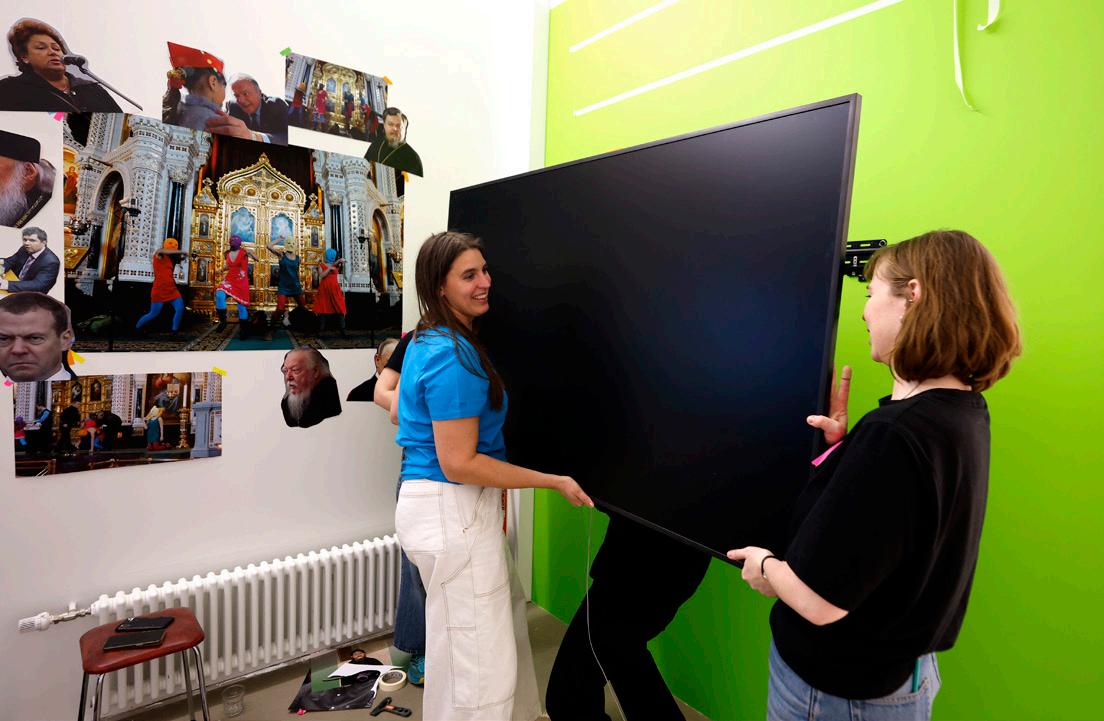
“Sometimes we need to go out on an errand or whatever, so I came up with this idea to buy the uniform,” Masha explains. “The political police, you know, are quite stupid. The lower-level guys will be tasked with just monitoring you entering and exiting your home, and they often don’t notice much else.” With the help of the delivery uniform and Icelandic artist Ragnar Kjartansson, Masha was able to make it to the Belorussian border, and ultimately to Iceland via Lithuania. Ragnar’s exact involvement is left unstated, one of many cul-de-sacs in our conversation for the protection and anonymity of her friends.
Despite its dramatic nature, Masha is quite nonchalant about her disguised escape. “The most difficult thing,” she tells me, “is making the decision. Once you’ve made your decision, the rest is just practical.”
This decisiveness has defined Masha’s life from an early age. “I was quite a problematic child,” Masha says. This isn’t a surprise. “I changed schools a lot, I couldn’t get along with my teachers.
The way they teach in Russia, it’s still Soviet-era patriotism.” It was shortly after completing secondary school that Masha truly became politically conscious. And it wasn’t contact with dissident students in Moscow or radical reading groups – but the destruction of a beloved forest – that led to the leap of faith.
“I read that the state was going to clear Utrish Nature Reserve for an oligarch’s mansion,” she explains. Located on the Abrau peninsula along the Black Sea, only a narrow strait separates Utrish from Crimea. Which at that time was still Ukrainian. Utrish Nature Reserve is also the only part of Russia to have a Mediterranean climate: a little slice of paradise. “It’s a very unique place that should be protected,” Masha says. “I hitchhiked there after finishing school. At the time, I didn’t know anything about activism. I wrote to some organisations like Greenpeace and WWF and asked what I could do. And then I just picked up my backpack and went.”
She started to collect signatures to save the nature reserve from development, and when she returned to Moscow, she wrote again to Greenpeace and WWF asking what more she could do. From there, things started to snowball: she organised small demonstrations, filmed political actions, and collaborated with others. It was also during this time, as a student at Moscow State University, that Masha met Nadya. Together, they would become two of Pussy Riot’s founding members.
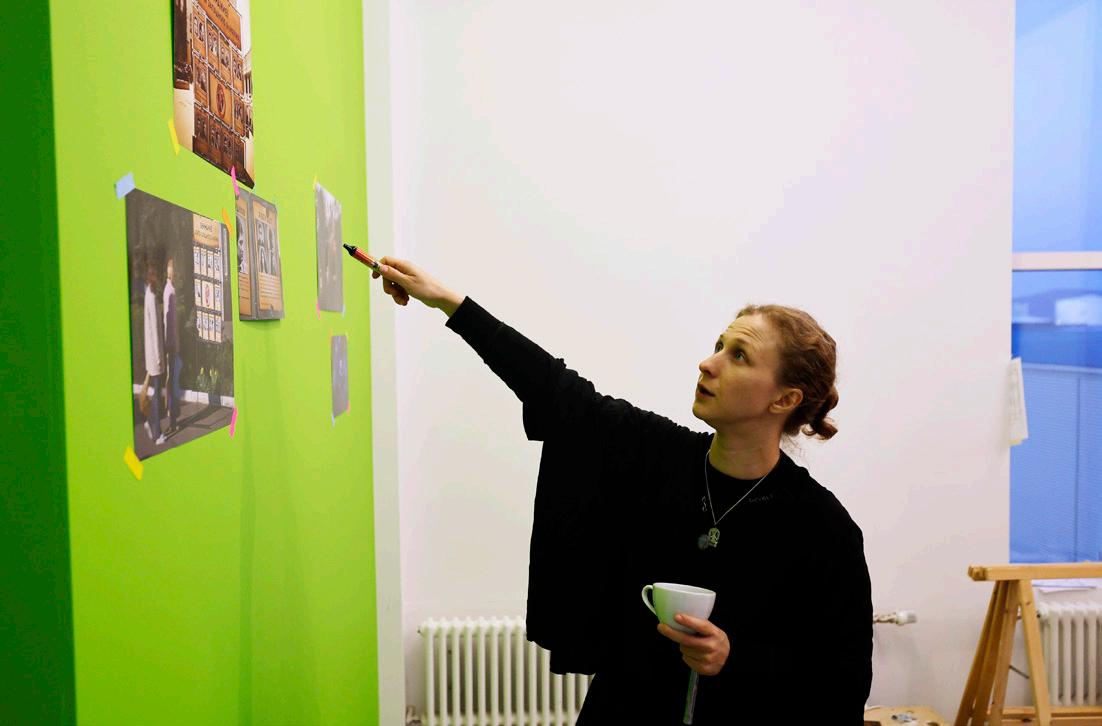
Masha’s problems with authority continued at university. “I was studying literature, and all of my professors were writers and poets. They knew what was going on, why were they not in the streets?” While some in the ivory tower agonise over the relationship between art and political commitment, for Pussy Riot’s project, the interconnectedness of the two is quite simply axiomatic. Art and activism at the same time.
For Masha, “punk isn’t a genre of music. It’s a way of life.” And this “way of life” isn’t merely an aesthetic identity. It has to do with
“I THINK THAT ART IS BASICALLY ASKING THE QUESTION: DO WE WANT TO LIVE LIKE THIS, OR NOT?”
asking the authorities difficult questions, being willing to come into real confrontation with the state. This is something that Masha is deeply familiar with, having spent a total of two years of her life in prison, and about the same amount of time under house arrest. “I think art has a responsibility to change the norm,” she explains. “So many things that are normal now, that we take for granted, are still very new. It was totally impossible to imagine gay pride within some people’s lifetimes. You could end up in a mental hospital. Some people had to sacrifice themselves to change the norm. I think that art is basically asking the question: Do we want to live like this, or not?”
Since those early days of activism, Masha and her companions have toured and lectured throughout the world, led major demonstrations, and, of course, made themselves enemy number one in Putin’s Russia.
A common motif in Pussy Riot’s visual vocabulary is the moment of arrest. This moment, the frequent conclusion to many of their actions, could be seen as an integral part of the performance, the standing ovation to a virtuoso protest.
In one such image, from a demonstration of the 2014 Sochi Olympics, Cossacks in fur-lined ushankas lash Masha and her companions with heavy horse whips. There is a curious detachment, as if neither party particularly wants to be here. The action takes place in the passive voice; there is whipping being done. Masha and her
friends stand there stoically disassociated from the blows, while the Cossacks, halfbored, wait for 5:00 PM to roll around, like the rest of us. In other images, Masha’s face is illuminated by a saintly calm. Looking at the camera as hulking, armed guards take her away, she resembles nothing so much as the Pietà.
“Of course, it’s stupid to resist these large men with guns,” Masha says. The saintly appearance is, in a very practical sense, a signal to these violent men that she’s no longer resisting. But her calm passivity in these images also casts absurdity on the proceedings, men in special forces gear surrounding the diminutive Masha. “Even these men are just working a job,” Masha says. “There are definitely some true sadists who enjoy the full extent of their power, but they’re not the majority. The majority are tired. They want to go home to their wife and kids. And just like everyone else, they’re not being paid enough for what they do.” In some of these images, however, the attentive viewer might catch something else: the shadow of a smile. “Arrests,” after all, “can be fun.”
And Masha’s defiance extends well beyond the moment of her arrest. “The penal colonies [often referred to as ‘the zone’], are still the same as in the Soviet Union,” Masha says. Prisoners live on strictly regimented schedules, sewing military uniforms for slave wages. During her time in the penal colony, where she was subjected to a total of five months of solitary confinement, Masha maintained contact with human rights observers. Through learning her rights
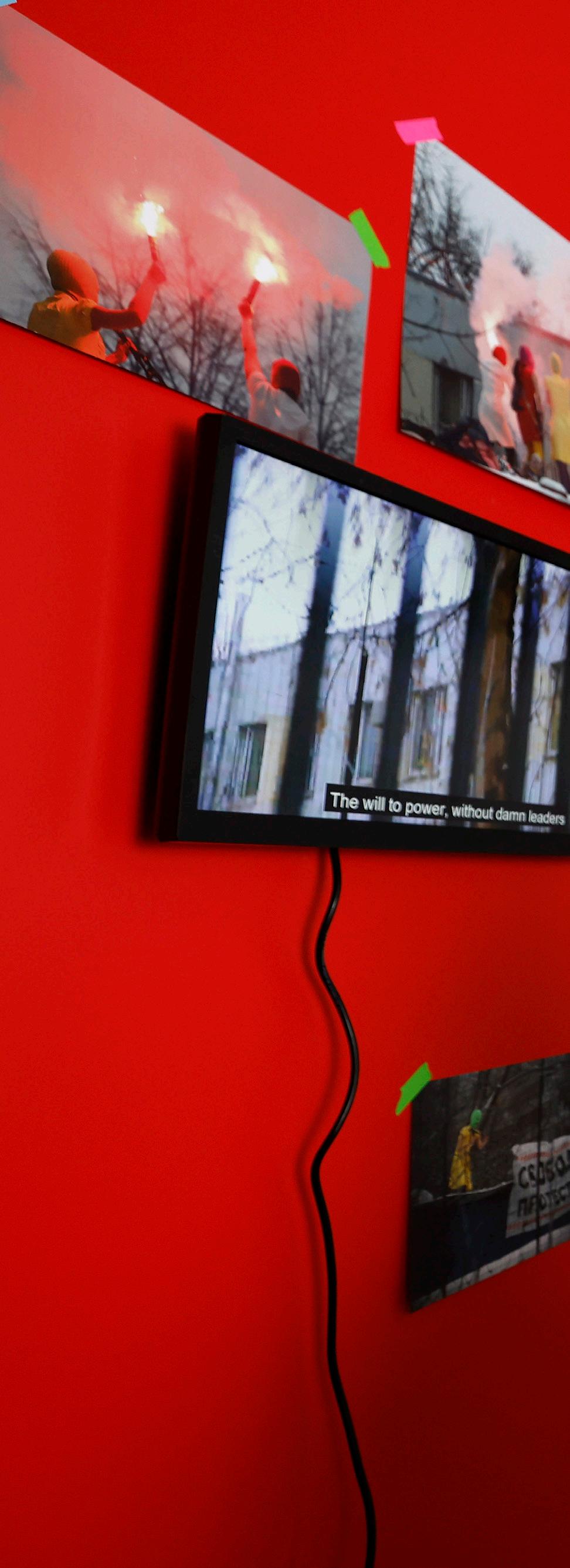

and hunger striking, she even successfully mounted a campaign to reform conditions from the inside. “I started to defend myself,” Masha remembers. “I asked for a copy of the prison regulations. Many don’t know this, but they have to give you the regulations if you ask for them. I started to read the regulations and I found out it was them breaking the law, not me.”
But it wasn’t easy. During all of this, guards would sometimes break script, asking her why she didn’t make life easy for herself. Why she always had to take the hard way. But, as Masha tells me: “Resistance is always a choice. And there are always new moments for resistance. It’s not just in the prisons, it’s in everyday life. I knew that if I submitted in prison, even when I regained my freedom, I wouldn’t be free.”
Over the last year, pedestrians in downtown Reykjavík may have noticed some new graffiti in several locations. Over a field of blue, an arrow points east. War: 3,963 km. Beside the arrow, a black bomb crashes through a house.
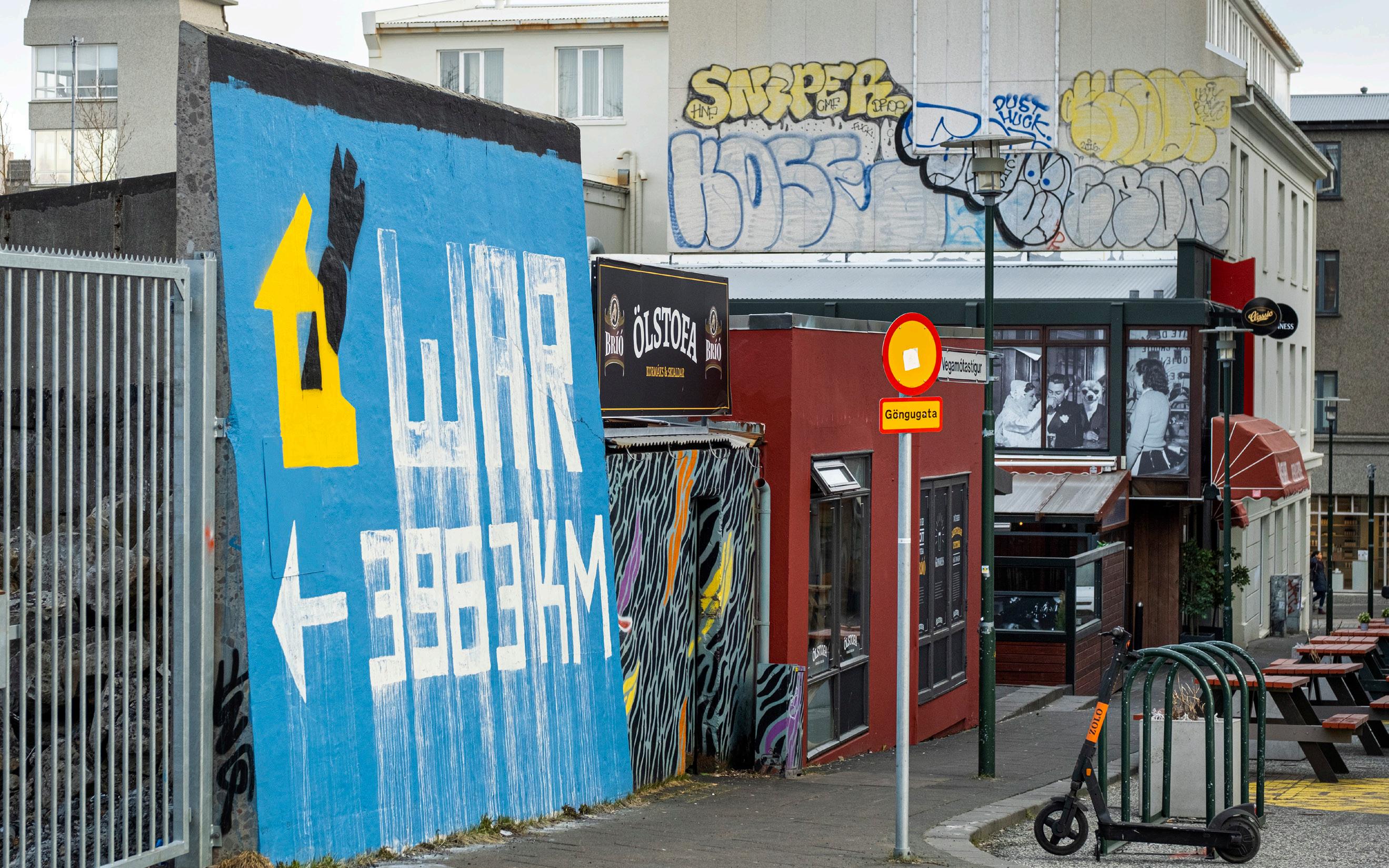
An island on the edge of the Arctic Circle, Iceland has always been on the periphery of world history. But it is Iceland’s marginality that has often thrust it into the centre of things as well. Its MidAtlantic disposition made it an important shipping lane during the Second World War. It was likewise considered a sufficiently central, yet neutral, location for the famous nuclear disarmament talks between Reagan and Gorbachev in 1986. Iceland’s peculiar position has also made it home to high-profile asylum seekers and political refugees over the years, most famously the controversial chess grandmaster Bobby Fischer, who called Iceland his home from 2005 until his death in 2008.
It makes sense, then, that Pussy Riot’s first-ever exhibition took place at the Marshall House. The house, built in the post-war years of development under the Marshall Plan, was originally a fishmeal factory. The Marshall Plan’s goal was to develop post-war Europe, especially Germany, to keep it within the American sphere of influence. Today, the Marshall House is home to Kling og Bang, i8 Gallery, and several other spaces for contemporary art. Iceland, so far away from it all at first glance, is not so insular after all. “War,” Masha says, “is always closer than it looks.”
“WAR IS ALWAYS CLOSER THAN IT LOOKS.”
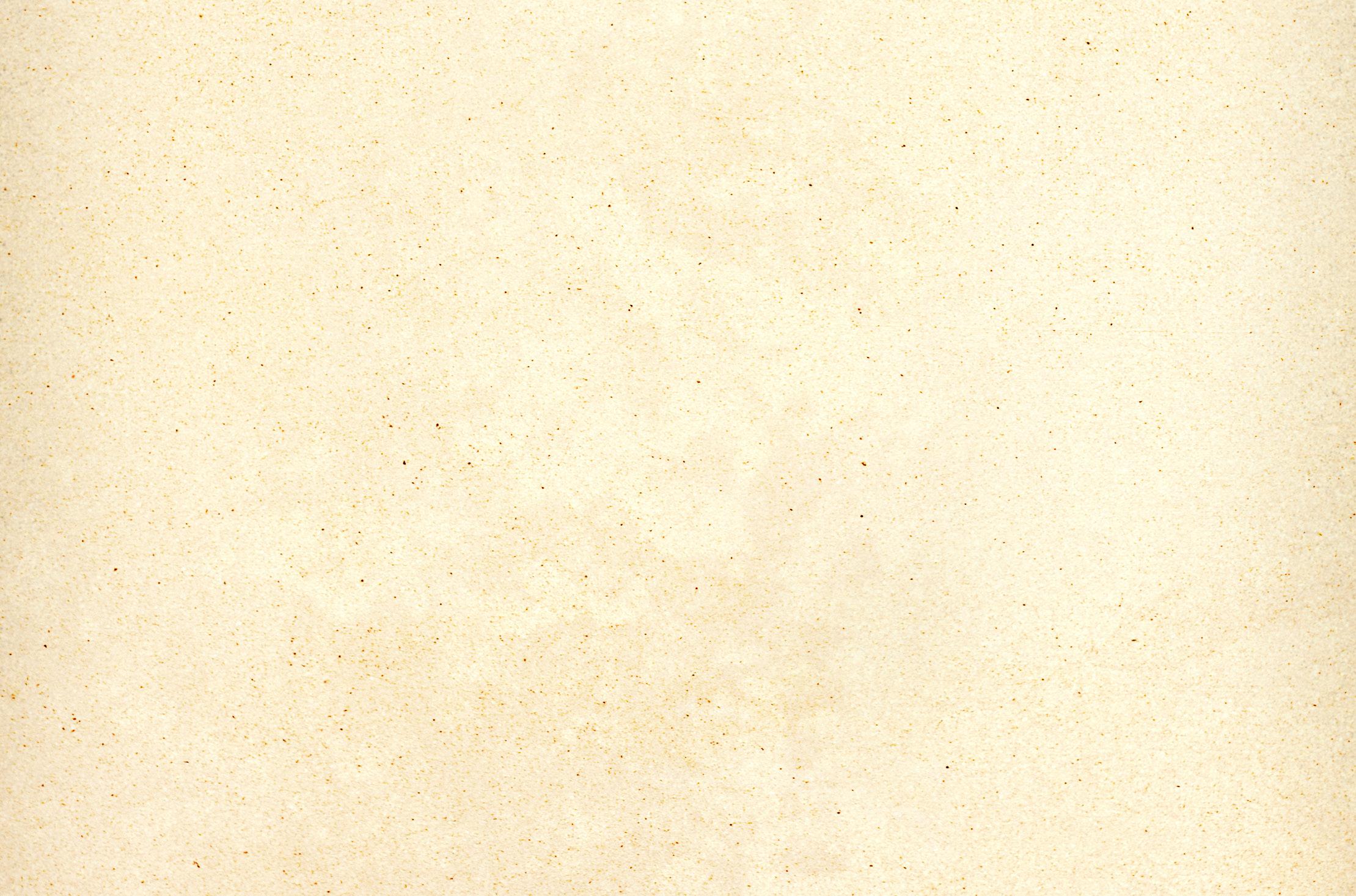
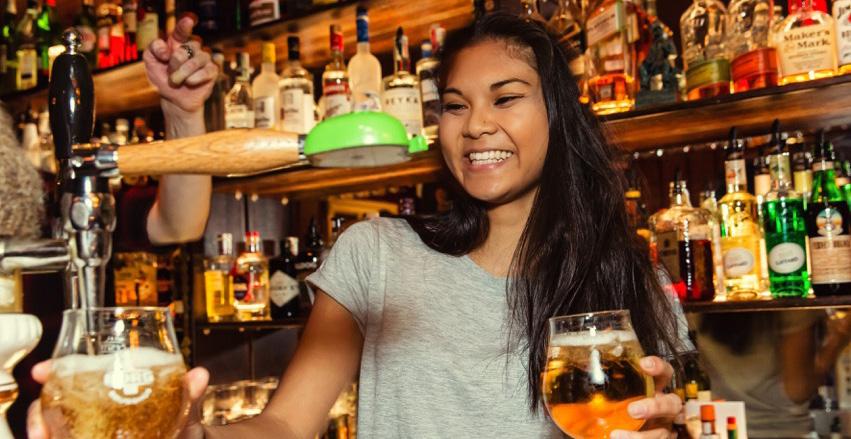


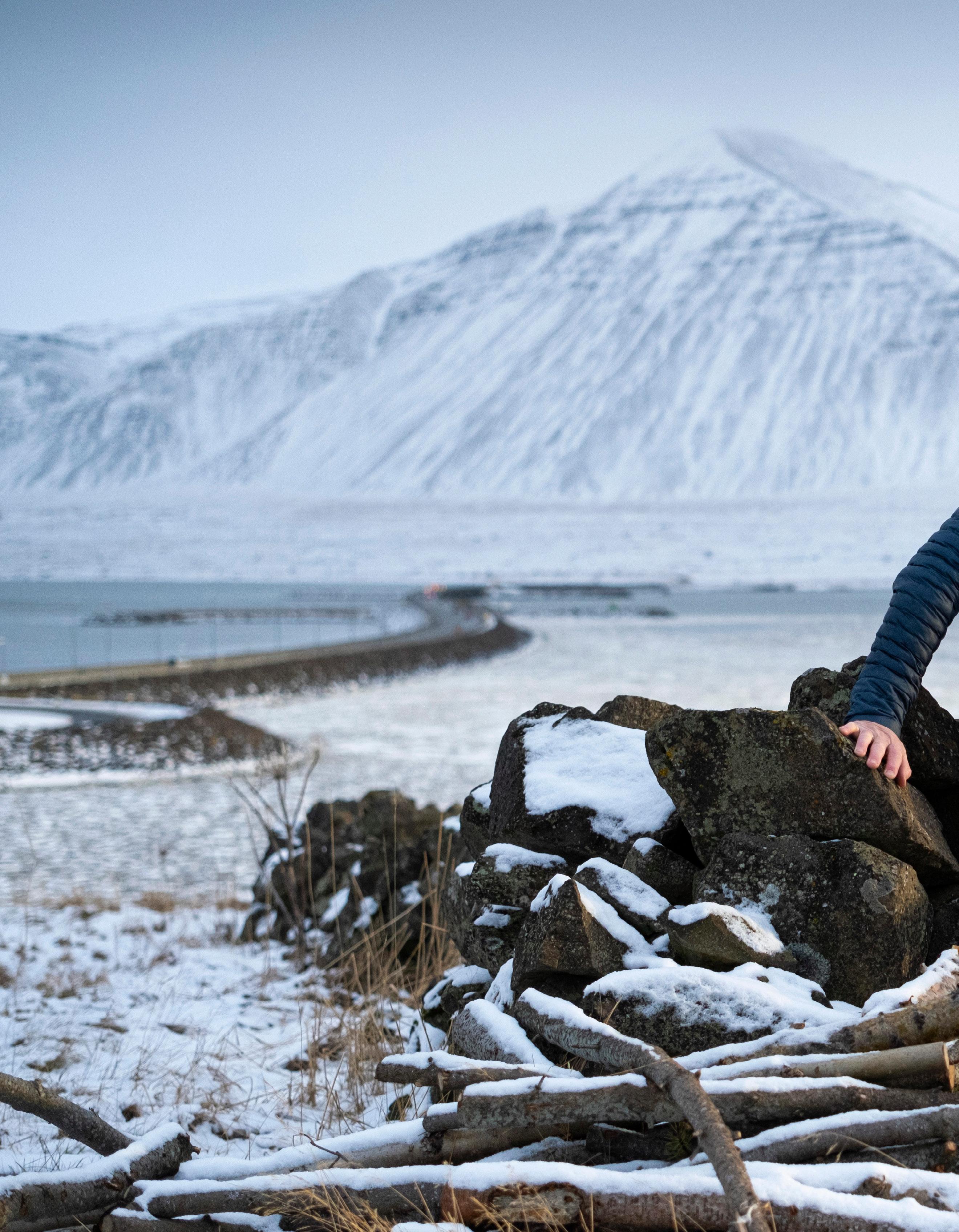 Words by Ragnar Tómas Hallgrímsson
Photography by Golli
Words by Ragnar Tómas Hallgrímsson
Photography by Golli
Gísli Einarsson must rank as one of Iceland’s most prolific television producers. When afforded the opportunity of stepping behind the camera and training his lens upon the world, Gísli’s audience saw the world not as it was – but as Gísli was: it took a true rustic, proud of his provincial manners and heritage, to make it to the national broadcaster in Reykjavík and focus our collective attention on the people of rural Iceland. This most domestically-travelled man in Iceland (such is his reputation) has now produced over 500 episodes for his TV series Landinn (e. The Local), and he’s recently staged a show on the subject of his own travels. This makes him, in the eyes of Iceland Review, the ideal interlocutor.
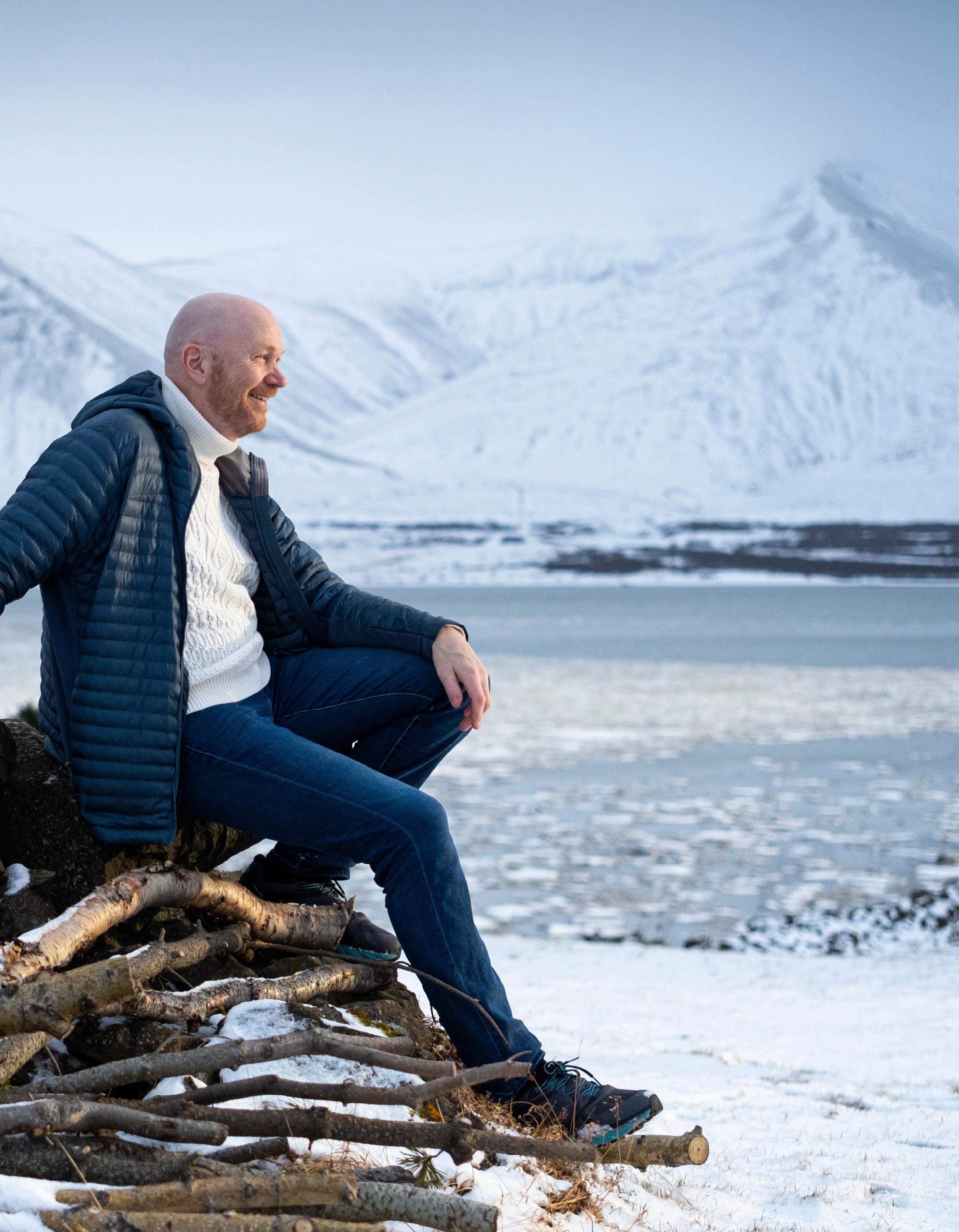
“WE DO NOT SEE THE WORLD AS IT IS, BUT AS WE ARE.” – ANAÏS NIN
“A little weird”
When we find Gísli Einarsson, he’s stepping out of his office in the corner of the high school building in Borgarnes, West Iceland. He works for the National Broadcaster, which is another way of saying that he must secure his livelihood by other means.
Among his current sidelines is a two-hour stand-up-cumstage-show, billed as an update to the famous Eggert and Bjarni’s Travels in Iceland, a book that was funded by the Danish crown and published in the late 18th century. (The title of the show is Gísli Einarsson’s Travels in Iceland – and Not Eggert and Bjarni’s.)

We’re in town to see it.
Gísli is red-bearded and bald, a slight hunch in his back, and wearing a nice, new-looking, white turtleneck sweater; he’s long since reconciled himself with his ungainly appearance and embraces his reputation for being “a little weird.”
When asked what exactly he means by this phrase, he retorts: “I look weird,” intoning his answer with the kind of good-natured self-deprecation that is, in his estimation, the key to good humour; if you’re going to take potshots with a funny gun – you best be prepared to spare a few rounds on yourself.
Gísli comes across as personable but slightly less jovial, at first, than I’d expected. (He’s always so upbeat on television and I worry he doesn’t like me.) As we stand there and shoot the shit, he regularly crosses his legs, as if he’s a schoolboy on the verge of self-urination. It’s an awkward stance, assumed to keep his blood pressure from plummeting, for he’s recently been diagnosed with PAF (Pure Autonomic Failure). “It’s a one-in-a-million diagnosis,” he observes, “and I’m often the one-in-a-million person to get that kind of thing.”
He’s got a point.
Gísli was born with a rather potent pollen allergy, the most impractical kind of pathology to have when growing up in the countryside. (He was useless during hay season.) City boys, he notes, were often sent to farms in the summer to toughen them up whereas he – runny nose and red eyes – was commonly evacuated from Borgarnes into the city. The loneliest four months of his life were suffered in Reykjavík.
Gísli doesn’t like talking about his illness, although openness has served to preempt any suspicious looks directed towards his pretzeled posture. It also, I imagine, helps to keep people on their toes in case he faints.
We ask him to pose in front of a big, picturesque window, right next to his office, which is like some sort of animated painting: framing the winding Borgarnes bridge, the stately Hafnarfjall mountain, and all the slow-moving rural phenomena dawdling through the snow-sprinkled landscape.

When asked if it’d be possible to turn off the lights, Gísli goes jogging down the hall. Why he’s jogging, I’m not sure, but I’ve heard stories of him passing out prior to gigs – he often MCs Þorrablót, traditional Icelandic winter celebrations featuring þorramatur (traditional Icelandic food) – and I worry that he’ll faint again.
Unfortunately for the content of this article, he doesn’t.
To capture Gísli in his native environment, we suggest that he strike additional poses in front of a few Icelandic turf houses located above the school building and visible through the grand window. The houses, we learn, are adjacent to a private property, and as Gísli models on a rock in the yard, the woman residing on said property, wearing a black tank top, voyeuristically snaps pictures of our subject through her window.
Quid-pro-quo.
We ask Gísli to show us around his hometown, someplace special , and he proposes Einkunnir: a hiking area just outside of town that is also popular among riders. As he drives, Gísli reveals that he was raised in one of the few horse-free farmsteads in Borgarnes.
“My grandfather’s brother was an avid rider and a heavy drinker, a dubious combination that led to his untimely death some decades back,” he says.
Gísli, too, has had his share of bad luck with the animals. When
he was 11, he leapt atop a wild horse during a roundup, fell off – and broke his collarbone. He’s a notorious klutz.
“Last fall,” Gísli begins, “I decided to paint the eaves and windows of a roundup hut.” Gísli clambered atop the hut, but the ladder was perfunctorily whisked away by the wind. Deprived of cell phone service, he realised that he’d have to jump down. He landed awkwardly and broke three bones in his instep. The hut, operated by the Travel Association of Borgarfjörður [which he helped to found two years ago], is only about the size of a Montenegrin basketball player.
At Einkunnir, Gísli leads us towards a scenic grove via a snowstrewn trail. We come across three riders, and one of them, a man by the name of Björgólfur Björnsson – who boasts an impressive beard and a fair face, like an ageing Viking – says hello.
“I wanted to thank you,” he says to Gísli. “I thought that your show was excellent. I don’t often laugh out loud, but I managed it once or twice this time.”
Gísli thanks the man sincerely, obviously flattered by his success in inspiring audible mirth from the stolid old timer, before striking up a conversation with the rest of the party. Taking note of one of the men’s bare heads, Gísli offers him his Tottenham Hotspurs cap.

“I’d rather die,” the man replies.
On our drive back to town, Gísli expands upon his enthusiasm for English football. He points to a roadside sign with which he and a friend took some liberties: “Tottenham Hotspur, League Champions 2022-2023.” It’s an optimistic divination, to say the least, for Spurs, who often display streaks of brilliance, have bungled every attempt at the league championship in their less-than-glorious career. (They currently sit fourth.)
“And you received permission for this, I suppose?”
“Nope, we just did it,” Gísli replies matter-of-factly. “Granted, the person who owns the sign wasn’t all that enthused – and the Liverpool fans, especially, have been rather upset about it. Which I’ve enjoyed.”
Back in Borgarnes, Gísli escorts us into Kaffi Kyrrð, a café whose interior is bloated with furniture: antique sofas, strange paintings, random knick-knacks – and New-Agey music flowing gently from the speakers. It feels like an apt metaphor for modern life: There’s way too much stuff going on – and everyone’s pretending to practise mindfulness.
Gísli asks the proprietors, an elderly couple who give us a warm welcome, whether they’re planning on attending tonight’s show. They say that they’ve yet to secure tickets but that they’re “definitely interested.” To my ears, this seems like the kind of thing that you say when you’re trying to be nice, but country folk, I later deduce, must be less duplicitous than their metropolitan counterparts. But that kind of deduction is mere urban bias.
We order coffee, and I inquire about Gísli’s favourite places in Iceland. He fires off a list of personal preferences (only a few of which I’m familiar with): the Hraunfossar waterfalls, Húsafell, the Kaldidalur valley, and on and on and on.
“My experience with foreign travellers,” Gísli remarks, “is that they’re often taken by things that we Icelanders don’t find all that special. They’ve opened our eyes to the black sand beach at Reynisfjara. I wouldn’t take tourists to the Gullfoss waterfall or Geysir; I’d show them the Snæfellsnes peninsula or other lessvisited gems.”
Gísli’s quite enamoured with old moss-covered lava fields (like Mother Nature laying down a saxony carpet on particularly rough flooring), and as a student of history, he often takes special note of human artefacts. Cairns. Old roundup pens. Etc. But anyone who’s spent any time with Gísli will soon begin to suspect that it’s the people that compelled him to circumnavigate our humble island so many times over, is the people He lights up around them like some kind of motion-detecting security light, but as opposed to hostile wariness – Gísli exudes a welcoming and engaging beam of rapt attention.
His greatest pride over the course of his career is having shone a light on Iceland’s country folk. His production of Landinn has yielded over 500 episodes.

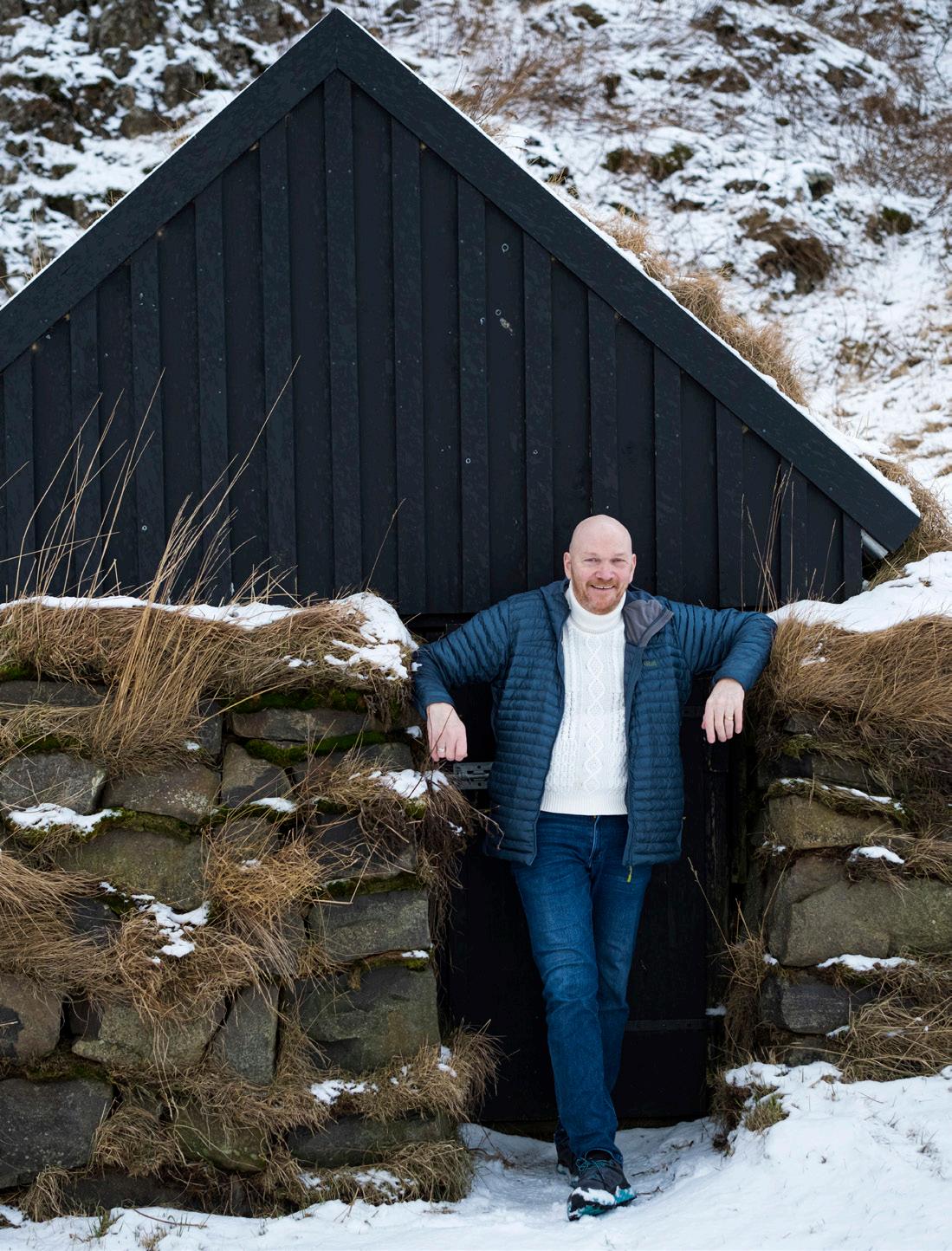
That’s Simpsons territory.
“I’m proud of having raised interest in rural Iceland,” Gísli observes. “I love reporting on passionate people doing interesting things – and, in turn, inspiring others to pursue their passions. I also love meeting kids and foreign residents who watch our programme to learn about Iceland. TV shows don’t make miracles, but they can have these small effects.”
“How would you describe Icelanders?” I inquire, curious if there are any far-fetched generalisations to be made about my kind.
“I don’t know,” he responds. “It’s these clichés; maybe it’s a bit difficult getting to know us. And we have this slight inferiority complex, too. I sometimes say that our problem, our defining quality, is that we’re rural folk trying to be cosmopolitan. We’re trying to shake off this stigma of being a small nation instead of embracing it. We’re competing with bigger countries on the wrong basis.”
I entertain a favourite theory of mine, most strongly evidenced by our fumbling overreach during the years leading to the financial crisis, namely that we’re “a nation of amateurs.”
“There certainly isn’t the same room for specialisation,” Gísli replies, “especially in rural areas, so we’ve needed to become quite versatile. People do their jobs while also volunteering for the search and rescue units or the fire brigade. But our smallness is our strength. Take me, for example: I manage to climb the media ladder, despite coming from a small town and boasting only a high school diploma.”
The subtext being: “If I can make it, anyone can,” although Gísli is probably selling himself a little short.
“The best thing about this job,” he continues, “is that you’re
afforded different perspectives. Travelling the country as a tourist, you often have rather superficial encounters. But as a journalist, you can dig a bit deeper.”
“What have you learned?”
“Just how great people are,” Gísli declares. “I love meeting people who can speak passionately about their pursuits, which I often have very little interest in to begin with – but which end up completely fascinating me. I also love discovering things that I didn’t know existed. There are still things that surprise me, even after so many trips around the country.”
“And I imagine that you’ve become less prejudicial?”
“Yes, me, of all people, with all my strangeness, should not be judging anyone. I celebrate diversity. And that’s changing in Iceland. We’re becoming a more diverse society. And we’re a tolerant people. I’m tolerant, too – maybe not regarding certain football clubs, but that’s neither here nor there.”
As previously noted, the premise for Gísli’s show is Eggert and Bjarni’s Travels in Iceland, an 18th-century text which was intended as a kind of scientific investigation of Iceland and its inhabitants. Although the book is ambitious and well-researched, Gísli maintains that some of the authors’ descriptions of Icelanders in different parts of the country are both brutally blunt and slightly dicey.
“Just like the book, we wanted to play on this idea that Icelanders differ from region to region,” Gísli explains. “By modern standards, however, Eggert and Bjarni took quite the liberty in their characterisations, so much so that, at times – it borders on hate
speech! The South Icelanders are described as ‘dirty losers and obnoxious degenerates.’ It’s quite hilarious, to tell you the truth, and it often smacks of academic snobbery.”
In his show, which is performed at the Settlement Centre in Borgarnes, Gísli cherry-picks excerpts from the book and pretends that he’s performing an update.

“But first and foremost, it’s a conceit to open the door to cheap humour,” Gísli admits. “Eggert and Bjarni’s work is slightly more elegant than my ‘update,’ and to this day the book still stands as an important scientific document – as a useful source when it comes to Icelandic cooking and farming, for example. I’m not sure how to categorise my show; it straddles the bounds of stand-up and theatre.”
“And do the authors’ observations rhyme with your own experience of Icelanders?”
“I wouldn’t say so – but there are things that seem apt. People from Þingeyjarsveit, for example, are proud of how proud they are. The people of Skagafjörður are party animals. But a lot has changed since Eggert and Bjarni travelled the country. People have become more intermixed.”
That same evening at the Settlement Centre, at about 7:30 PM, Gísli slips into a cramped side room near the entrance and insinuates
himself into his costume. He puts on a white, puffy shirt (the kind made famous in the fifth season of Seinfeld ); a grey vest; grey trousers; and knee-high socks, which he pulls all the way up to his blue boxers, directly below his paunch. He then proceeds to tie a buckle over his dress shoes.
Once Gísli is dressed, his daughter applies makeup, daubing some matte substance on his head to keep his cranium from blinding the guests.
“Are you the miracle worker who makes him look presentable?” my colleague inquires of Gísli’s daughter.
“I wouldn’t say good – but definitely better,” she responds. Moved by this exchange, Gísli recalls being absolutely roasted for wearing capri pants and high socks on television. His daughter butts in.
“I think it was mostly the socks,” she says, in that charmingly embarrassed tone that children so often adopt around their parents. “We have ankle socks now, you know?”
“Yeah – but they do nothing for me,” Gísli replies, unfazed. Just before 8:00 PM, a crowd of almost 100 people are gathered in the loft of the Settlement Centre, seated in two rows on either side of the roof. It’s mostly senior citizens, but there are also a handful of people situated, probabilistically speaking, further from the grave.
There’s a glass box in the middle of the stage, containing
I’m tolerant, too – maybe not regarding certain football clubs, but that’s neither here nor there.”


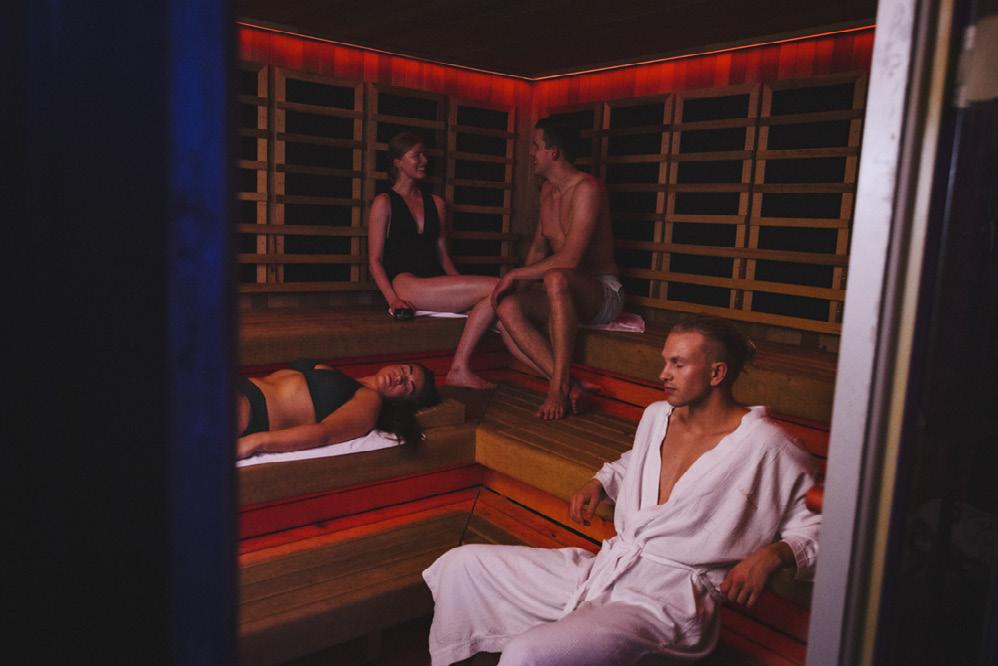


“We’re losers, narcissistic louts, but it’s important to note that we’re not all the same. We’re a diverse group of losers.”
the original manuscript for Eggert and Bjarni’s Travels in Iceland, or so the audience is led to presume When the lights go off, the refined voice of an elderly woman addresses the audience over the speaker:
“In 1752, the scientists Eggert Ólafsson, a naturalist, and Bjarni Pálsson, a doctor, received a subsidy from the Danish crown to document the living situation of the Icelanders for the purposes of proposing improvements. The conclusion of their research was introduced in the book Eggert and Bjarni’s Travels in Iceland, which was published first in Danish in 1772. It wasn’t translated into Icelandic until 1943, and there’s no denying that the book is one of the most distinguished publications about Iceland that has ever been written.
Once the woman stops talking, the door to the loft flies open –and Gísli Einarsson walks in, to rapturous applause.

“The thing is,” he begins, “Eggert and Bjarni were only here for about five years. And not even five years – five summers! They were no different than your average high-season tourists! I, however, have conducted my investigation for 25 years straight. I’ve crisscrossed the country, back and forth – and back again. I’ve mixed with the people, I’ve mixed drinks – but I haven’t received a penny from the Danish crown. Not a single penny!”
He pauses.
“But the biggest difference between Eggert and Bjarni and me, aside from the fact that there were two of them and only one of me – which is two times the difference – is that they published their findings in Danish. And here we are complaining about immigrants not speaking Icelandic! Come on.”
“It’s right to point out that by publishing in Danish,” the old woman interjects over the loudspeaker, “Eggert and Bjarni reached a much larger audience. At the time, Icelandic was only spoken by a negligible number of souls – and read by even fewer.”
The crowd laughs, and Gísli, to spite the old woman, switches to Danish. He clears his throat – and launches into a passionate and guttural spiel. And then he stops short.
“You just can’t do this to other people,” he says. “It’s physically impossible to speak Danish for two hours straight. If I were to try –I’d have to have my tonsils removed during the intermission.”
When the laughter dies down, Gísli continues his commentary on Eggert and Bjarni’s work.
“A lot has changed since they were here. To understand who we are, we need to understand where we came from. It’s been claimed that Iceland’s first settlers were Vikings – but that’s not true. They were just some random people. In 874, Haraldur Fairhair sent his subjects a letter notifying them of tax hikes and interest rate hikes and so all the literate people fled the country. They were forced to return 300 years later – for someone had to write the history of the Scandinavian kings.”
Gísli says many humorous things over the course of the evening, and as he riffs on the Icelanders’ quirks, one is tempted to generalise, halfway through the show, that one of the lessons from all of Gísli’s travels is that whatever regional eccentricities the Icelanders had evolved by the middle of the 18th century have mostly been phased out in modern times; extrapolating on that trend, one might be tempted to surmise that whatever idiosyncrasies differentiate the Icelanders from the rest of mankind today, will likewise be phased out over the coming decades; our differences belie our similarities – and history always rhymes. “We are, in reality, refugees,” Gísli declares. “We’re genetic refugees – who flee so often that unpacking our bags is barely worth the effort. We’re losers, narcissistic louts, but it’s important to note that we’re not all the same. We’re a diverse group of losers. We’re all kinds of wimps.”
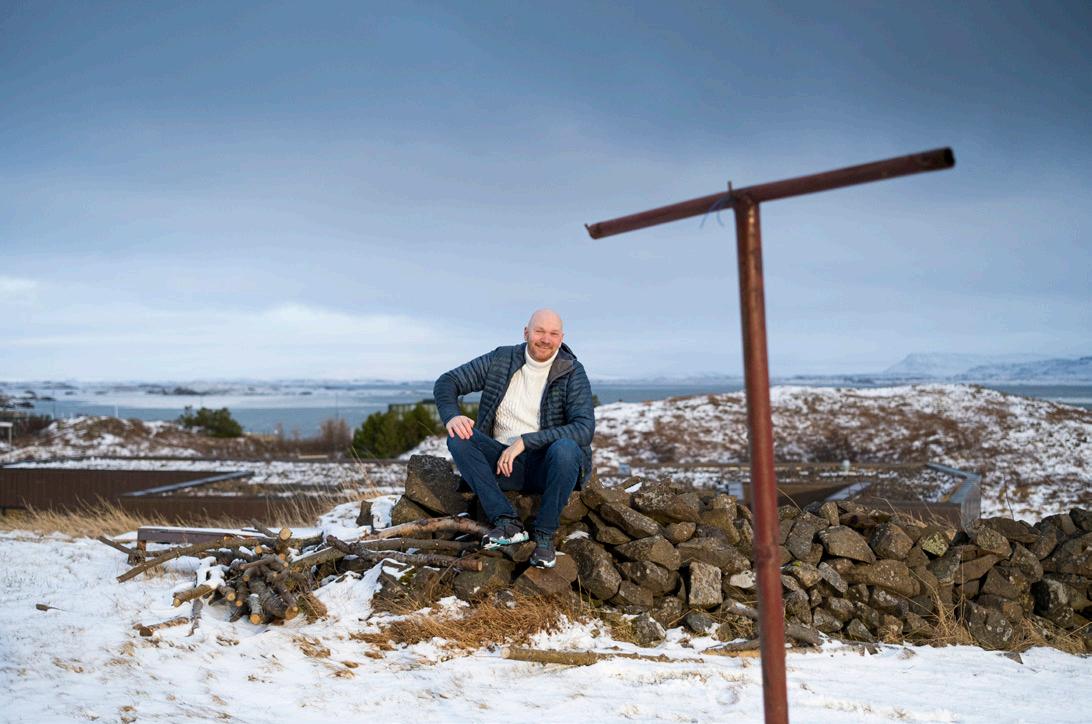
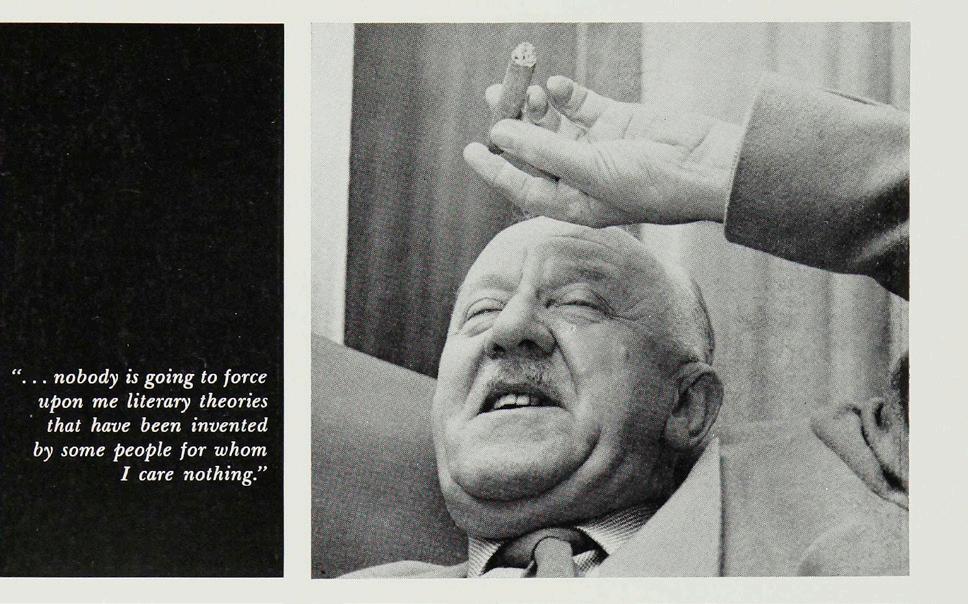
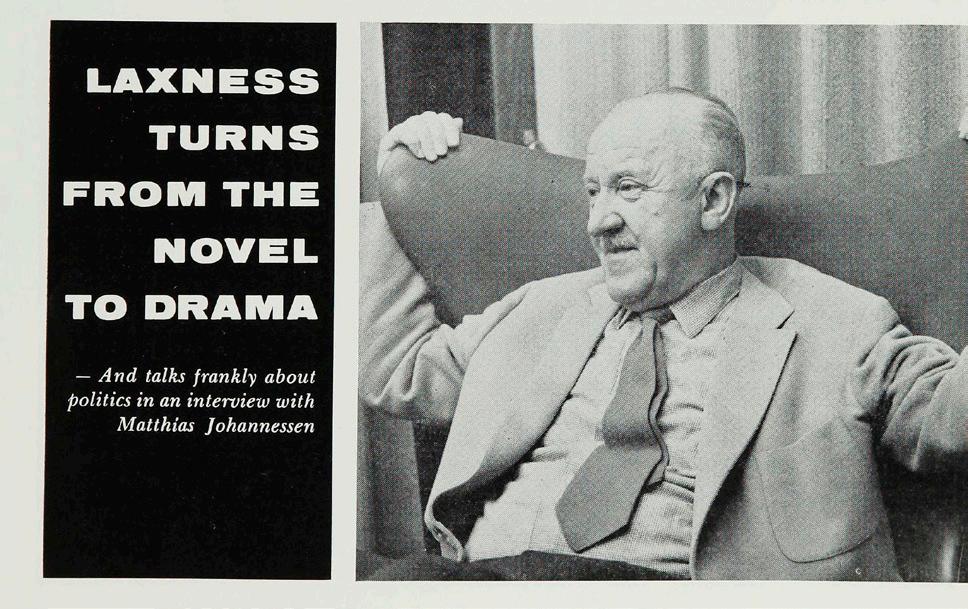

This year, Iceland Review celebrates its 60th anniversary. To commemorate the occasion, we’ve dug deep in our archives to bring you some highlights of Iceland’s history, through the eyes of contemporary journalists and photographers.
Words by Zachary Jordan MeltonHalldór Laxness was not just one of Iceland’s most celebrated authors –today, he is still the only Icelandic writer to ever win the Nobel Prize in Literature. He received this honour in 1955, but his storied career began long before and
extended long after. In total, he published approximately 62 works in 68 years.
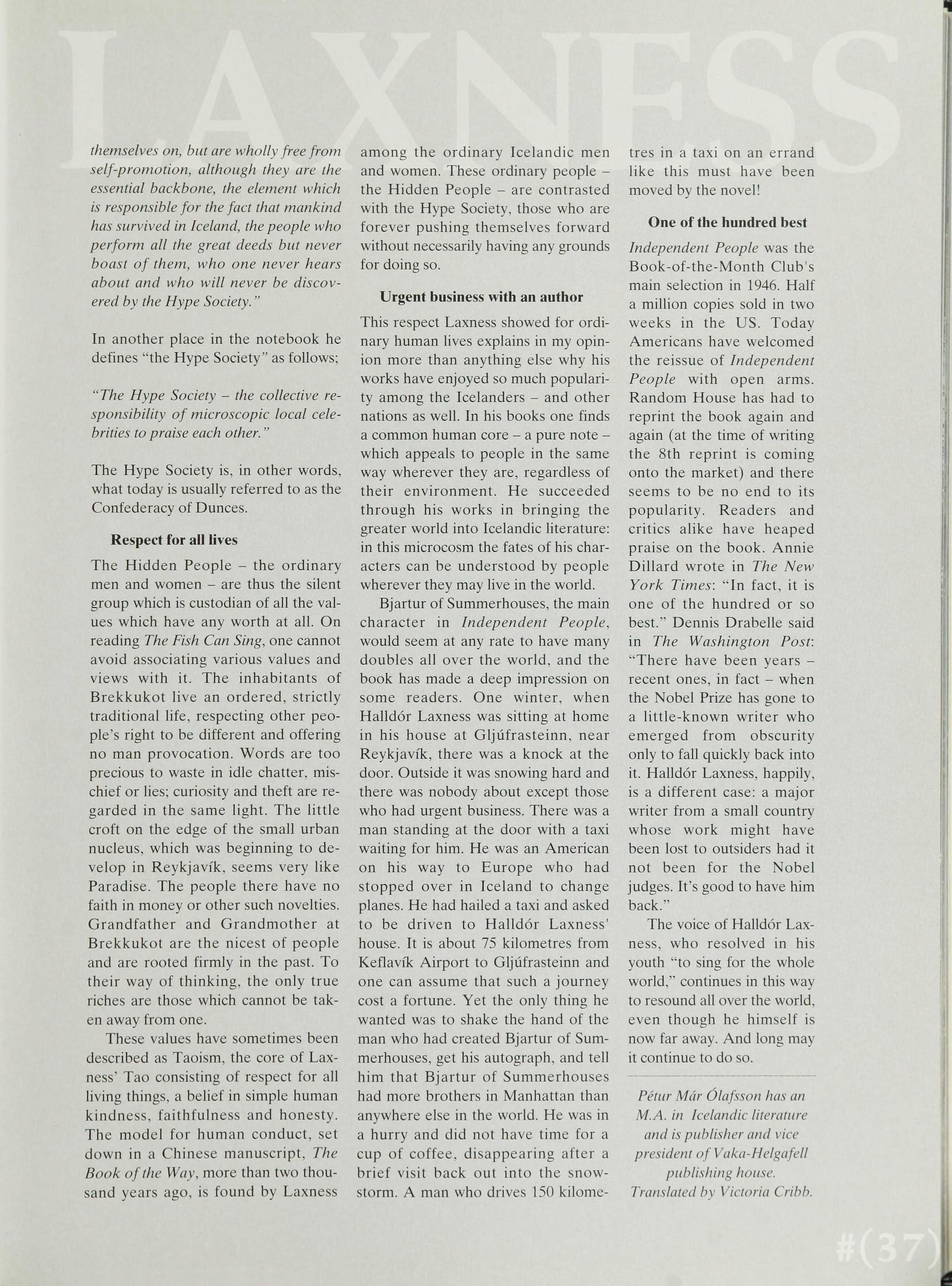



Laxness published his first novel, Barn náttrúnnar (Child of Nature) the year after the First World War ended. He briefly joined a monastery in Luxembourg

before moving to the United States in 1927, where he attempted to write scripts for Hollywood films. During the 1930s, Laxness established himself as a literary powerhouse, publishing Salka Valka in 1931 and Sjálfstætt fólk (Independent
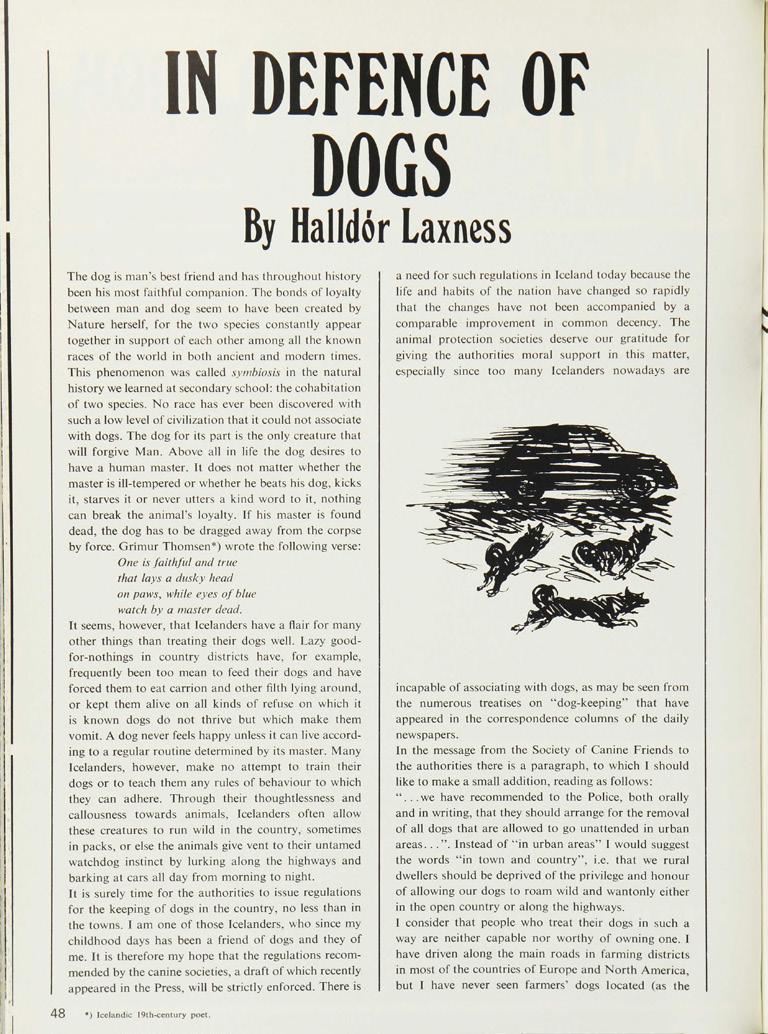
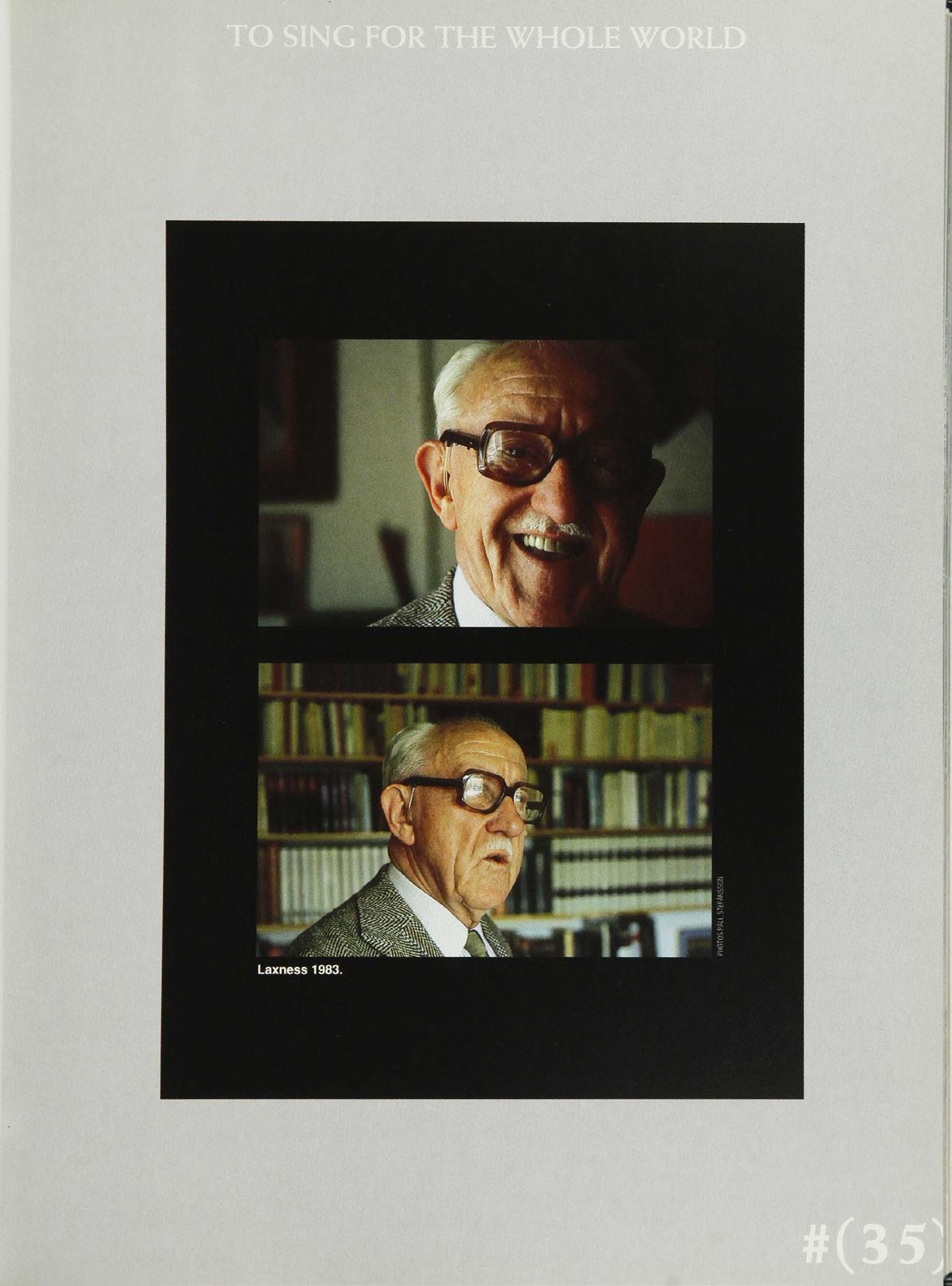





People) in 1934.
The author was no stranger to controversy. He was detained in the U.S. after criticising the country in a Canadian newspaper. He praised the Soviet Union after visiting during the 1930s.

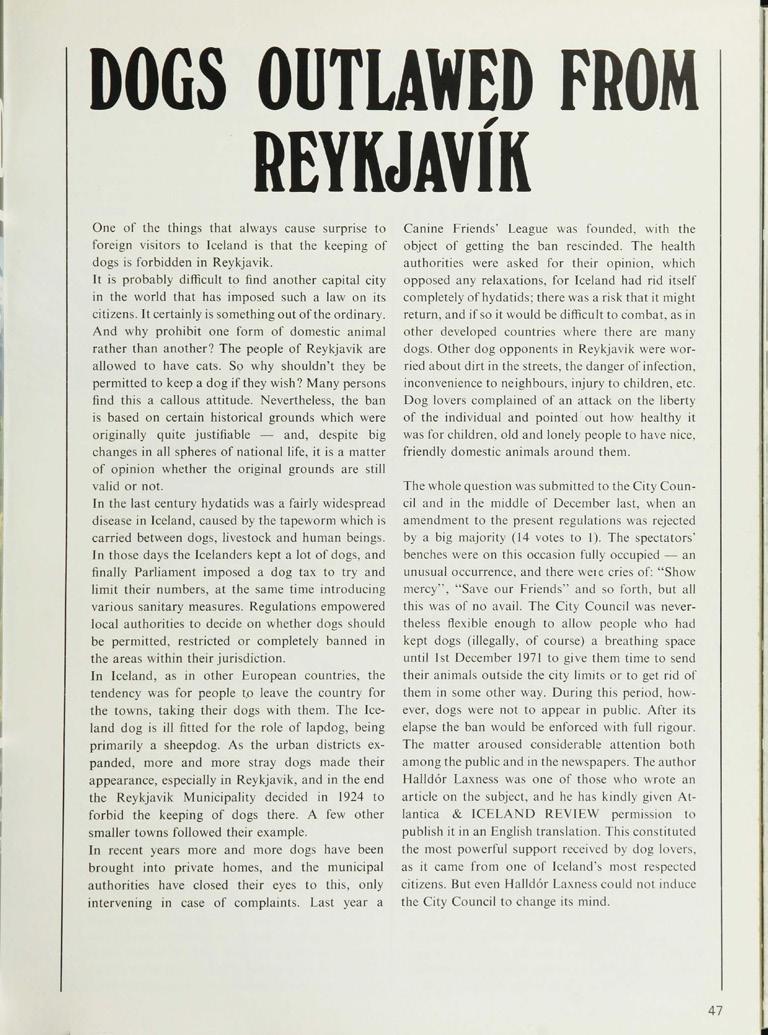
His translation in Icelandic of Ernest Hemmingway’s A Farewell to Arms bothered his fellow Icelanders because of his idiosyncratic use of the Icelandic language. He ruffled even more feathers when he published medieval Icelandic
sagas, not in the traditional Old Norse language but using modern Icelandic spelling, a move considered sacrilegious by contemporary scholars.
Laxness turned his attention to drama during the 1960s, though he still


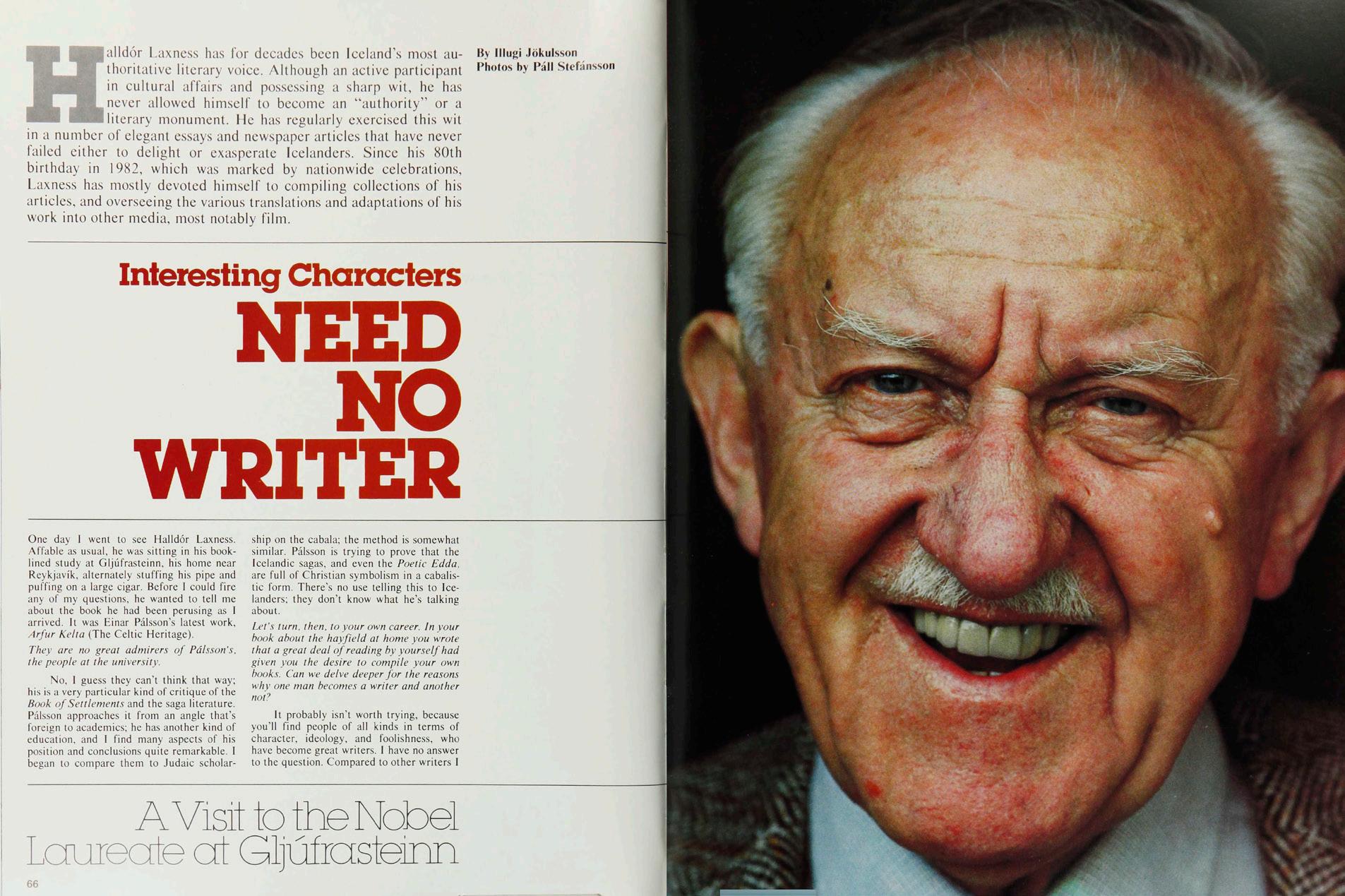





continued to publish novels. One of his most beloved books, Kristnihald undir Jökli (Under the Glacier) was published in 1968. He only published two more novels in the 1970s but continued to write essays and memoirs before the effects of Alzheimer’s disease slowed him down. Laxness passed away in 1998 at the age of 95. His home in Mosfellsbær, Gljúfrasteinn, has been converted into a museum where visitors can learn more about Laxness as a writer and a person.
Although he later became disenchanted with the Soviet Union, Laxness appreciated the socialist ideal of taking care of the small, everyday people. His books, especially Independent People and The Fish Can Sing reflect these concerns: respect for living things and a belief in simple human kindness and honesty.
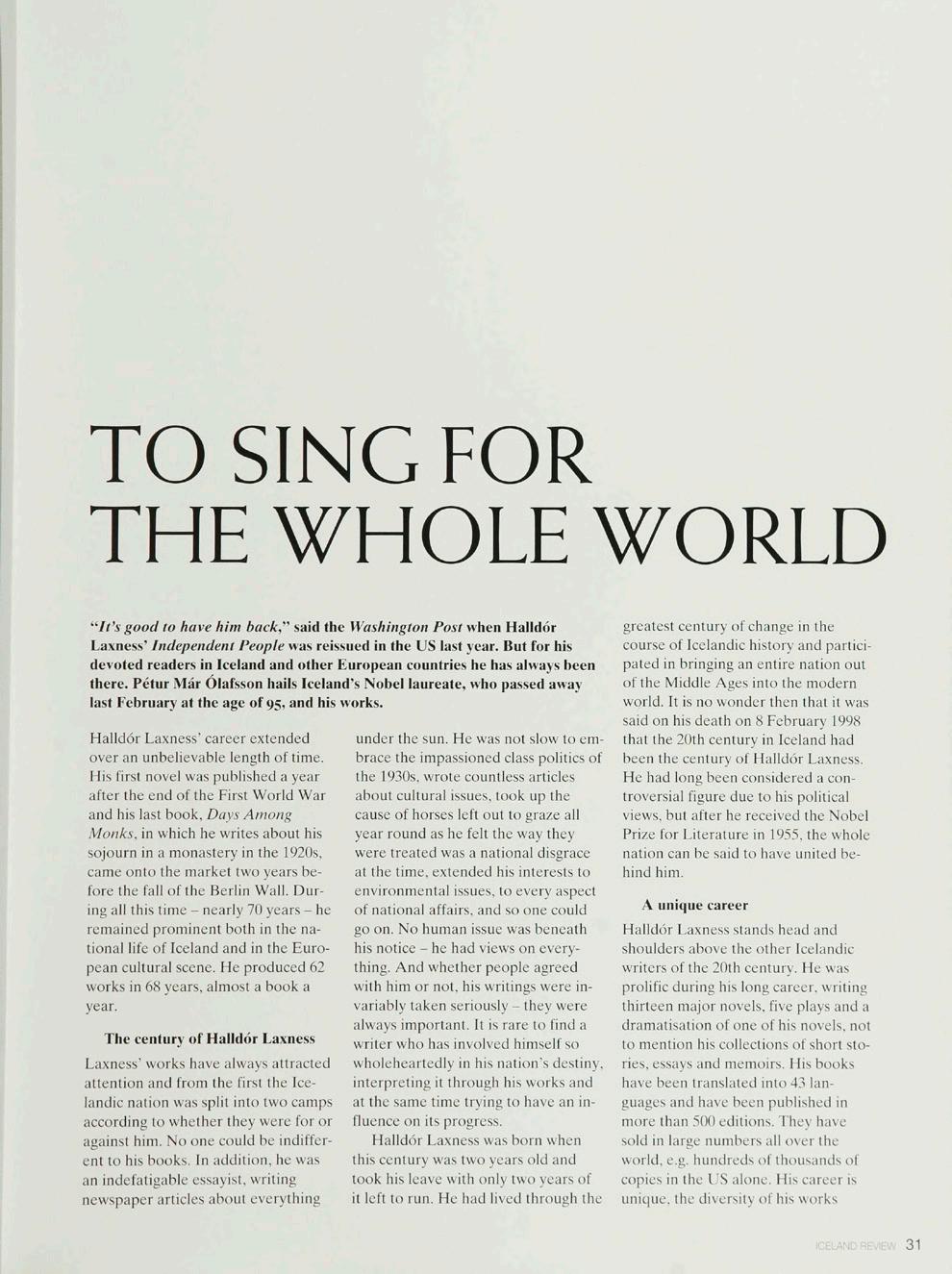
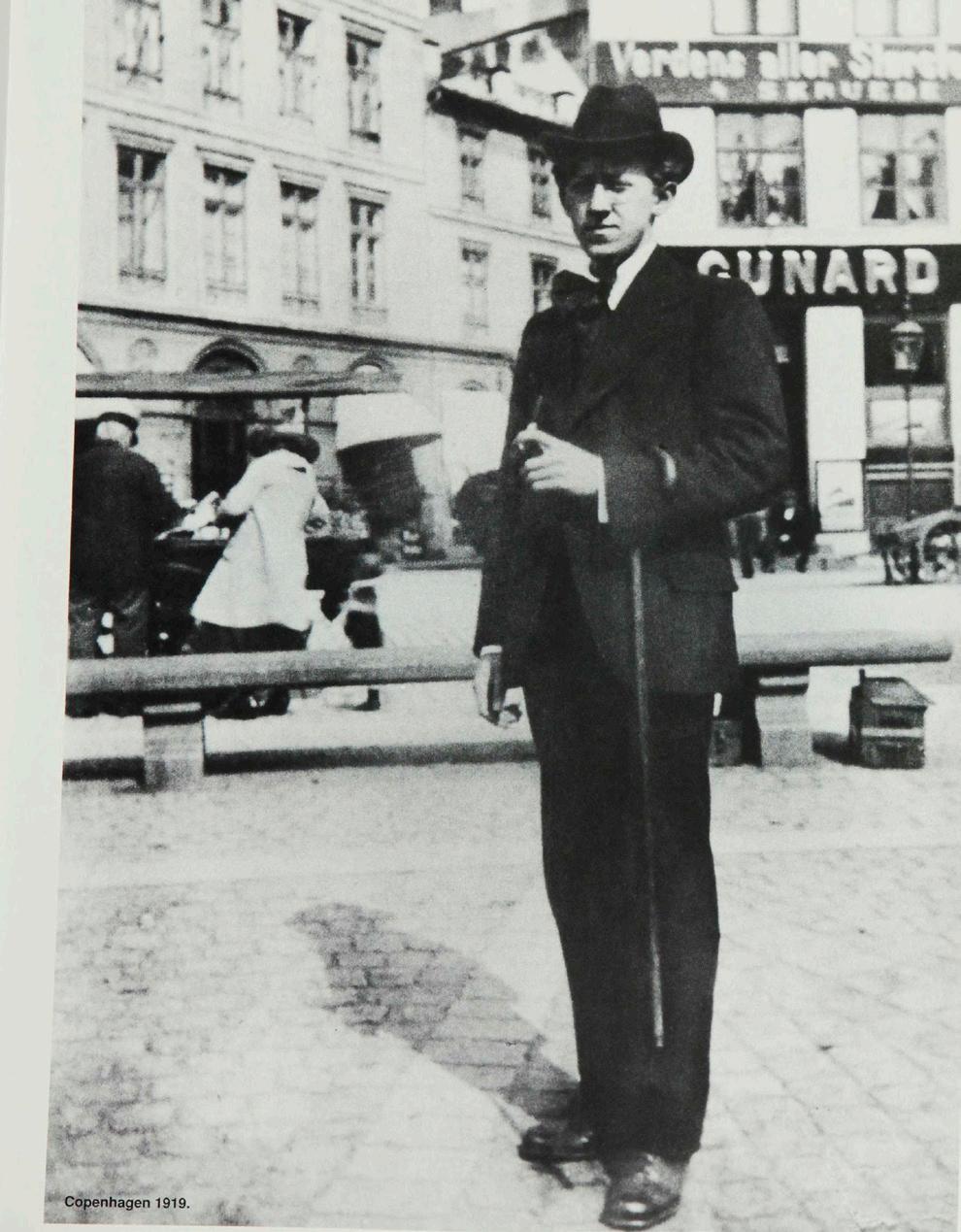
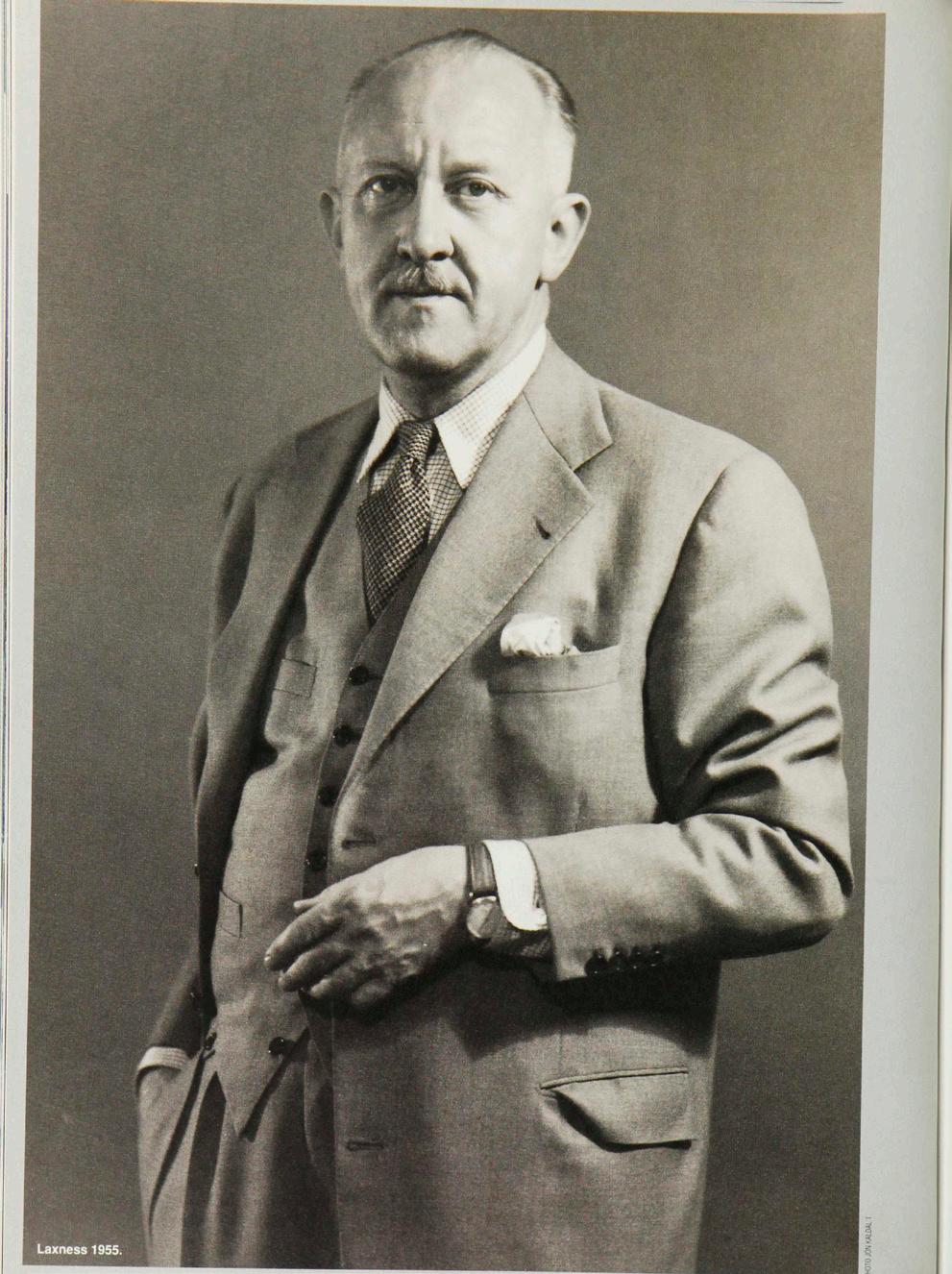





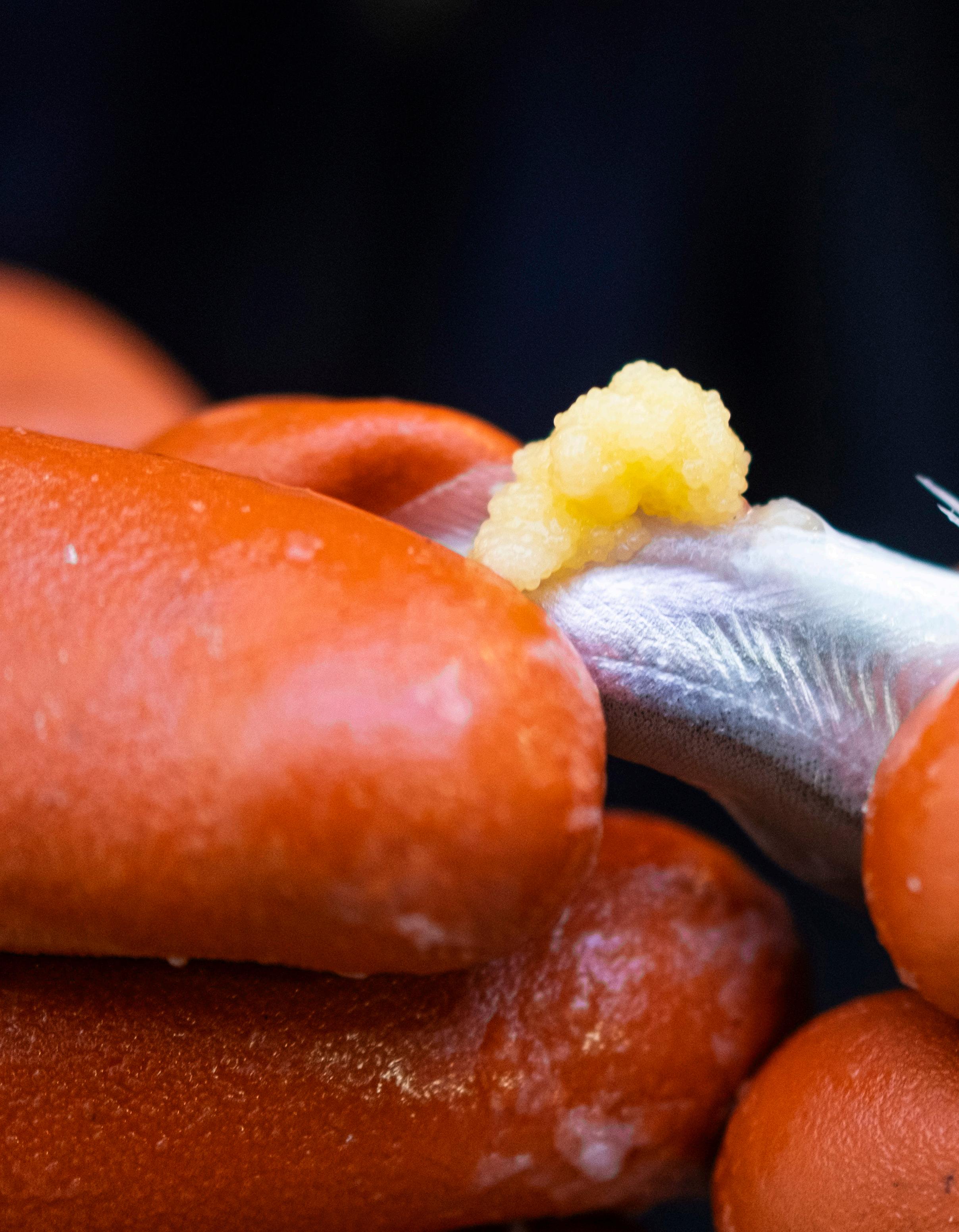 Photography by Golli
Photography by Golli

In 2021, when a lower capelin quota was issued in Iceland than had been anticipated, Landsbankinn bank lowered its GDP growth forecast for the year from 3.4 to 3.3%. Capelin may be a little fish, but as a key food source for many other marine species, it makes a big impact on Iceland’s economy and ecology. Commercially, capelin is one of the most important fish stocks in Iceland, accounting for around 13% of export earnings. Only cod brings in more, and it bears pointing out that cod is also dependent on capelin, which may account for up to 40% of its total food.
Stocks of capelin in Icelandic waters have been volatile, making it difficult to predict or plan fishing seasons. The fish have a short life cycle, procreating only once before their ultimate demise, which makes the stock vulnerable to overfishing and changes in the marine environment. In 2019 and 2020, in accordance with the recommendations of Iceland’s Marine Research Institute, no capelin quota was issued at all, while last year’s catch amounted to nearly 600,000 tonnes. In recent years, however, capelin catch has averaged around 350,000 tonnes annually. The bulk of the quota is caught during four weeks in spring.

Capelin is often described as the most ecologically important fish species in Icelandic waters. It is the main source of food for Atlantic cod (another commercially important species in Iceland), and is also a food source for whales, seals, squid, mackerel, and seabirds.

Icelandic boats began fishing capelin in the late 1960s when herring stocks in Icelandic waters collapsed.
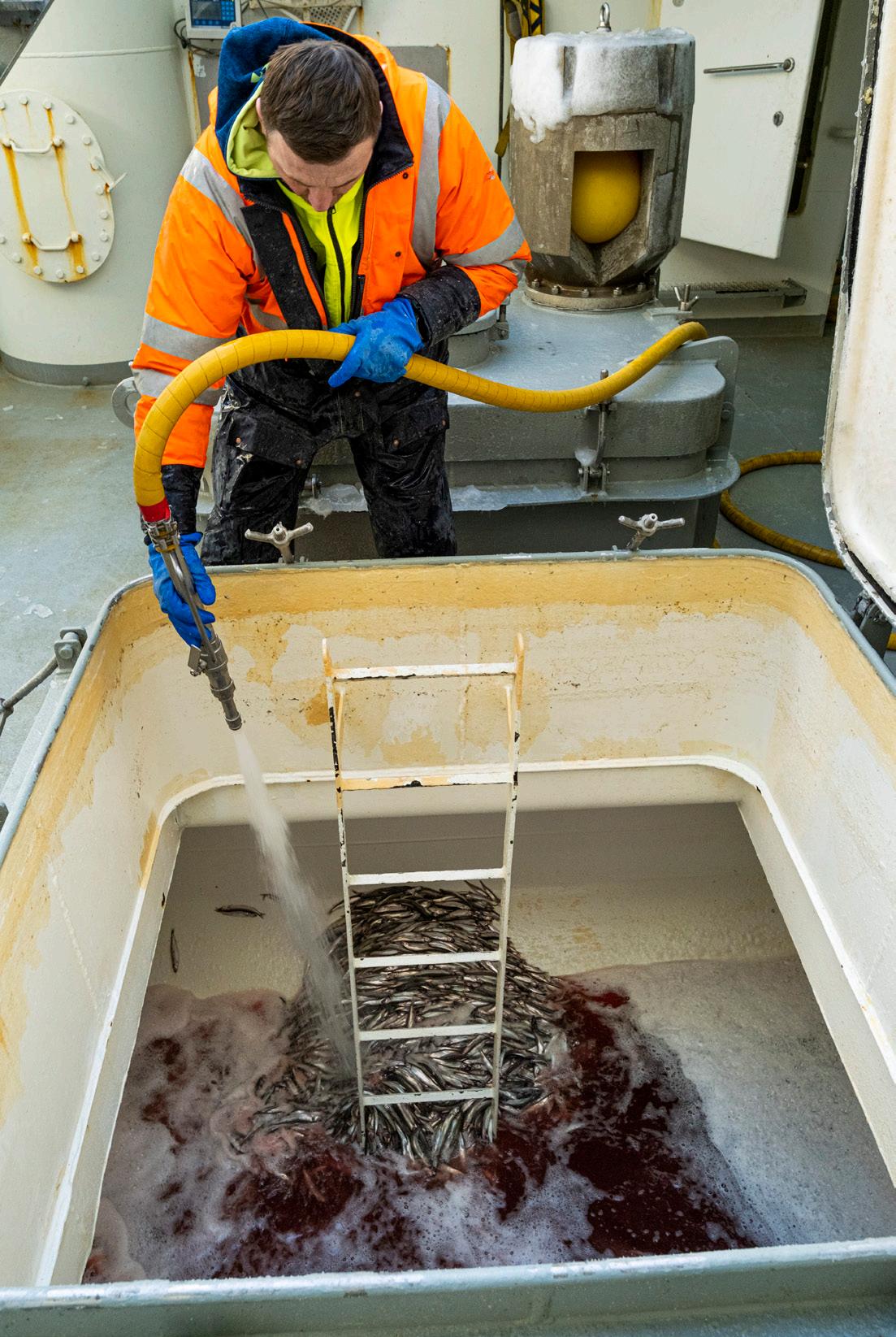

Capelin is a small forage fish belonging to the smelt family and is found in the North Atlantic, North Pacific, and Arctic oceans. It is silver in colour and usually measures between 15-18 cm long [6-7 in].
About 80% of capelin caught in Iceland is used to produce fishmeal and oil, while a small amount (less than 20%) is used to produce roe for human consumption. The roe, called masago, is yellow in colour and is popularly used in sushi.
Icelandic fishing boats caught some 477,000 tonnes of capelin last season, the full quota issued. This included around 20,000 tonnes of roe. The total value of the catch is estimated at around ISK 4245 billion [$305 million, €280 million].
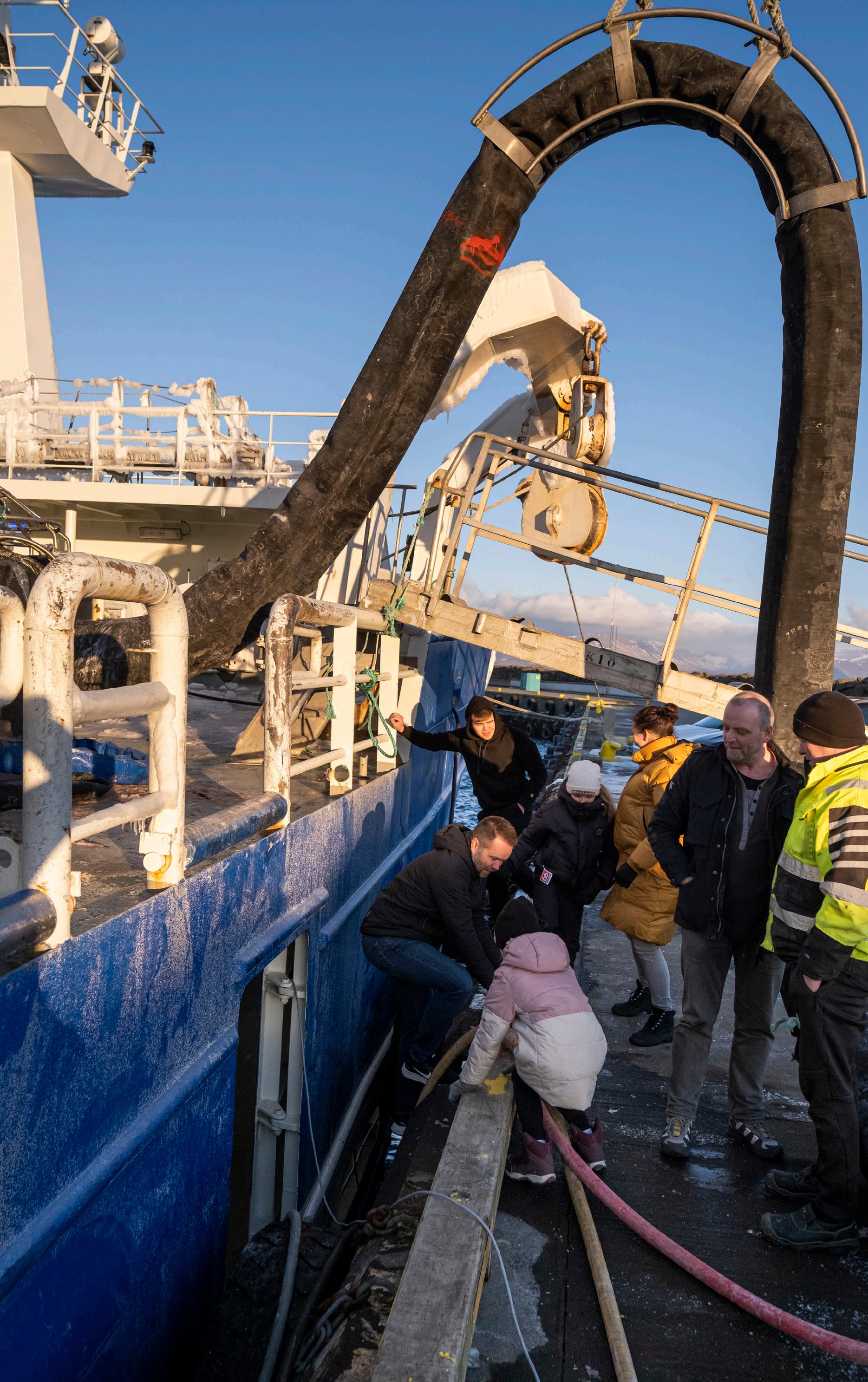
Up until the early 80s, Icelanders sometimes caught over a million tonnes of capelin in a single season.
Despite being common in Icelandic fishing nets, capelin is not normally sold in local stores. Hólmgeir Einarsson, a seafood store owner in Reykjavík, decided to stock some this year and has so far sold over 200 kilos [440 lbs]. He says the primary purchasers have been immigrants, who are familiar with the fish from abroad. Some Reykjavík restaurants are also discovering this important fish.
Icelandic capelin migrate seasonally.
In spring and summer, they go north of the Icelandic mainland to feed in the plankton-rich waters between Greenland, Iceland, and Jan Mayen.
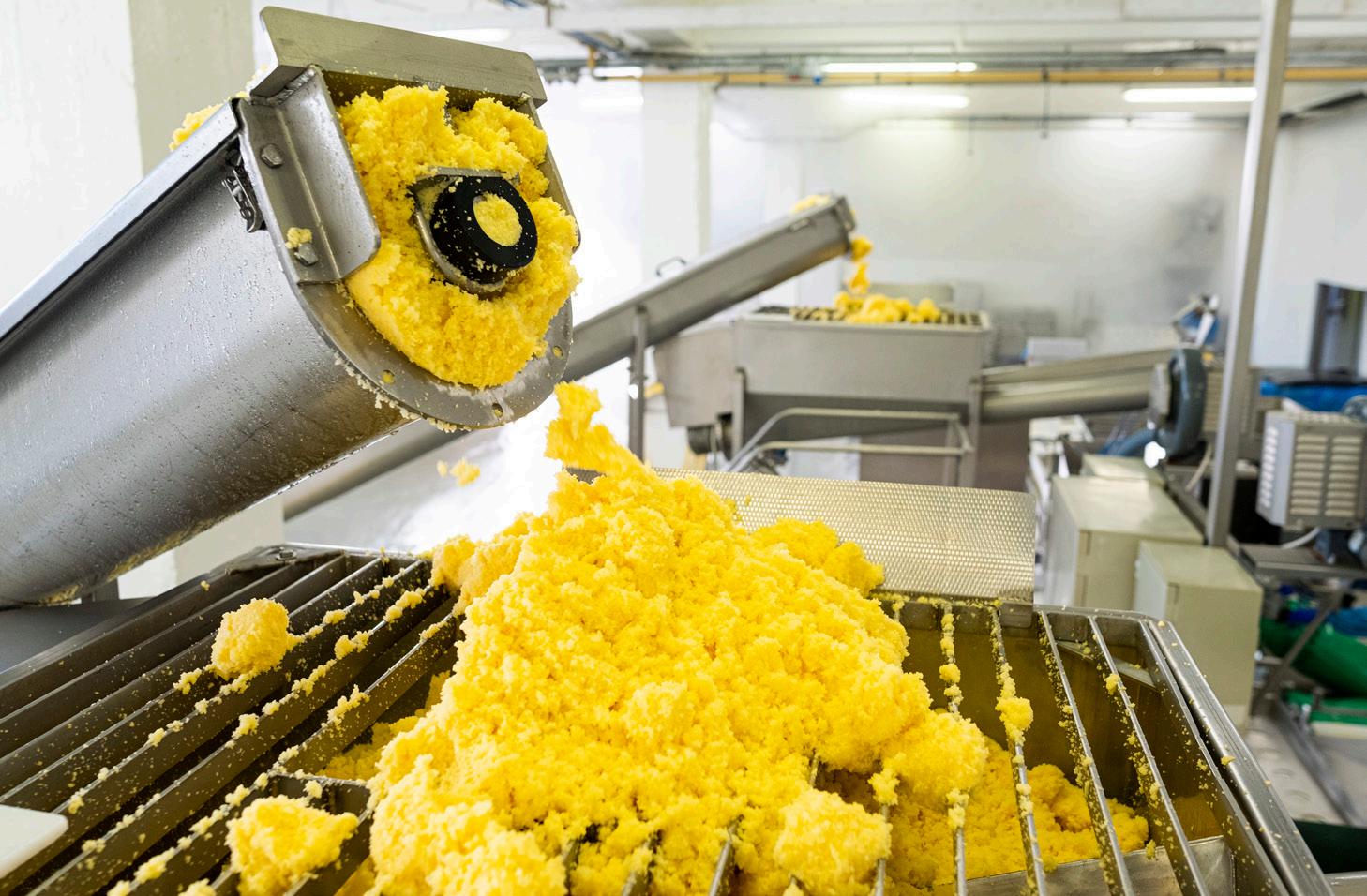
Due to rising sea temperatures, capelin has moved further north in search of colder waters. Young capelin now tend to dwell near and under the sea ice around Greenland, making stock sizes difficult to assess.
Climate change and changes in the ocean’s temperature have a direct effect on capelin behaviour. It’s one of the most direct effects of climate change Icelanders can expect in the coming years.


The capelin season takes place in February and March. The window to catch roe-filled capelin before it spawns is even shorter, only around 20-25 days. In that time, a sailor on a capelin fishing boat can expect to earn an Icelandic worker’s annual salary. That is, if capelin catch quotas, and the weather, are favourable that year.

The Icelandic 10-króna coin features four capelin.
Most capelin die after spawning at the age of 3 or 4. The oldest capelin ever found was a 10-year-old female off the coast of Newfoundland, Canada.
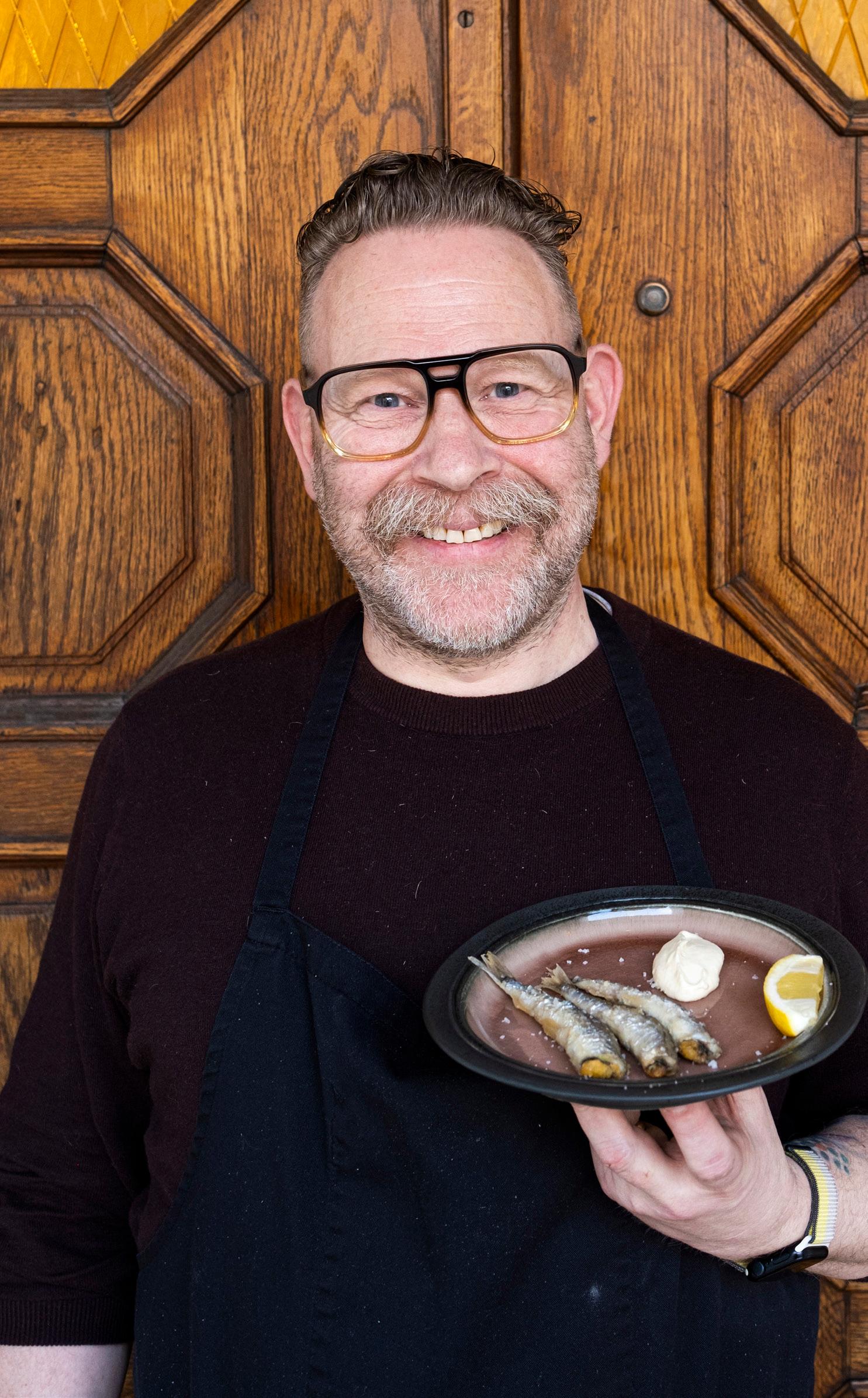


A bright, mild, late-summer Sunday greeted the festive locals in the Borgarfjörður region of western Iceland who flocked from far and wide to take part in the Þjóðminningardagur, National Heritage Day, in early August 1898. The popular festival featured a variety of events, including traditional sporting competitions, poetry readings, speeches by noted Icelanders and, perhaps most remarkably, waltzes danced to mechanical music. To the loud, clanging machine-driven tune of a curious large wind-up music box called a calliope, couples young and old swayed and danced joyfully to Johann Strauss’ Radetzky’s March, a catchy waltz tune popular to this day. Other favourites included Hip Hip Hurrah March and Die süßen kleinen Mägdelein.
Before the global dominance of Edison’s audio recordings that came to be known as records, this fascinating machine allowed popular music to be played to crowds in the same way we think of 19th-century street organ grinders. The mechanical wonder was generously loaned to the festival by a somewhat mysterious and clearly wealthy foreigner who had recently moved to Hvítárvellir, a nearby farm
located on the banks of the mighty Hvítá river: the Baron Charles Francois Xavier de Gauldrée-Boilleau.
A fresh new breeze
Hvítárvellir was one of the finest and most productive Icelandic farms at the turn of the century, with many fertile acres of pastureland, dozens of dairy cows, hundreds of sheep, and access to the plentiful salmon in the Hvítá river. The estate was sold to the baron for the modern equivalent of nearly one million US dollars, an unheard-of price even for such a renowned estate. Apparently, he made no attempt to negotiate the price. At the baron’s behest, the farm immediately underwent extensive and costly modifications. In a matter of months, a new wooden building was constructed as living quarters for the farmhands, which was a huge improvement over the turf and stone huts in which most of them had grown up.
Among the modifications the baron introduced were a wide range of new machines that were imported and employed, including a mechanical mower, a hay baler, and an odd device that was meant to flatten the bumpy land by tearing up frost tussocks – a
familiar geographic feature of Icelandic pastureland. Farmhands’ wages were paid in cash, which was a rarity in those days. The baron demanded to be acknowledged with proper respect at all times; in his presence male farmhands were expected to doff their caps while women were meant to curtsy. The baron insisted on personally approving every hire because he believed he could determine the applicant’s trustworthiness simply by looking deeply in their eyes.
The locals were surprised and delighted when the esteemed Baron Bolló, as the locals dubbed him, showed up unannounced at the festival’s reception tent, dressed in exquisite riding gear and casually smoking a Russian cigarette. He was accompanied by a good-looking young man in a suit and tie who he introduced as his cousin, Richard Lechner, whom the locals soon began referring to as the count for no other reason than he was associated with the baron. The foreign pair spoke together in German but made praiseworthy efforts to speak to the festival officials in Icelandic. The dashing foreigner with the lofty noble title asked if he might be permitted to partake in their festivities, which would
be completely unprecedented and was immediately approved. Curiosity piqued as the baron registered for the annual horse race.
Foreigners, often wealthy Englishmen, were not unknown in West Iceland at the time but were generally considered eccentric if not arrogant, mostly keeping to themselves and ignoring the locals. That such a notable figure as a baron would deign to join the Icelanders in their local gala and even compete in a horse race was welcomed with giddy anticipation.
His background and reasons for moving to Iceland were largely unknown, but the charming baron, who had become their neighbour just weeks before, had already garnered a reputation for being a progressive and cultured man of vision and conviction. He expertly mounted his beautiful stallion and trotted in perfect tact to the starting line, deftly demonstrating his riding prowess. Hundreds of dismayed onlookers watched as the baron was first to cross the finish line and became the horse race’s undisputed winner. While most cheered the victorious foreigner, some chagrined locals were understandably humiliated, grumbling that the wealthy foreigner must have fed his horse some special foreign fodder to defeat them so handily.
As Baron Gaudrée-Boilleau accepted his award for placing first in the horse race, speculation about just who this man was and where he came from was on everyone’s lips. He was thought to be French based on his name and general appearance, but he had come to Iceland from the Bavarian city of Munich and spoke flawless German with his so-called cousin, Richard. Letters addressed to him, however, came regularly from the United States, which led some to assume he must be American. According to the farmers who sold him Hvítárvellir farm, he spoke English with a distinctive upper-class accent, sounding like the British lords who sometimes fished the Hvítá river. It was rumoured that one time a young woman who had been working as a
farm hand at Hvítárvellir walked up to him and impudently asked; “Who are you actually? And why did you come here?”
The baron stared at her momentarily, then replied in clear and correct Icelandic: “Don’t you know it is rude to ask personal questions?”
Only a few months earlier, to wide acclaim, the baron had made his first public appearance. It was a sunny evening in late May 1898, and a concert was held to inaugurate Reykjavík’s recently completed Iðnaðarhús, Craftsmen’s Hall, a relatively large wooden building that serves as a theatre, meeting place and concert hall. Iðnó, built on the banks of the city’s lake, Tjörnin, still stands to this day. The youthful baron proved to be an exceptionally talented cellist. He was also a proficient pianist and an accomplished composer. After promising his local acquaintance, the writer Benedikt Gröndal, to perform at the auspicious Reykjavík Music Association event to a packed audience of some 200 Icelanders, the baron had turned up with a 250-year-old Cappa di Saluzzo cello, an instrument which was completely unfamiliar to the average Icelander at the time. His masterful playing of the “knee-fiddle” or hnéfiðla, as it was reported in the following day’s newspapers, reportedly left musicdeprived Icelanders astounded, calling for encore after encore. To the delight of the audience, the baron then improvised expertly with an a cappella singing group, which he clearly enjoyed. When asked by a fan whether he would be willing to perform regularly, he answered that he was actually giving up his music career, but he would be willing to play occasionally for charity. His new passion, he said, with a grin but without any touch of irony, was to become an Icelandic farmer.
Það er strok í honum – He’s a flighty one
Just why the baron chose to become a farmer in Iceland of all places was not clear to anyone. With all his impressive heritage and fine skills, he was used to a wealthy cosmopolitan lifestyle in America and Europe. Apart from
studying music for years in Munich, the baron had been cruising frequently to London or New York or spending time in places such as Algiers when not at his family homes in Paris or on the Italian Riviera. Already fluent in seven languages, the baron managed to learn Icelandic with remarkable speed. He came from a privileged background: he was the son of a wealthy French diplomat and had been educated at expensive English boarding schools. His more practically-minded brothers in America were as worried about him as they were mystified, writing: “He was flying high after arriving in Iceland, which made us happy, as we had been following him between hope and fear. On the other hand, we knew very well how quickly things could change for our brother. We knew of his plan [to move to Iceland], but we didn’t take it too seriously. We had hoped that our patience would be rewarded, and that Charles would realise what a pipedream this was but hope that he would somehow find happiness and peace in this absurd place.”
Farming in Iceland was not an especially profitable endeavour even at the best of times. It requires extensive knowledge and hard-won skills, as well as a certain disposition. It was not long before his farmhands and neighbours began to notice the baron’s odd behaviour, demonstrating inexplicable apathy and irrational carelessness on many occasions. When purchasing a horse, he would avoid wasting time with troublesome negotiating and simply ask the seller to name his price. In the middle of important farm projects, which would consume his attention for weeks on end, he would suddenly lose all interest, mount his horse, and ride away without a word of explanation. At other times, the baron would capriciously summon his expensive imported private steamship, which was docked nearby, and order it to sail him to Reykjavík where he owned a comfortable home on Laugavegur. Local farmers commented that the baron was like an untamed horse that would bolt, running off at the slightest distraction. And that the baron
was “likely not wholly sane.”
When he decided it would be pleasant to stay in a luxurious tent with all the amenities on a nearby lake, the baron called together the various local Icelandic farmers who owned it and offered them triple the estimated value. After three days of hunkering in his tent while it rained continuously, he abruptly rode back to Hvítárvellir, abandoning his latest acquisition, never to return. In the summer months, the baron would practise his marksmanship with a pistol by shooting at golden plovers. He insisted on eating grilled salmon and mashed potatoes nearly every day. When one of his servants was heavily pregnant, the baron was so repulsed that he fired her immediately. Whether

out of shyness or arrogance – and despite his language abilities – when the baron was approached in public he would invariably pretend not to understand and simply walk away.
After a few months of drab living at Hvítárvellir through the autumn and winter of 1898, the baron was bored. He saw business opportunities everywhere, claiming Reykjavík could double or triple in size with the right investment. It was then that he decided to take ever-bigger risks with his remaining money, taking short-term high interest loans when necessary.
Looking to drive progress and change, he financed the construction of a hugely expensive modern concrete barn which was to house 50 milk
cows and provide higher-quality dairy products to the citizens of Reykjavík. The unfortunate project was destined for failure. Locals did not know what to make of the baron’s bold innovation and baulked at buying milk from what they considered a foreign company. The barn’s construction alone cost three times its budget and the cows produced much less than anticipated. By the summer’s end the baron became depressed and fell seriously ill. Unable to even hold a pen, he was bedridden for months. Before the end of 1899, he was forced to sell the barn, his precious steamship, and various other properties at a tremendous loss in order to pay off his rising debts.
Upon his recovery, he dismissed
Barónstígur street in downtown Reykjavík is named after the baron. The building on the right was built by the baron for a dairy production business venture.

the bankruptcy of his dairy project as regrettable but insignificant; there were far greater rewards to be had which would dwarf the year’s losses. The baron’s new plan was to create a huge fishing company with nearly a dozen ships and a modern harbour. The required financing would flow in, he was sure, because it was obvious that Iceland needed to compete with the European fleets that had been exploiting Icelandic fishing grounds since the Middle Ages. All it would take was for the Icelandic Parliament to approve the new fishing company’s charter; nothing but a trifle, surely. Flush with fresh loans from local Icelanders, the optimistic baron set off by ship to London to raise the rest of the capital. Interest in the innovative plan was high and the baron saw no chance of failure.
When the Parliament broached the issue in the summer of 1900, however, opponents pointed out that the baron was no Icelander. Discussion went on for months, but the charter’s approval never gained a parliamentary majority. The baron’s fishing company, like so many of his business ventures, was stillborn.
It was a cold winter evening in 1901, between Christmas and New Year’s, in London. On a regional passenger train from southeast London to Victoria Station, the normally uneventful journey was interrupted by the crack of a lone gunshot. The piercing report resonated in the confines of the narrow train carriage and briefly, a nervous silence ensued. The train’s two conductors,
who had been checking tickets, quickly made their way toward the apparent origin of the shooting: the only firstclass cabin with closed curtains.
As the conductors cautiously opened the cabin door, their eyes were drawn to an irregular dark stain on the wall, just above an empty seat. Then, they caught sight of a well-dressed young man sprawled unnaturally on the floor, a dark, sleek pool of blood surrounding his head. He wore a gentleman’s high-collared white shirt with an ornate cravat and an elegant waistcoat. They stared wide-eyed at the gaping wound in the man’s head and the blood soaking his wavy brown hair. An antique revolver lay on the floor next to his lifeless hand, the last traces of gun smoke still drifting lazily from the single barrel.
Iceland was a primitive, underdeveloped society at the turn of the 20th century. Although Iceland had been granted home rule in 1874, it was still very much under the control of the Danish Crown, and full independence was decades away. Reykjavik was little more than a foul-smelling fishing village lacking public sanitation, a proper harbour and paved roads. Fewer than 80,000 people lived in the entire country. Vistarbandið, or bonded labour in the manner of serfdom, was not completely abolished in Iceland until 1900. Due to this profoundly unfair tradition, landless farm hands were legally prevented from leaving the farms where they were employed without the permission of the owner, consigning some 25% of the population to abuse and drudgery and with little chance of a better life. As bad as conditions were for men, women typically earned 1/3 to 1/2 of their male counterparts’ wages. Poor infrastructure and impoverished living conditions were grudgingly accepted as facts of life, but increasing awareness of the world beyond Iceland beckoned; nearly a quarter of the beleaguered population had abandoned the meagre farms and migrated to North America starting in the mid-19th century, leaving much of the country depopulated. It is generally considered that the emigres’ departure probably prevented mass starvation.
Speculation among the train’s passengers spread like leaves in a storm. Some suspected an armed robbery, perhaps gone terribly wrong, while others considered the possibility of a deliberate murder. Rumours abounded. Was it a crime of passion, a jealous lover’s revenge?
Clad in tall dark-blue helmets and matching wool tunics adorned with brass buttons, a small contingent of London police arrived on the scene. Upon the detective’s first examination, there was little doubt that the young man in the blood-sodden, bespoke suit had taken his life, most likely in a moment of despair. A note of requests in the event of his death appeared to confirm that the fatal incident was no accident. The cartes de visite in his elegant but otherwise empty porte-
monnaie identified him and his local address in Anerley, Southeast London as Baron Charles Francois Xavier De Gauldrée-Boilleau. The coroner’s brief forensic examination officially registered the death: “...killed himself whilst temporarily insane, shock and haemorrhage due to inflicting bullet wound to head from a revolver.” Due to the letter left in his coat, the police had no trouble in determining that the unfortunate man’s next of kin was a younger brother who apparently resided in the American city of Baltimore. The following day he was duly informed of his older brother’s tragic death via transatlantic telegram.
In the end, Baron Charles GauldréeBoilleau died penniless on an English train by his own hand. His many business ventures were certainly
progressive and innovative. Had he chosen to live in a more modern country such as America or France, he might well have been much more successful. Icelanders were quite simply unreceptive to the forwardthinking ideas that the baron was so eager to establish, in part due to the fact that he was assumed by some prejudiced Icelanders to be just another untrustworthy, money-grubbing foreigner. His stay in Iceland was brief, only a couple of years at the turn of the 20th century, but the concrete barn that he built still stands and today houses a convenience store. He left an indelible mark on the emerging city of Reykjavík and in belated recognition of his achievements, charming Barónstígur street in Reykjavík was named in his honour.
“Congratulations on receiving the Icelandic Literary Award! That must have been fun?”
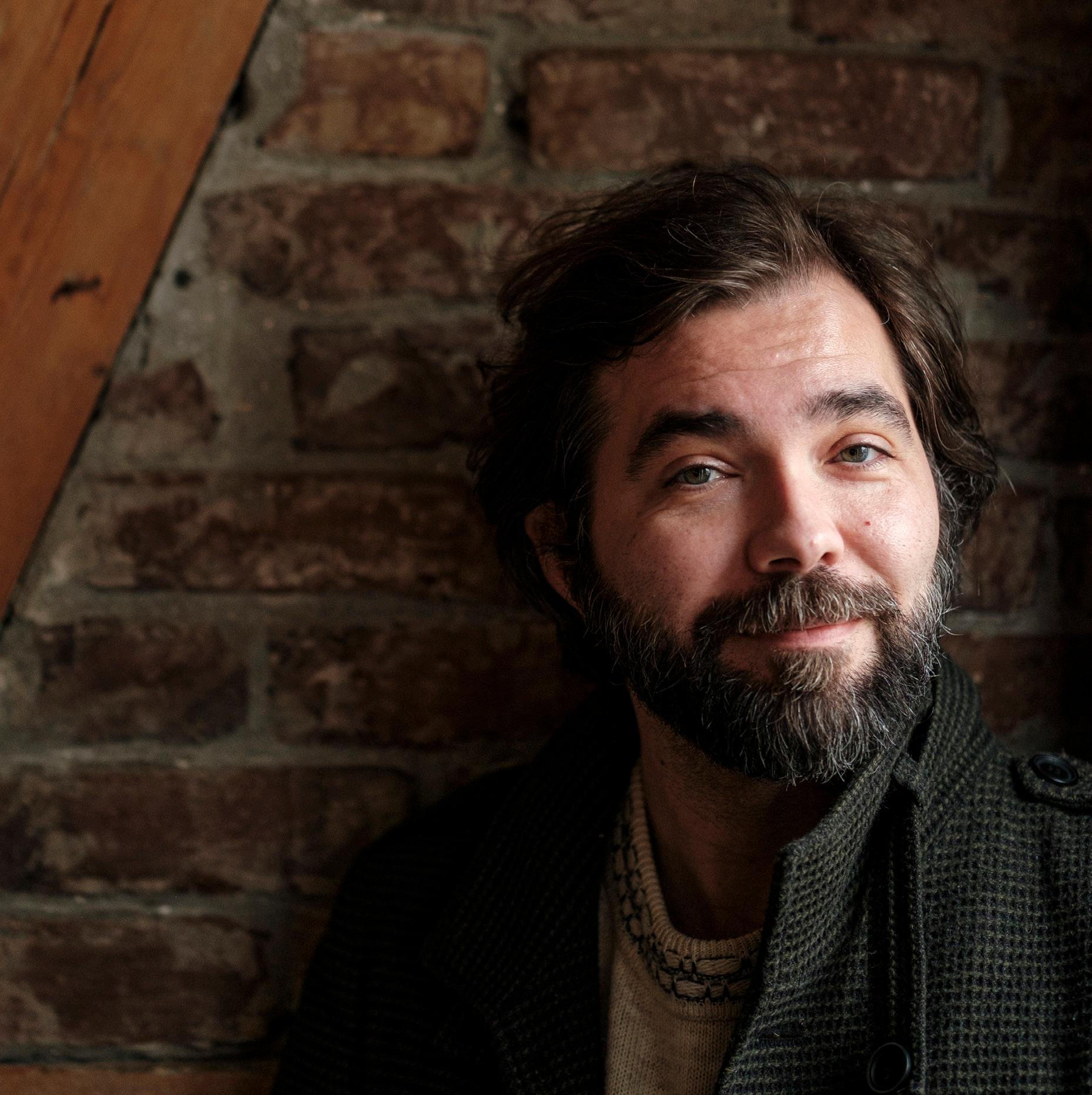
“Is this question a part of the interview?”
“Would you answer it differently if this were off the record?”
“Well, yes. I’m still learning how to navigate all of this. You know, getting used to the fact that what you say in interviews then gets published somewhere.”
Despite author Pedro Gunnlaugur Garcia’s initial hesitation, we soldier on.
“I had been preparing for polite letters saying ‘not for us, try again later’.”
In 2013, Pedro was working at IKEA, stocking shelves. He was turning 30 and he hadn’t really figured out what he was doing with his life. “I was trying to be a normal guy until I found out that it didn’t suit me,” Pedro says. “I had written when I was younger, poems and short stories and such but then I stopped. I wasn’t doing anything creative until I turned 30, and I felt that I’d been wasting my time on things that didn’t bring me any real pleasure and that I wasn’t using my talents.” I’m sure there are 29-year-olds out there who know the feeling. Unlike many others of that age, however, when the thought struck Pedro that he should write a book, he did.
It took him four years, but in 2017, Pedro was awarded the Icelandic Literature Centre’s Grassroot grant for emerging writers for a manuscript he was going to call Ráðstefna talandi dýra (A Conference of Talking Animals). “And then publishers approached me, which was very unexpected,” Pedro continued in his distinctive selfdeprecating, yet genuine tone. “But now I could choose between three publishers.” For an author wanting to get his first book out, it’s an enviable position, but it put Pedro in a weird spot. For the four years he was writing his novel, it had been his and his alone. “It got to grow in peace and become the weird thing that it was. I decided that since I was letting myself do this, why not take it all the way and don’t think at all about who was going to read this. I just wrote to amuse myself. And as a result, it’s a little self-indulgent at times, but it was liberating for me.” Now, it was time to let someone else read it, and even offer suggestions on how to edit it. “I was very shy about it. But it was a relief to get the grant because it made me think that it couldn’t be that bad.”
“I think I was a little too hesitant to kill my darlings, but my editor at Bjartur, Páll Valsson, also realised that the book was weird and strange and that the author was unusual and he very generously gave me plenty of space. He never tried to clip my wings or cut parts of the book like so many people have suggested after it was published. They say it’s uneven, but no one seems to agree on which parts should go.”
“The book is pretty disgusting and weird, and it’s not for everyone.”
Once the book was released from the safe space of his publishing house, he had to let even more people into what he originally conceived of as his private thoughts. “I was a little rattled when perfect strangers started reading it. Getting reviews in the papers, even seeing it in bookstores, that gave me nerves, which surprised me. I was writing for myself only, doing what I’d always wanted to do, and it had a private meaning for me.”
When the book was published in 2019, this unknown author with the decidedly foreignsounding name was the dark horse of the season. Pedro went back to his writing desk and three years later, he presented readers with his book Lungu (Lungs). It was another hit, nominated for the Icelandic Literary Prize. “I wasn’t expecting it, frankly. I’d considered it a victory to be nominated, I felt like that meant that I’d made an impact.” This January, it was announced that he’d won. “This might be me sharing too much again, but I had sort of an anxiety attack. I had to lie down on the floor. I was going through some stuff in my life, personally as well as professionally, and it felt like too much.” The contrast between the solitary and personal act of writing and the public event of receiving an award, with all the attention that comes with it, came as a shock. “You spend three years sitting in a corner somewhere, and then you reap what you´ve sown. And don’t get me wrong, I love the reaping, it’s such a privilege to receive this much attention and be this successful. But it has some unforeseen consequences. When I received an award, people who had unfriended me on social media now all of a sudden are my best friends again. So being recognised for your work is one thing, but it’s a whole different experience to receive that sort of stamp, and a statue given to you by the president on TV.” The transition into a public person is a strange and unusual experience for Pedro. “Not that people are crowding me in Bónus, asking for an autograph. I have a tendency to trauma-dump and overshare but I’m still a private person and I’m still learning how this works. ”
He ended up releasing the book under a new title, Málleysingjarnir ( The Mutes). “My editor told me that the word ‘conference’ wasn’t sexy and that talking animals were too childish,” Pedro says.
“It’s my fifteen minutes of fame, and I suppose I have about fourteen more to go.”
"While I was researching for my first book, getting to know life and conditions in Romania, I met a woman who had the surname Lungu, written just like that. And I thought to myself what a great word that was, and how it would be a great book title."
His second book took three years to complete. “I’ve never struggled with titles, and Lungs came to me long before the book did. Before I knew what it would be. Then I just had to shape the book around it, figure out why it was called that.”
His text isn’t exactly what you ould call concise. “I have one or two manuscripts for books of poetry. I showed it to a friend who’s a book person and a poet and she said ‘yeah no, don’t show this to people, stick with the novels’.”
In a deadpan tone, he adds that it´´s good to have honest friends, before continuing: “It´s so much harder to write poetry than novels. I write long novels because I can’t write short poetry. I need so many words to say what poets can convey in just a few.”
While Málleysingjarnir was a story about a family, Lungu revolves around multiple generations. “From the beginning, I had a real strong certainty that I wanted to try my hand at this format. Both because many of my favourite novels are family stories, but this is a generational story. There was something that appealed to me, the chance to write so many different characters and so many different settings.” Pedro also had more private reasons for wanting to write about generational links. “During the writing process, I had a son, and I lost three grandparents around the same time.” For months, Pedro had been stuck in the preparatory stage of writing, creating schemes, mapping the themes he wanted to touch on, outlining characters, without ever getting the story off the ground. All of a sudden, he had a visceral understanding of these large concepts of life, death, and generations. Stories his grandparents had told him became the spark that ignited his story. “I remembered a story that my grandfather told me of his father, my great-grandfather. He was Portuguese and was in the Portuguese army at the start of the First World War. He was supposed to be shipped off to Flanders, in Belgium, but he wasn’t up for that. So, my grandfather told me, he swallowed a bunch of raw olives and went to the army doctor complaining of an upset stomach. He had an x-ray, and the doctor saw black shadows in the images and told him he has terminal cancer. So he got out of being sent away. Almost all the Portuguese sent to Flanders were killed in German gas attacks.” If not for the olives, there wouldn’t be a Pedro. And that’s how his book begins. “Then I wrote at a maniacal pace, writing tens of thousands of words in a matter of months. ” He wrote the second half on a computer. Momentum took over and characters and story lines came rushing to him. “But the olive story, it was the lightning, the big bang out of which the story leapt.”
Pedro’s books have been popular with readers and critics alike, praised for their colourful characters, fantastical elements, and vivid storytelling. For many, it’s the maximalism of the story that feels fresh. “I don’t know if it’s in opposition to trends that have been going on, very polished texts with no redundancies. This book just keeps on layering on more stuff. I’ve wondered about it afterwards, if it may be insecurity, not ambition that drives that. I feel like I have to provide so much in order for it to be presentable.”
While he’s grateful for the praise, he’s hesitant to accept some parts of it. “Sometimes I think, if I had a completely Icelandic-sounding name, would people be talking about ‘freshness?’ I think it colours people’s perception that I don’t have a Nordic name and they automatically make connections to South American writers, magic realism. While I admit it’s certainly an influence, I was also influenced by so many other things that people never pick up on. Magic realism is mostly used when referring to Isabel Allende and my namesake Gabriel García Márquez. But fantasy can be found all over the world. I’m not sure how new and fresh my stuff would be considered if I was called something like Jón Emil.” It may be simplistic to throw around the term magic realism for any generational story with fantastical elements but that doesn’t mean there isn’t any connection. “Both [García Márquez’] One Hundred Years of Solitude and [Allende’s] The House of Spirits are generational stories, I won’t deny that influence. But there are other generational stories such as The Sound and the Fury [by William Faulkner], another favourite book of mine. There’s something about a generational story that captures the root of complexes and neuroses.”
Parts of Lungu are set in the future, and I mention that elements of sci-fi have been
"My hand started cramping, since I was writing all of this by hand."
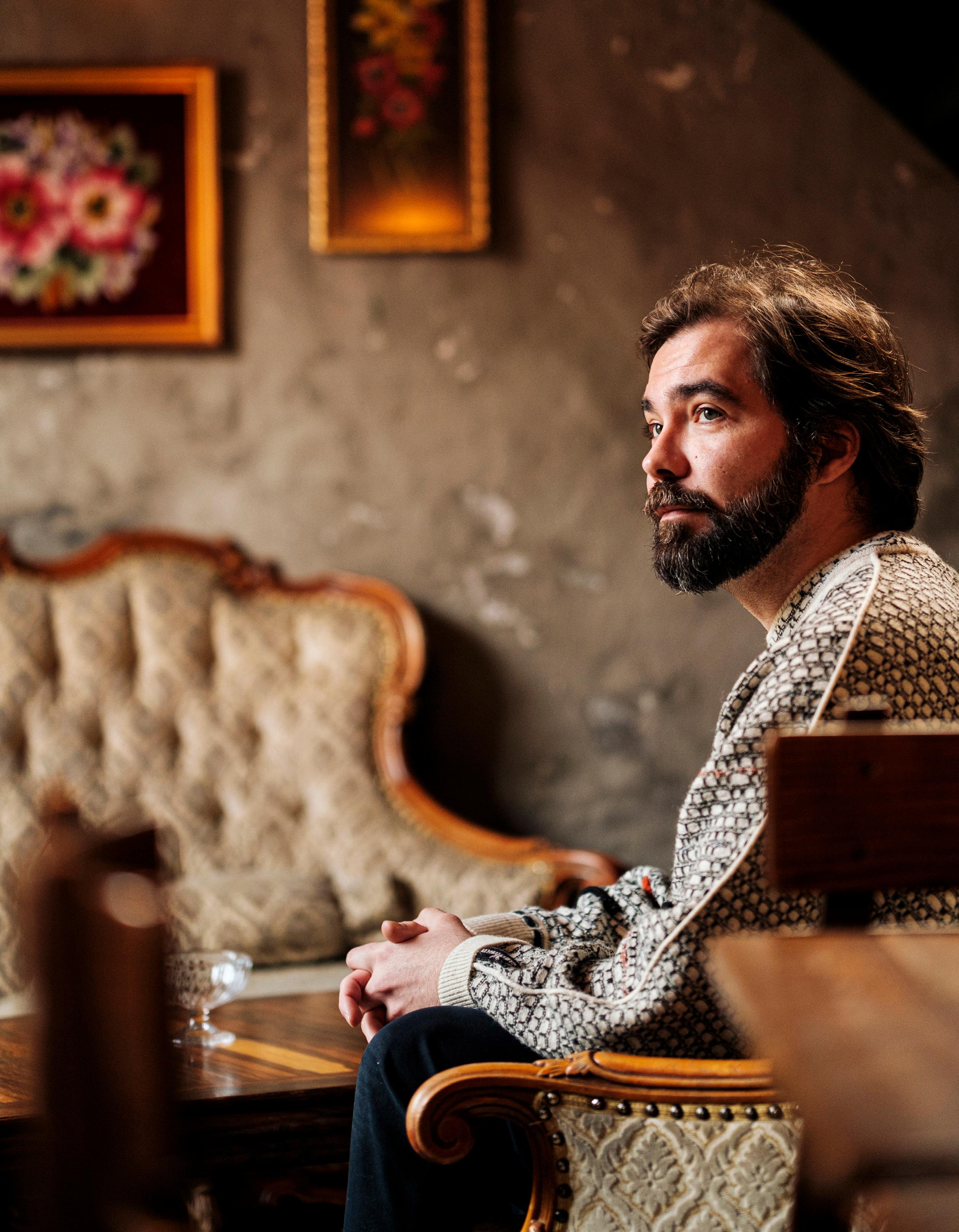
”I’ve rewritten parts to be more gentle on my characters.”
creeping into more and more Icelandic novels recently, particularly with the younger generation of authors. “I think it’s not a premeditated decision to tackle futuristic stories, just like I didn’t really decide to write a family story. But there’s something in the air, a feeling that we’re about to step into a world that’s radically different. That elements of this new world have been introduced already without us noticing them and that they will expand and change our worldview. Fríða Ísberg tackles the social aspects of it [in The Mark] while I’m exploring biotechnology. There’s a call to face the future and think about what it could look like.”
“Also, it’s a book that will go to bookstores and people will read it, hopefully, so that’s something to think about.”
Both of Pedro’s books centre on family in different ways, but at the heart of them is communication, or perhaps the lack thereof. Pedro admits that that stems from his own life. “That’s 100% me working on my neuroses,” he admits. “The book was written during an incredibly bad period of my life. I went through a breakup with the mother of my child and even though we’ve eventually settled into a good coparenting team, there was so much pain that surrounded it. There are chapters in the book that hurt so much I have trouble reading them to this day. Then the pandemic began, sort of at the same time. So I went through that at a time when we’re cutting back on social communication, almost like going into isolation at the worst possible time.”
Pouring details from himself and his life into his characters may have been painful, but in a way, the editing process was a healing experience. “I’ve kept manuscripts and returned to them later and found that I’m being too harsh on some people and that the story is too one-sided. Then I’ve had to go back, even add some chapters to find balance.” While he incorporates his own struggles into the text, his books are far from being a transcript of a therapy session. “There’s a primal power in pain, but when it solidifies, it benefits the text to come back to it with more balance and reshape it,” Pedro muses.
When praised for his storytelling abilities, Pedro again finds that his own character is dissonant with his public persona. “Now that my books have been published, people tell me I’m a storyteller. That’s news to me, I’m not known to entertain a crowd with my stories.” I’ve sometimes needed to ask myself afterwards if that is the way I feel about the world.”
For the first few years of his life, Pedro grew up in Portugal but moved to Iceland when his parents divorced, before he started school. He’s currently taken on a new challenge. “Translating from Portuguese is a personal challenge since I was so little when I left Portugal, when my parents divorced, so my grasp of the language has never been perfect. I’ve always thought that was a shame, especially since so many people consider that nationality so essential to my character.”

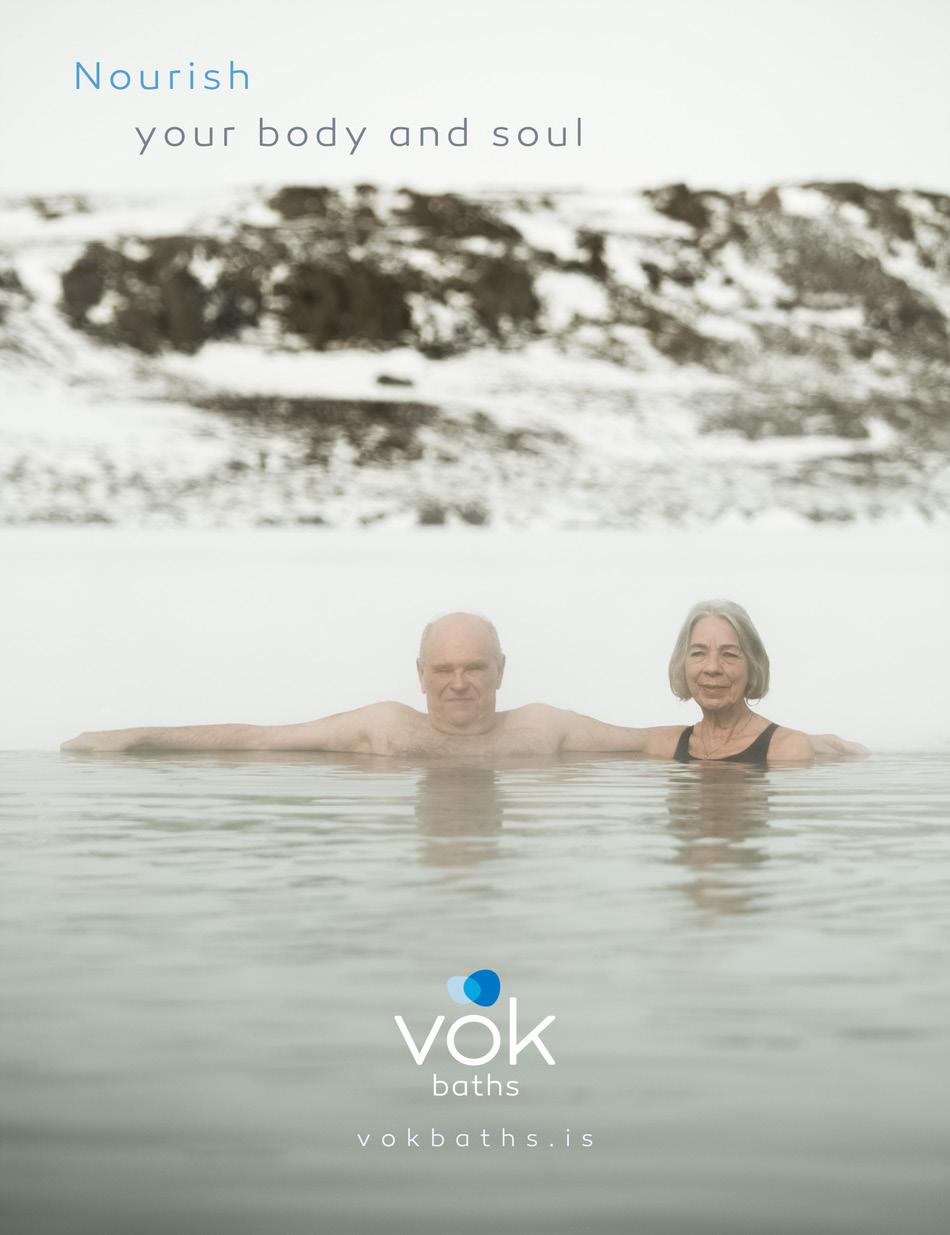


The Lava Centre is situated at Hvolsvöllur on the South Coast of Iceland, surrounded by active volcanoes. It truly acts as the gateway to Iceland’s most active volcanic area.
The Lava Centre just received two Red Dot Awards, which cement its position as a world class exhibition.
LAVA Centre is the best place to learn about the new Fagradalsfjall eruption, with new exhibits explaining the eruption and new film footage in the volcano cinema.
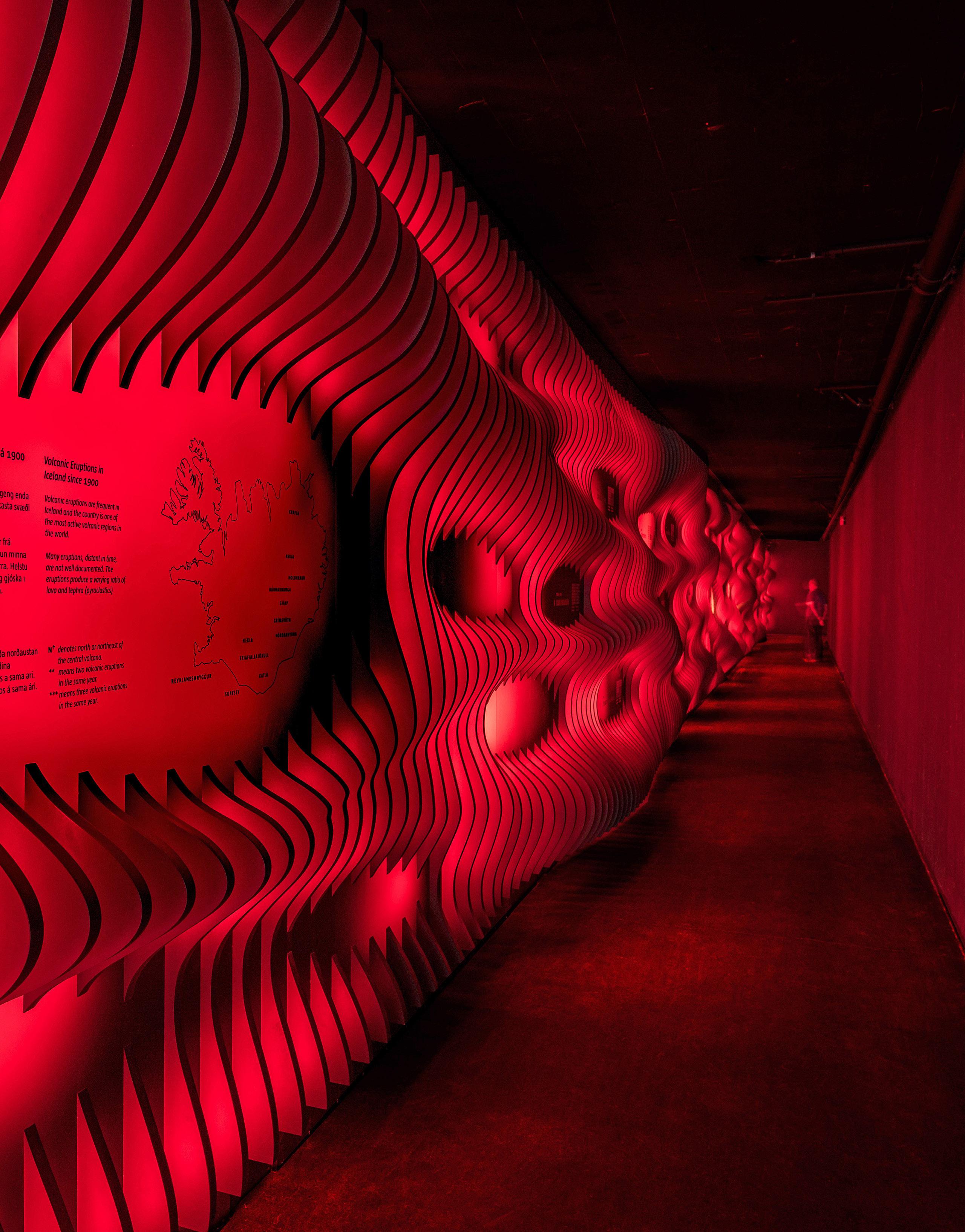
His first book was a little more grotesque and had a healthy dose of Weltschmerz, something his readers noticed. For his second book, Pedro was more aware of the fact that he would eventually present his writing to an audience. “I think in some way, my second book was born out of a wish to reach more people. And I was often close to flattening the whole story out. I was so nervous that it wasn’t good enough that I had someone read it and edit it over and over again.” After multiple revisions, the story was filled with general appeal. It was also becoming bland. “I’d streamlined it so much that it was starting to lose its character. I put the manuscript aside, and when I returned to it, I flipped through the pages and thought that it could have been written by anyone. It was so universal that it had no personality.” He went back a few drafts and revived some of the weird chapters, the ones that weren’t essential to forwarding the plot, but gave it some colour. “There needs to be some unevenness, some perversion, so that the character shines through.”

I ask him if he’s being defined against his will, but he won’t go that far. “I don’t hate it when Auður Jónsdóttir writes that I remind her of storytellers such as Günter Grass and Gabriel García Márquez,” he laughs. “I mean, sure, I’d like to be considered that kind of storyteller.“
“So, you’re going to keep on writing, right, what’s next?”
“No, I might go out on a high note, now I can try doing something else. Or just straight back to stocking shelves at IKEA, what a way that would be to end this interview.”
He laughs.
“My first two novels focused on families so maybe I’m done with that for a while.”
“Will your next one focus on a lonely lighthouse guard, then?”
“Well, you’re not too far off, really. But I don’t know exactly what it will turn out to be. I’m also thinking that I seem to have hit a formula that works. Should I keep doing books like this? A mix of Nordic melancholy and magic realism? Should I hold on to that or just do whatever feels right next time?”

One of Diljá’s favourite Eurovision Song Contest performances ever is fellow-Icelander Yohanna’s song, Is It True, from 2009. Yohanna’s performance, the furthest Iceland has ever made it in Eurovision alongside Selma’s 1999 performance, is still a major moment for Diljá. “I thought it was just so catchy,” Diljá says. “She was so pretty and she was wearing this blue dress with a blue dolphin in the background. I just loved the song and she sang so beautifully.” Ever since, Diljá’s dreamt of representing Iceland in the contest. This May, that dream is coming true as Iceland will be represented in the 67th annual Eurovision Song Contest by Diljá performing her energetic ballad, aptly named Power (co-written by Pálmi Ragnar Ásgeirsson).
Since those early days of watching Yohanna perform, Diljá has already participated in several major song
competitions, including Ísland Got Talent and Idol in Sweden. “It was fun and Iʼm really happy that I did it, but it really didnʼ t go anywhere,” she says about her time in Sweden. “But I think I overdosed on anxiety in Sweden because I haven't felt any since then!”
For someone who’s spent most of her life performing, Diljá has had her share of struggles with anxiety. “I always had huge anxiety problems related to school and competing in singing,” she explains. “I couldnʼ t handle taking tests. And it was the same with performing. I got so anxious. But I did it because I knew I have to be able to do something like this.” It may not come as a surprise, then, that Diljá’s Eurovision song concerns overcoming feelings like these. “You hold no p-p-p-power over me,” she belts in the chorus.
Words by Erik Pomrenke Photographyby Golli & Mummi Lú
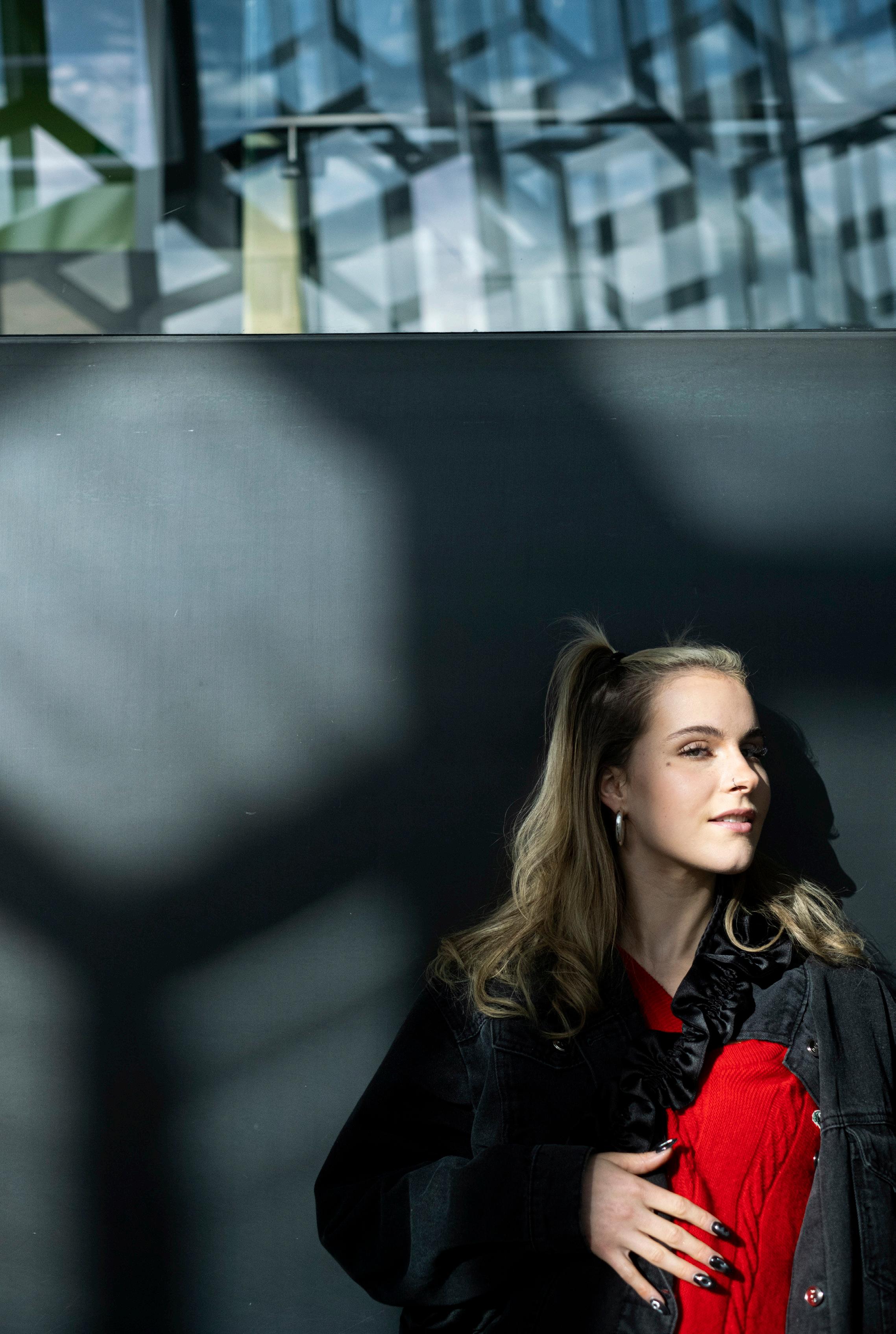
“We’re going to use the opportunity to make the performance a lot bigger than we ever could in Iceland.”
“I think before Idol I took everything a little too seriously,” Diljá says. “Like, I thought it was going to be the end of the world if I missed a single note! If I did something embarrassing, I thought it was just going to end me. But after Idol, it wouldnʼ t have mattered at all. It ʼs just supposed to be fun!”
These days, instead of worrying about her performance, Diljá likes to have some healthy rituals before she goes on stage. A former physiotherapy student at the University of Iceland and a self-professed crossfit addict, health is the guiding light in her life. Before singing, she likes to do some push-ups and stretches to warm up. As she puts it: “I’ve got an athlete’s mindset.” Viewers of this year’s song competition even got to see Diljá do some callisthenics on-air, and her stage presence is nothing if not athletic.
Diljá also says there are big things in store for her at
this year’s Eurovision Song Contest, which will be held in Liverpool. According to her, the expectations have gotten a lot higher since she watched Yohanna perform many years ago. In March, fans of Eurovision in Iceland tuned in to watch Söngvakeppnin, Iceland’s competition to select its Eurovision representative. It’s a sizeable TV event but decidedly more humble than in, say, Sweden.
“There’s such a huge gap,” Diljá says. “Some countries’ selection contests are almost as big as Eurovision itself, like Melody Festival in Sweden. Söngvakeppnin is always getting better and better, but still, some countries have a big advantage.” Icelanders should, however, rest assured. The details of Diljá’s Liverpool performance are still under wraps, but as she says, “We’ll all be on the same field once we’re in Liverpool. We’re going to use the opportunity to make the performance a lot bigger than we ever could in Iceland.”

“I’ve got an athlete’s mindset.”
Although Diljá’s got big plans for Liverpool, there’s a part of her that will miss experiencing Eurovision at home in Iceland. “I always watch it with my family,” Diljá tells me. “It ʼs a sacred holiday for me and my mom.” And Diljá is quite dedicated to this family tradition. “Two years ago, I was acting in a play, but it was going to be performed during Eurovision. And I just said, I’m sorry, I can’t do it! I have to watch Eurovision with my mom.” For Diljá, the ideal Eurovision experience includes getting cosy with her mom, some sparkling wine, and take-out pizza. “I never like going to these big Eurovision watch parties some people have,” she explains. “I’m here to listen to the songs! The show is on, we can always hang out after.”
Diljá isn’t going to jinx herself with any predictions, but she’s confident she’ll go far. “I know I’m not ranked super high internationally right now,” she admits. “But it’s all going to change when they see me in Liverpool. I think
my chances are good. I know I’m headed to the finals, and that I’m going to shine there.”
And if Diljá does become the first-ever Icelander to win Eurovision?

“I would go for a very long walk,” she laughs. “I’d probably need to be alone and ground myself because it would just be too much. I think there’s a good chance I’d just lose my mind if that would happen!”
Icelanders are famous – perhaps infamous – for taking Eurovision rather seriously. What, ultimately, does Diljá think that Eurovision is really about? “At the end of the day, it’s the one week a year where everything is just supposed to be about music and it’s just supposed to be fun,” Diljá says. “It's so excessive. And I love it!”
“At the end of the day, it’s the one week a year where everything is just supposed to be about music and it’s just supposed to be fun.”
Despite Iceland’s image as a leader in green technologies, per capita household waste has been steadily trending upwards in the country. In 2009, the average Icelandic household produced just above 400 kg [882 lbs] of waste annually. As of 2021, Icelandic households were




producing 667 kg [1,470 lbs] of waste annually, compared to the EU average of 530 kg [1,168 lbs]. According to EuroStat, in 2021, the last year for which statistics are available, Iceland placed eighth for average waste produced by household in the EU and EEA.
 Words
Words
On January 1, 2023, a new set of laws regulating waste management and recycling came into effect. The regulations, called The Circular Law ( Hringrásarlögin), include a new recycling system, packaging fees ensuring that manufacturers and importers contribute to the cost of collection and recycling, and prohibiting many categories of waste from being incinerated or disposed of in landfills. The implementation of these changes has neither been sweeping nor instantaneous, and 2023 will see many municipalities throughout Iceland gradually adjusting to the new system.
The circular economy has existed as a concept since at least the 1970s. In contrast to a so-called linear economy, in which raw materials are manufactured into goods, sold, used, and then disposed of, a circular economy seeks to integrate recycling, waste management, and repairability into every level of the supply chain, ensuring that resources remain in circulation for as long as possible. Policymakers, academics, and entrepreneurs increasingly agree that the circular economy is the next frontier in environmental sustainability. These are the entrepreneurs who are making the Icelandic economy circular.



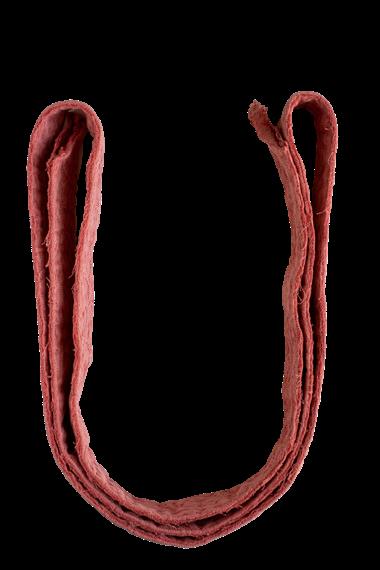

 by Erik Pomrenke Photography by Golli
by Erik Pomrenke Photography by Golli
Endurtakk – ensuring that clothes and fabrics aren’t just reused, but reused locally.

Scottish brothers Rik and Ross McNair’s fashion label Endurtakk (a play on endurtaka, to repeat) uses a high fashion sensibility to make an environmental statement.
When Ross first moved to Iceland to join his brother Rik, Rik was rather burnt out from the world of high fashion. They spent time working in hostels, and it was out of this time that one of the first Endurtakk projects arose. “Tourists would often take the blankets off of Icelandair planes and leave them at the hotel,” Ross recalls. “We didn’t know that you could actually contact Icelandair and send them back.” The impulse to make something out of these abandoned blankets arose just as much out of
an ethical commitment to reduce waste as the simple desire to be creative with excess material. Since those early experiments, Endurtakk have made everything from wallets out of old sailcloth, winter jackets of sleeping bags, and stylish blazers cut from old curtains.
For the eco-conscious shopper, second-hand clothing stores are an obvious first stop. Many of us peruse the racks of consignment shops, either not thinking much about where the clothes come from, or else assuming that they perhaps came from a nearby donation bin. With some second-hand shops, this is indeed the case. But in order to make sure that the right Doc Martens are in the right town for the right price, an international
second-hand clothing market has developed.
Originally, sourcing their material was a very informal process, calling around to camping supply stores with piles of unused blankets and sailcloth manufacturers, asking if they had anything sitting around. But as the scope of Endurtakk began to grow, Rik and Ross began to source clothing differently. Now, they source much of their material from the Red Cross sorting facility down by the Reykjavík docks.

The international market also goes both ways, and clothes inside many Reykjavík vintage stores are just as likely to come from Texas as from neighbouring Kópavogur. While it’s good that these clothes are seeing a second life, at the same time, this endless importing
In 2020, the Icelandic Red Cross exported about 200 shipping containers filled with used clothing. In total, this represents about 900 tonnes of fabrics that year alone. The word’s gotten out in many other countries that Iceland has very highquality secondhand clothing. Distributors abroad are willing to pay for unopened containers from Iceland, knowing that there’s probably a lot of good stuff inside.
The average restaurant creates a total of 35.6 kg [78.5 lbs] of food waste every day. In a nation like Iceland, where 90% of food is imported, this is especially problematic. This food waste costs a restaurant, on average, ISK 4.8 million [$33,000, €31,000] annually, in addition to the carbon that has been emitted all along the supply chain in the production, processing, and transportation of this wasted food.
and exporting of clothes also has its own costs, especially in carbon emissions.
Another complicating factor is missing manpower. The Red Cross in Iceland can’t sell anything with a hole, stain, or broken zipper, and they don’t have the means to mend clothes, meaning that a large proportion of Red Cross donations must be shipped abroad for further resale or processing. “We just saw the sheer amount of stuff leaving the country and we thought something had to be done,” Ross explains. “We’d love to be able to stop even one tonne from leaving the country, but we’re not at that capacity yet.”
Endurtakk has streamlined their production recently, focusing more on denim. But Endurtakk is also pioneering new technologies in the second-hand fashion sphere. With a 3D printer, they’ve been experimenting with using recycled plastics to make zipper pulls, buttons, and even jewellery.
Still, something strikes me as a tad paradoxical. The drive for

novelty, to always innovate and buy new things, isn’t this a part of the problem? “In the circular economy, we want to keep a resource in circulation for as long as possible,” Ross says. “A part of that is making these things attractive, making people want to wear them.”
Endurtakk is fighting against fast fashion, but in order to succeed, they still have to make beautiful clothes. “We want to make things that are useful and will last. We don’t want to make things that catch people’s eye for a couple of weeks and then they throw it out. If anyone wants to throw our clothes away, they’re welcome to throw them back to us!” Ross says, laughing.
GreenBytes – using AI to streamline restaurants’ ordering process to reduce food waste. Co-founder and CTO of GreenBytes Jillian Verbeurgt, a native Canadian, came to Iceland to pursue an MS in Sustainable Energy at Reykjavík University. During her studies, when she met
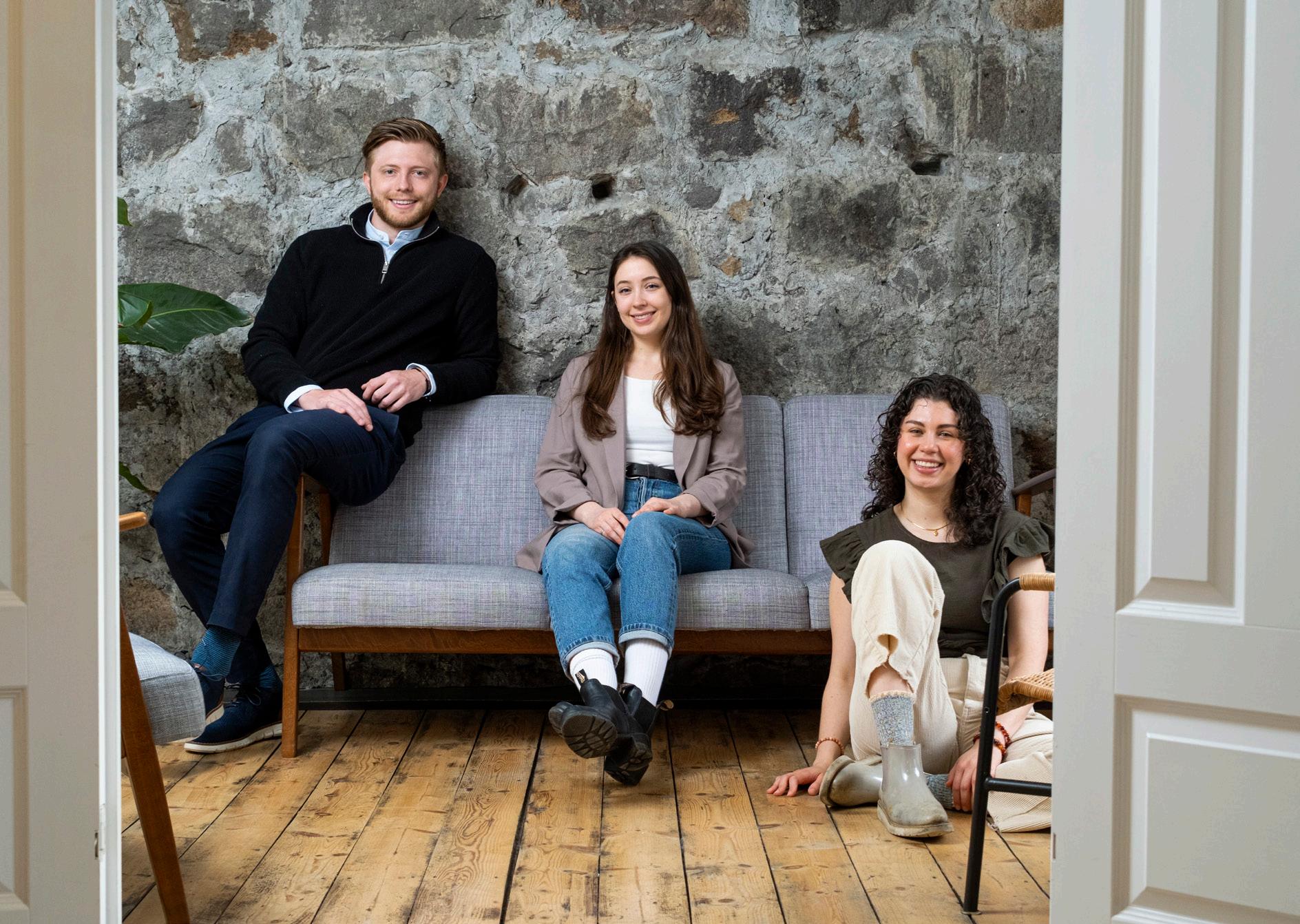
GreenBytes co-founder and nowCEO Renata Bade Barajas, she, like many students, supported herself by working in the restaurant industry. “Both of us were shocked with the amount of food waste,” Jillian recalls. “The restaurant I worked at, every night we would throw out buckets and buckets of food. I would try and take it home, but there was only so much my friends would eat!”
In many ways, restaurant ordering is the perfect task for AI. Given the amount of food waste produced both in Iceland and around the world, there is much room for human improvement.
“We’re helping restaurants to reduce food waste by tapping into their sales and forecasting how much they should order. So nothing is over- or under-ordered, which is a common problem,” Jillian explains. Often, a restaurant owner might over-order, for fear of a dinner rush that never comes. And under-ordering can be just as damaging to a restaurant’s bottom line, potentially creating shortages


















For ISK 14,000 [$98, €93] a year, or ISK 1,500 [$11, €10] a month, the library’s 350-odd members can borrow everything from hammers and camping equipment to fondue sets. Just like at a normal library, there are late fees, but no maximum amount of items per “turn.” Some of the all-time favourites include an ice cream machine, carpet cleaners and vacuums, and, of course, drills.
Reykjavík Tool Library – you don’t need a drill. You need a hole in the wall.
Started in 2018 by Anna De Matos, the Reykjavík Tool Library (Munasafn RVK ) has grown from a humble collection of drills and sewing machines to encompass an NGO (Hringrásarsetur Íslands), a tech startup, and popular community events known as Repair Cafés, where volunteers help fix lamps, toasters, and more. And they may soon be going global.

“I’ve worked with tools my whole life,” Anna tells me. “When I moved here from the UK, I sold everything and just thought I’d buy it all again in Iceland. But I couldn’t buy anything at all, everything was so expensive.” The Reykjavík Tool Library, though clearly a project animated by strong principles, arose just as much from the practical need for Anna to get her hands on some trusty tools.
“I found out about a tool library in Toronto,” Anna says. “I contacted them, and they said I should come over, so I visited for a week to see how they do
things. But there’s a big difference between how we run things and many other tool libraries.” For one, all staff at Reykjavík Tool Library are paid. And not just paid, but paid equally. “When we talk about the economy, it’s not just about finances. It’s also the management of our resources. So when we talk about the circular economy, we’re also talking about the circular management of our resources more generally, including workers.”

Many of these tools are relatively expensive investments that individuals use only a few times a year. “So many people will just buy a drill because they feel some need to have it,” Anna explains. “But what they really need is a hole in the wall. There’s also a large generational difference in habits. Most of our members are between the ages of 25 and 45. For many in the older generation, there’s a common attitude of: ‘Why shouldn’t I just buy something new?’”
Repair and maintenance of tools is integral to operations. “We had this vacuum cleaner that was
very popular but kept on breaking,” Anna explains to me. “It turned out there was one very small piece responsible, so we 3D printed multiple copies, so we always have extra. Many companies selling these tools don’t want you to repair them. They won’t give you the specs, the designs, the parts to actually fix them. In the worst case, some tools are even designed to be hostile to repair. Maybe a battery is inaccessible, or special proprietary tools are needed.”
In the coming year, the Reykjavík Tool Library is preparing to go global. Alongside an app, they are developing a kit that allows any individual or community to set up their own tool library kiosk using an IKEA cabinet and the computer chips from popular smart televisions, a common form of electronic waste. They will be sending a demo kiosk to the library in Ísafjörður, the Westfjords, for testing, and a library in Germany has also expressed interest in adopting the system. In the notso-near future, the Reykjavík Tool Library could largely be an
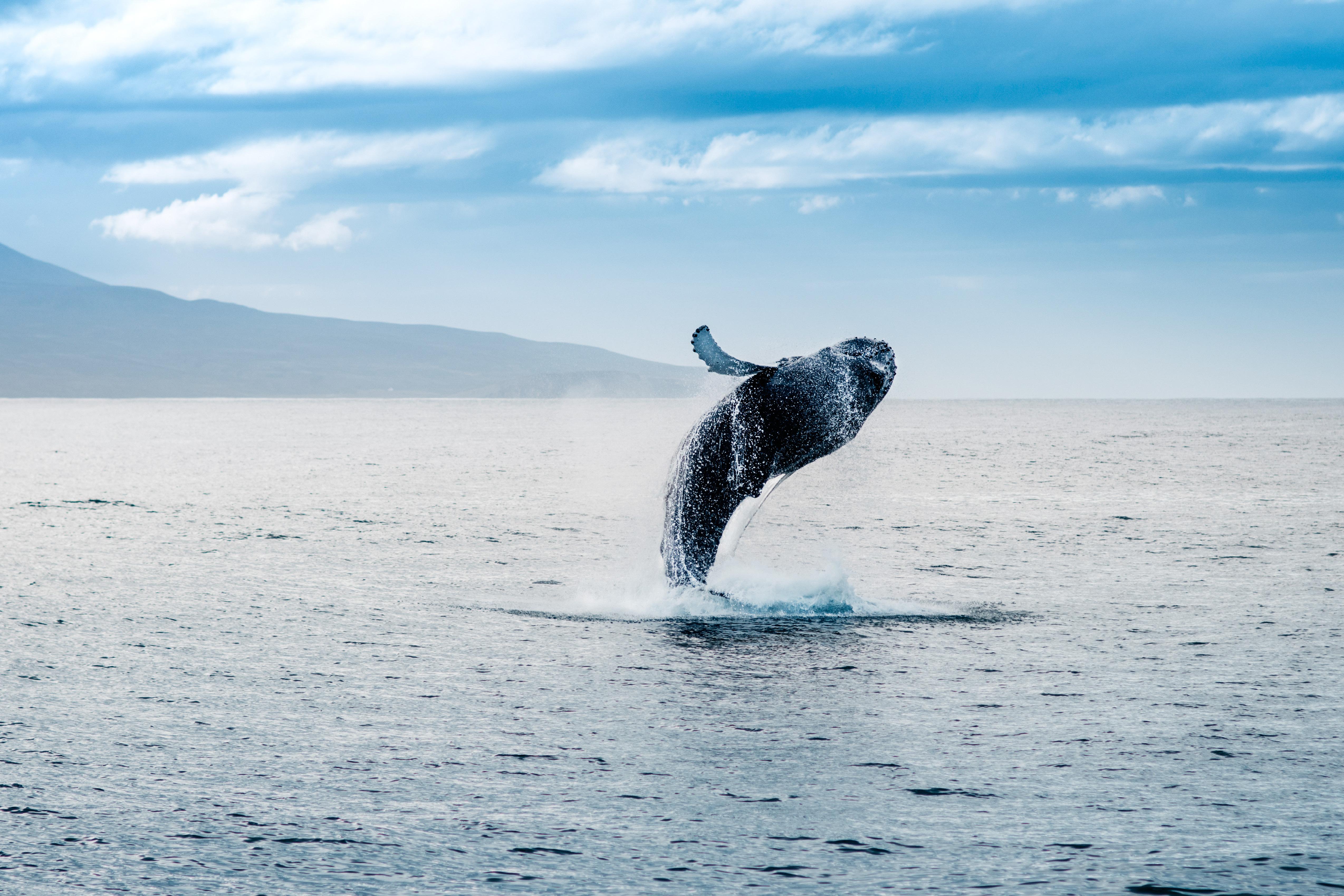





An amazing Snowmobile ride close to the Golden Circle

Come with us on an adventure on Langjökull, Iceland' s second largest Glacier.
Riding a snowmobile on the massive snow cap is a unique experience that you will remember for the rest of your life.

app developer, helping to set up similar, but autonomous, systems throughout the world. Their NGO, Hringrásarsetur Íslands, is also beginning to fund research into the life cycle assessments (LCA) of various materials. The data from this research will be free and publicly available. They even have potential investors. “But we’re taking it very slow,” Anna says. “This is a long-range vision, not a short-term project.”
Plastplan – designing everything from bookshelves and cups, to dildo stands from recycled plastics.
Björn Steinar Blumenstein and Brynjólfur Stefánsson have been friends since they were six years old. Their workspace out at the end of Grandi, Reykjavík’s harbour district, is part industrial manufacturing facility and part art studio. And as we sit down to talk, I notice that bits of paint and plastic fleck Björn Steinar’s man bun.
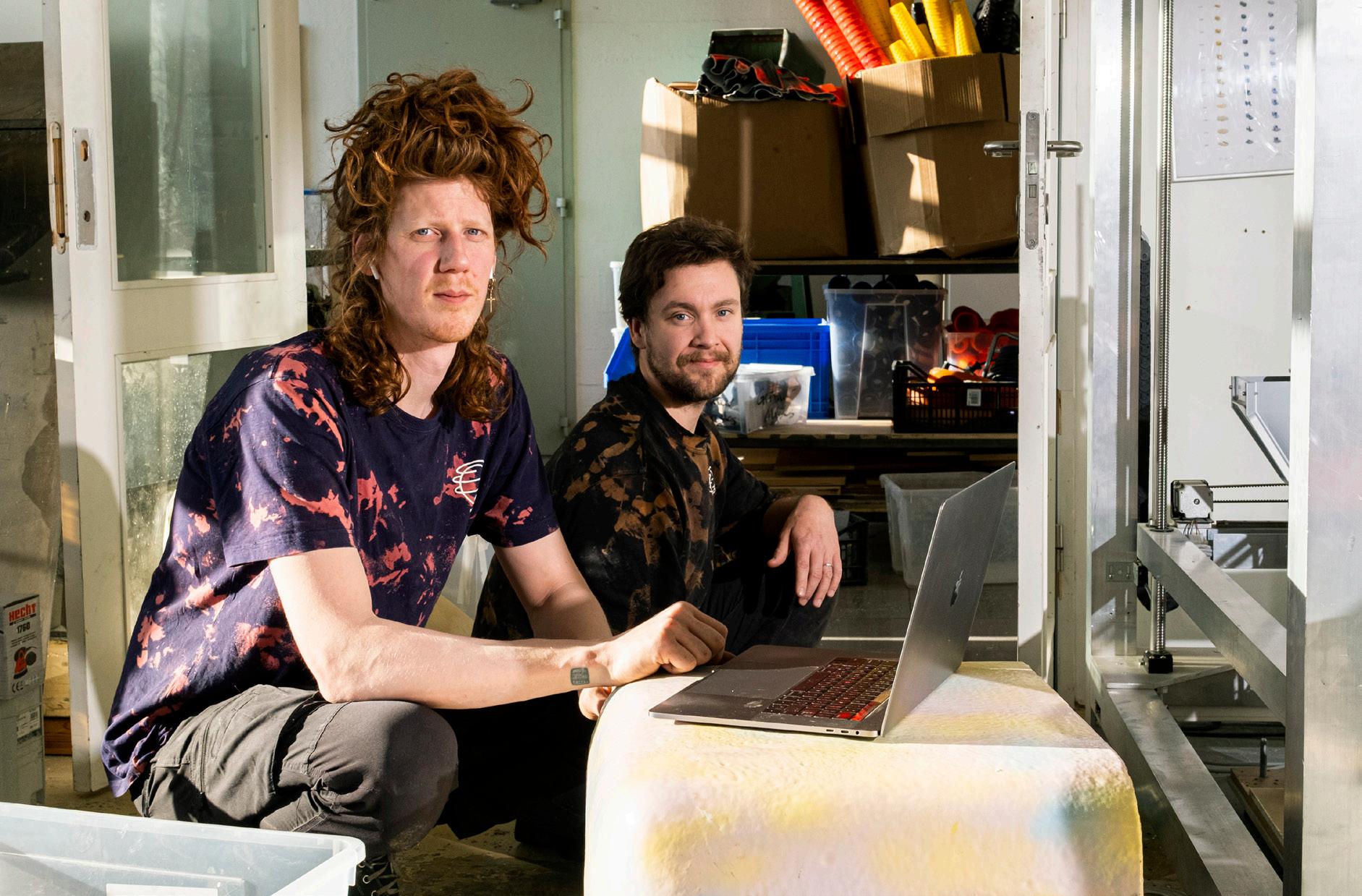
Plastplan began in 2019 when Björn Steinar, also known as Bjössi, returned from an internship in the Netherlands. There he worked
with Dave Hakkens, the founder of international open-source recycling collective Precious Plastic. The goal of Precious Plastic is simple: to make plastic recycling accessible, exciting, and perhaps even profitable. Thanks to opensource initiatives like this, Plastplan is one of many creative startups throughout the world finding ways to repurpose plastic.
“What we’ve been able to do,” Bjössi tells me, “is copy the existing plastic manufacturing process, but on a microscale. All of the machinery for a recycling and manufacturing facility would normally be the cost of, say, a three-story house. But with this scaled-down version, each machine costs something more like a fancy office chair.” In their modest workspace in Grandi is everything they need for their production process: plastic shredders, extruders, sheetpresses, and injection moulds. They’ve even custom-built an industrial-sized 3D printer, and have recently acquired a robotic arm that allows them to print complex shapes.
One of Plastplan’s very first
projects was to create dividers for grocery chain Krónan, the little plastic triangles that separate shoppers’ groceries on the checkout belt. And since their early days, they’ve increasingly gained recognition as a leading design studio in Iceland.
In November 2022, Plastplan won the Icelandic Design Award, in the words of the panel, “for not only doing things well, but also for doing the right thing.” And according to Bjössi, the award couldn’t have come at a better time. “We never needed recognition of that kind as much as then,” he says. “A week earlier, our favourite machine, our sheetpress, caught on fire. We’re so used to the smell of burning plastic that we never noticed but then all of a sudden, it was just ablaze. We were thinking, is this it?”
And despite the increasing recognition of their work in recent years, it hasn’t always been easy. When dealing with industrial manufacturing processes, mistakes can be especially costly. “We’ve made a million mistakes. That’s how we learn. They just happen
“I still can’t fully wrap my head around how complicated its implementation is going to actually be. For instance, it needs to be clearer how our customers and collaborators are going to deliver the material back to us. Recycling is only the very end of a much longer story in a material’s lifetime. In a truly circular system, products will be designed from the very beginning for continual cycles of disassembly and repurposing. And while Plastplan clearly represents a step in that direction, we are still far from it.”







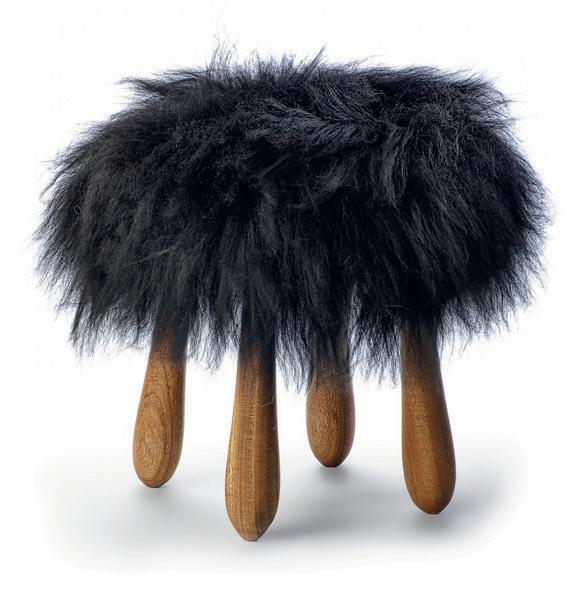
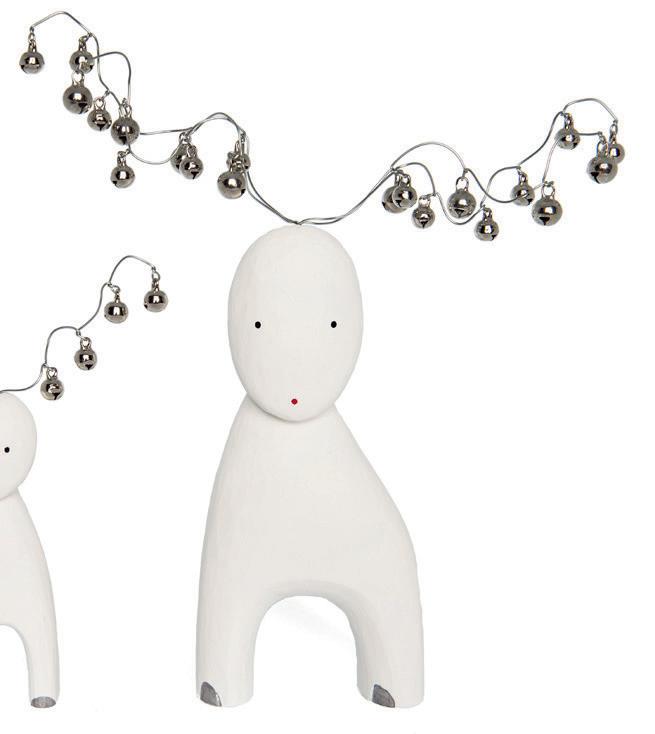



to be very expensive, timeconsuming mistakes.”
Something that has taken especially long to master is working with all the different kinds of plastics. “Itʼs a pain in the ass to master the speed, temperature, cooling, and so on for each kind,” Brynjólfur tells me. “There are seven categories of plastic in consumer goods, but then for every type of plastic, there are 40 or 50 subcategories. A manufacturer might add a substance to make it a bit more transparent, a bit softer. And this stuff is never labelled, so even though we have these categories, you never know exactly what you’re working with.” More stringent labelling requirements, for instance, would be a clear example of a government regulation that would meaningfully move the economy in a circular direction.
Plastics may have a bad reputation these days, but when used responsibly, they can create
cheap, safe, and beautiful objects for our daily lives. Plastplan creations have to be beautiful enough for people to crave them, but also remain aesthetically relevant decades down the line so they can be sustainable. This design process, I imagine, is rather challenging. As Bjössi puts it: “How the fuck do you design a timeless item?”
The solution: what Bjössi calls “mundane innovation.”

“We’re not trying to reinvent the wheel. If we’re designing something for the public library, we’ll make a book stand. And when we worked with [Icelandic outdoor brand] 66° North, we made a buckle. We believe in honest design, with a real purpose.”
Coming around In researching startups working with the circular ethos, it struck me how many entrepreneurs were foreign residents in Iceland. The cost of living is like a cold splash of water, and although these
entrepreneurs are all animated by a commitment to reduce waste and protect the environment, the projects briefly profiled here are also very pragmatic responses to real, personal problems.
In an influential 2013 report co-authored by the Ellen MacArthur Foundation and McKinsey & Company, “Towards the Circular Economy,” the following fact is laid out over several pages, clearly and coldly backed up with graphs, trends, and expert analysis: Resource scarcity is here to stay. Perhaps so many startups in Iceland have become circular because the situation in Iceland foreshadows a more generalised situation.
Moving towards a circular economy may not be a matter of clear conscience, but a matter of survival.


 Words by Ragnar Tómas Hallgrímsson Photography by Golli
Words by Ragnar Tómas Hallgrímsson Photography by Golli
Júníus Meyvant is always impersonating other people, and all the people he impersonates are always yelling.
His father when he, Júníus, was learning to play the guitar:
“Could you play something else!?”
His grandfather, on the eve of his 90th birthday, when told he needed to evacuate his home because of an eruption:
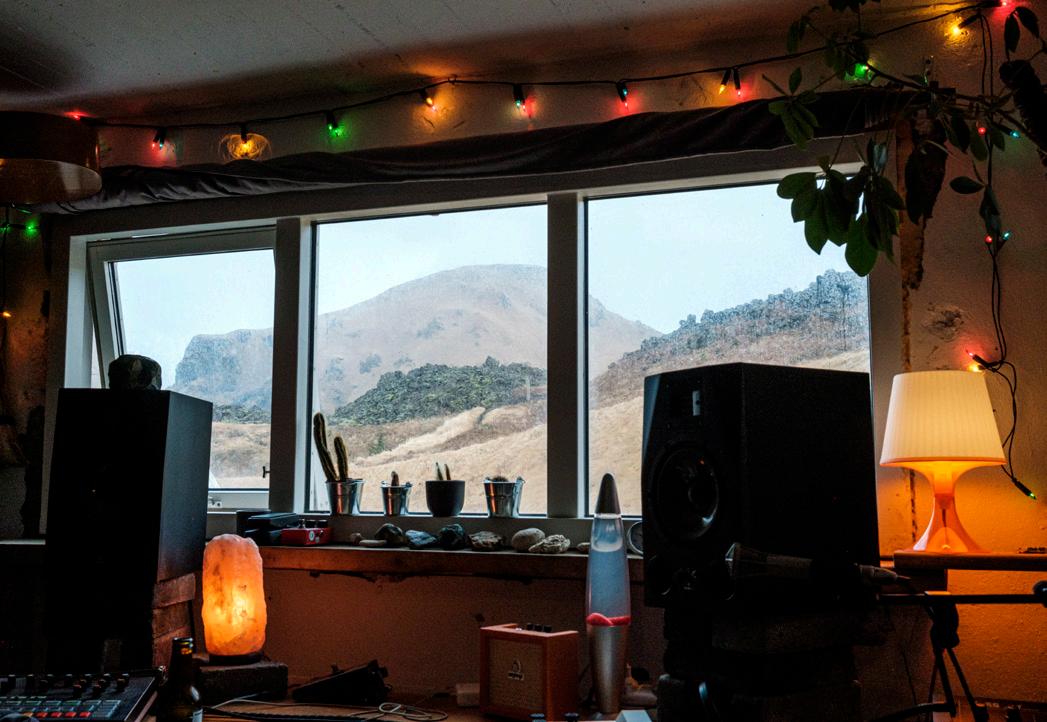
“I’m not going anywhere!”
He, Júníus, when rousing his drowsy thirteen-yearold son in the morning:
“Why are you still up!? You’re supposed to be in bed by now!?” (He’s got an offbeat sense of humour).
It’s like his family, and everyone he knows, come equipped with a rectally-installed midget fuse bound shortly to be engulfed by a flame – as if they were typecast Italian Americans starring in some loud New York sitcom. But Júníus’ people are not from the Big Apple. They hail from a small archipelago on the south coast of Iceland called the Westman Islands.
We got there by way of the ferry Herjólfur.
The Westman Islands are famous for three reasons.
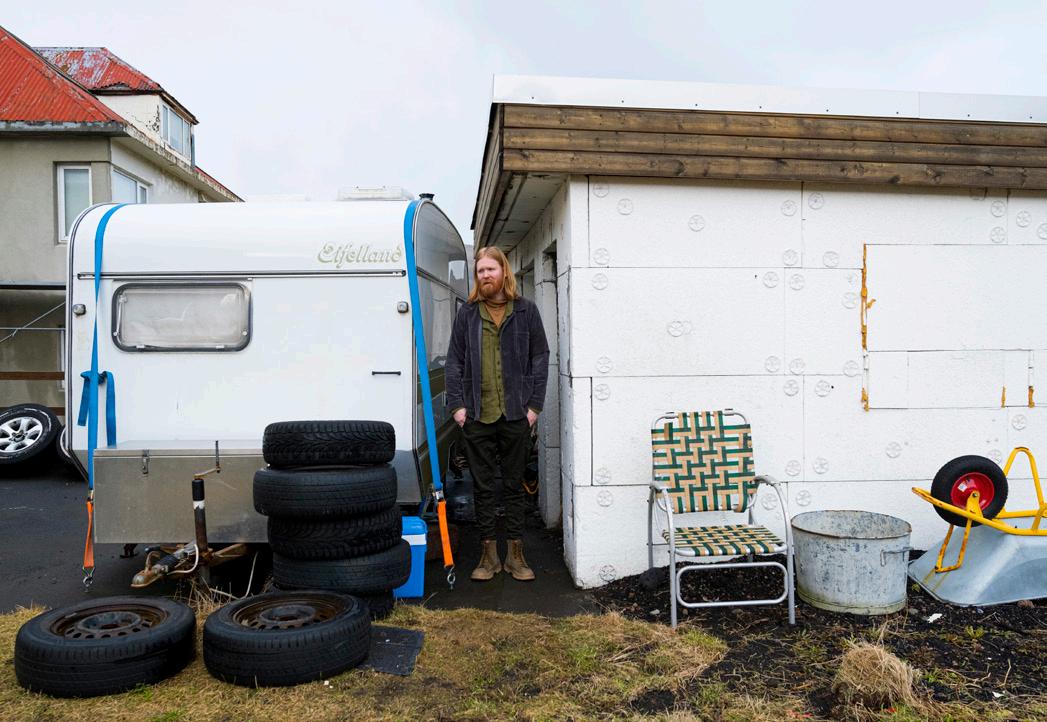
One: a 1973 volcanic eruption that sent the island’s
confused population scuttling towards the harbour, prior to being begrudgingly evacuated to the mainland (approximately a fifth of the town was destroyed before the flow of lava was stemmed by the cooling force of nearly 7 billion litres [1.85 billion gallons] of seawater).
Two: a seabird called the puffin, which boasts blackand-white plumage and a brightly-coloured, triangular beak – like some kind of gay British bobby. (The Westman Islands are the species’ largest breeding colony.)
And three: the annual National Festival, first held in 1874 to commemorate the 1,000-year anniversary of Iceland’s settlement, and which every summer draws over 10,000 attendees, attendees who rarely find themselves standing perpendicular to the ground. (I once attempted to pitch a tent on the festival grounds only for a drunken youth to pass out between the tent pegs. And then another drunken youth passed out on top of the first.)
Júníus Meyvant, whose real name is Unnar Gísli Sigurmundsson, has stories to tell about all of these three phenomena.
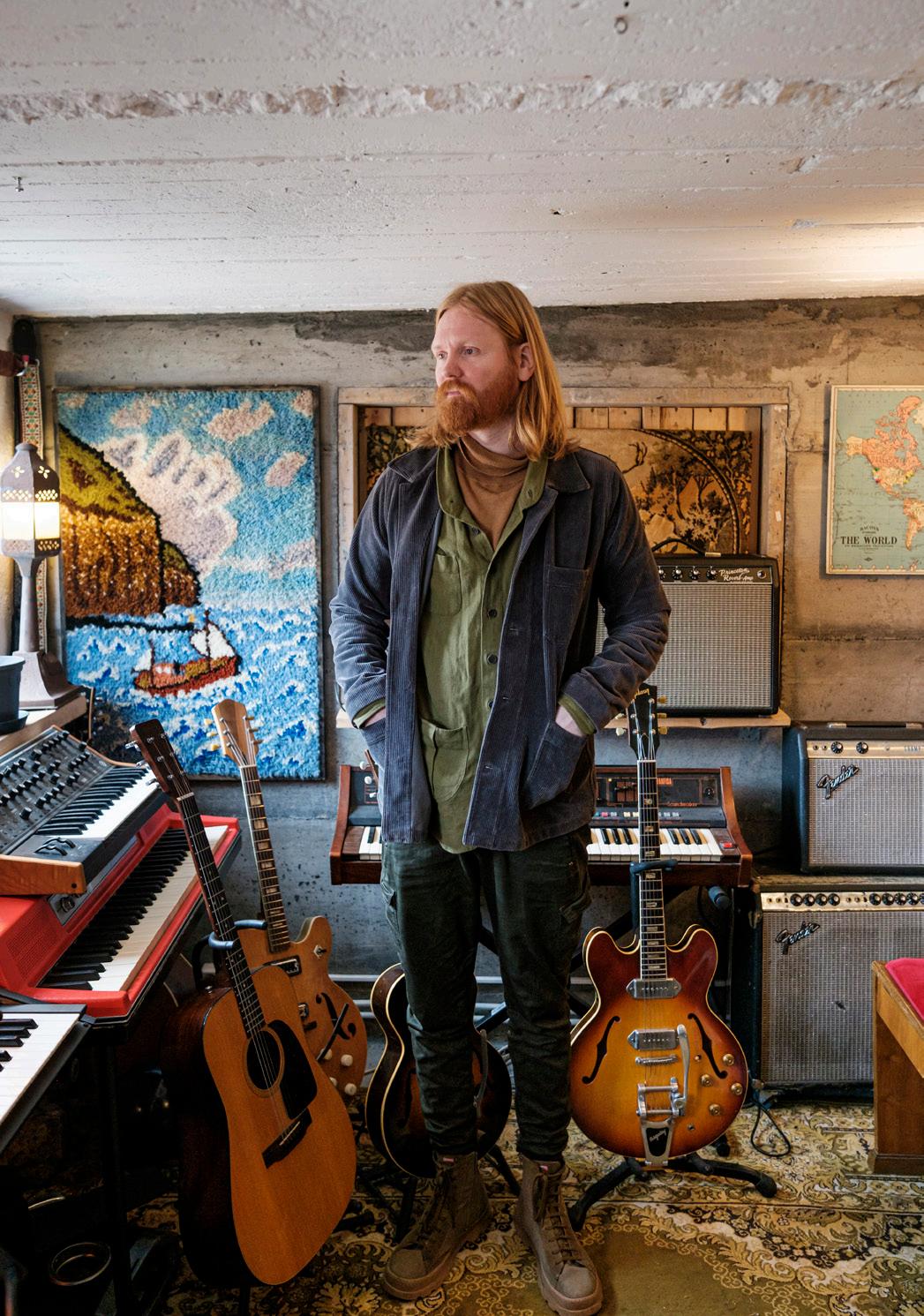
And lots of other things, too.
On the eastern edge of town, there’s a fading yellow house with a roof of grey corrugated iron. A gravel path, lined
with skateboards and kids’ bicycles (Júníus has three children), licks the entrance of the house, which Júníus calls home.
Júníus has recently departed his home – or so we’ve been made to believe – for the purpose of a food run. As we await his return, on a cloud-heavy Thursday morning, I take note of the brake lights of the gold-coloured Land Cruiser parked in Júníus’ driveway, which suddenly begin to glow red. The engine turns over, and the Cruiser stutters onto the street, and Júníus, wearing an impish look on his face, points at us through the rolled-down window.
“I’m just gonna grab something from the bakery,” he yells. “Are you hungry!?”
I glance at my colleague, who shakes his head.
“You’re not terribly upset, are you?” Júníus inquires, beaming like a naughty child, well aware that he’s kept us waiting – and that he’s going to keep us waiting longer still.
When he finally returns, in a yellow coat and fashionable-looking pants, Júníus is carrying a handful of brown, brittle bakery bags, two of which contain a parmesan pastry with a chives dip. He leads us into his backyard, past a hippie camper strapped firmly to the earth, to a small garage that he’s converted into a studio. It was here, he’ll later tell us, that he recorded most of his
new album Guru.
The album is, ostensibly, the topic of our interview, although that topic will prove something of a moving target, coming in and out of view like a clay pigeon; as we, the trapshooters, endeavour to steady our aim.

We’ve only just begun to discuss music when Júníus tosses out a non sequitur, mentioning that my colleague looks a lot like Tim McGraw in the TV show 1883.
My colleague hasn’t seen the show, excusing any unfamiliarity with television-related references by the fact that he “never has the TV to himself.” Júniús, apparently unsatisfied with this justification, gestures towards the obvious solution: the acquisition of a three-storeyed house (precisely the kind within which he resides), so as to throw things into convenient disarray:
“I’m always upstairs, on the top floor, yelling down at my wife: ‘Hey, would you like to watch some TV ʼ !?’’ Júníus yells, playing himself.
“‘Yeah,’ Júníus replies in the voice of his wife: high and effeminate. ‘That sounds good. What are you watching?’”
“I’m watching this disgusting Zombie thing!” Júníus yells back.
‘‘Oh, in that case, no,’’ His wife says, disappointed.
‘‘Well, at least I offered! That’s on you!”
“I know who I am: I’m red-headed – and I’m the odd man out!”
Another stratagem in Júníus’ television scheme, he notes, is suggesting to his wife that they watch a romantic comedy, for he knows that the latter, despite her professed enthusiasm for the genre, will nod off after all of about ten minutes. At which point Júníus can watch what he wants.
“And she’ll wake up just as some guy’s head’s being hacked off,” he says and laughs.
The odd man out
Despite being, arguably, the most famous musician hailing from the Westman Islands (at the 2015 Icelandic Music Awards, Júníus was awarded Newcomer of the Year and Single of the Year for his song Colour Decay, and he recently opened for Kaleo on their European tour), Júníus has never been asked to headline the National Festival.
“I’m not this guitar-party person,” Júniús explains, making oblique reference to the droves of obscenely inebriated young people who attend the National Festival each year, and who are, given their state, more taken by sprightly pop musicians than the carefully-crafted, soul-filled tunes that spring forth from Júníus’ abundant imagination.
“The committee hasn’t asked you to compose the National Festival song?” My colleague inquires.
“No, and I haven’t sought out the opportunity either. I know who I am: I’m red-headed – and I’m the odd man out!”
Outside the narrow window behind the studio’s mixing board, there’s a piece of concrete jutting out from the lava field, which encroaches upon Júníus’ backyard. Júníus explains that it was swept there during the eruption, adding that the lava fields are a popular attraction among tourists. Once, while he was working inside his studio trying to troubleshoot some sound
effect or other, he glanced up at his window and met the enraptured gaze of an Asian couple.
“Ooooooh,” the couple swooned, as if having stumbled upon some rare natural phenomenon. (Which they most certainly had.)
Júníus shrieked: “Ahhhh!”
“They probably thought that I was going to shoot them!” He tells us.
At the time of the eruption, which occurred on January 23, 1973 – and which happened to coincide with the 90th birthday of his late grandfather – Júníus’ father had newly relocated to the mainland. All of his extended family, however, were still residing on the island. As the family hurried to evacuate, his grandfather refused to leave.
“Until,” Júníus says, “all the women in the family started yelling at him: ‘You get the hell out of here!’ Coincidentally,” Júníus adds, “if you want to picture what my grandfather looked like, you can just think of Halldór Laxness. People had certain faces during certain periods of history, don’t you find?”
Wonder-being
Guru is Júníus’ third full-length album.
It was released in November and features nine songs. All of the songs seem to fit neatly within the soundscape of Júníus’ oeuvre – with the notable exception of the last track: Undravera (literally Wonder-being), which is over seven minutes long, written in Icelandic, and features a haunting male choir, beseeching the good graces of some otherworldly being.
It’s a song that seems inextricably linked to its author’s faith.
Júníus was raised in the Betel congregation, a Pentecostal church founded in the Westman Islands in
“God to me is more like a feeling, a kind of energy. You know when the energy is good. You also know when it’s bad. You can sense it.”

1926 by a Norwegian missionary by the name of Erik Åsbö. Júníus’ grandfather would later become the director of the congregation, and although Júníus no longer frequents church gatherings, he still drops by on occasion. His roots in music can be traced to the congregation’s many live performances.
When asked about the man up high, Júníus says that he believes in the God of the church – although he’s not religious, per se.
“God to me is more like a feeling, a kind of energy,” he observes. “You know when the energy is good. You also know when it’s bad. You can sense it.”
I first heard Undravera a day ago (it’s the last track of the album; somehow I had always missed it), during an especially hectic errand run in the city of Reykjavík – and it’s all I really want to discuss with Júníus. Listening to Undravera for the first time was like having the veil of reality abruptly withdrawn, so as to expose another, more naked reality residing below the first.
“Have other people experienced such a strong reaction to the song?” I ask.
“No, I’m sure that very few people have actually
listened to it,” Júníus replies.
On this point, I inquire whether he thinks that his friends and colleagues offer genuine feedback on his music. Júníus retorts that he doesn’t want honest feedback: “It’s like having constructed a house from the ground up, and then someone going: ‘You know, the colour that you chose …’”
“You shut your mouth! You get the hell out of here! I’ve built this thing already!” Júníus screeches at his imaginary detractors. I try to sustain the solemn note.
“It strikes me as very different from everything else that you’ve composed, but I’m not sure whether that’s your experience…”
“Yeah, sure. It’s very masculine and very serious,” Júníus interjects. “It’s this very Icelandic kind of song.”


He tells me that the choir consists of a few guys from the men’s choir Fóstbræður, alongside a few members of the Westman Islands choir. Júníus was listening to a lot of mariachi choirs prior to composing the songs.
“These ʼ 60s, Mexican and Italian choirs, where you have this kind of rhythm backing up the vocals,” he says.
At my request, he then sheds a bit of light on the lyrics.


“There was one sentence that my father helped to write – which is the most badass line in the history of Icelandic music! I was sitting in the living room trying to finish the line: ‘throw a flame upon…’ and my mind was drawn to ‘frozen water’ or something like that. And then my father, who was sitting there on the sofa, watching some very macho movie – he’s always watching these very macho movies, like Rambo, but he’ll always fastforward through the speaking parts: ‘I have no patience for these American-ass conversations!’ He’ll say, angrily. He’s always very angry, but he’s a good guy, ultimately. And I’m sitting there, singing: ‘throw a flame upon …’ and he screams, ‘What about the hell-cold scythe of death!’ (helkuldansdauðansljá ). And I’m like: ‘Where the hell did that come from!?’”

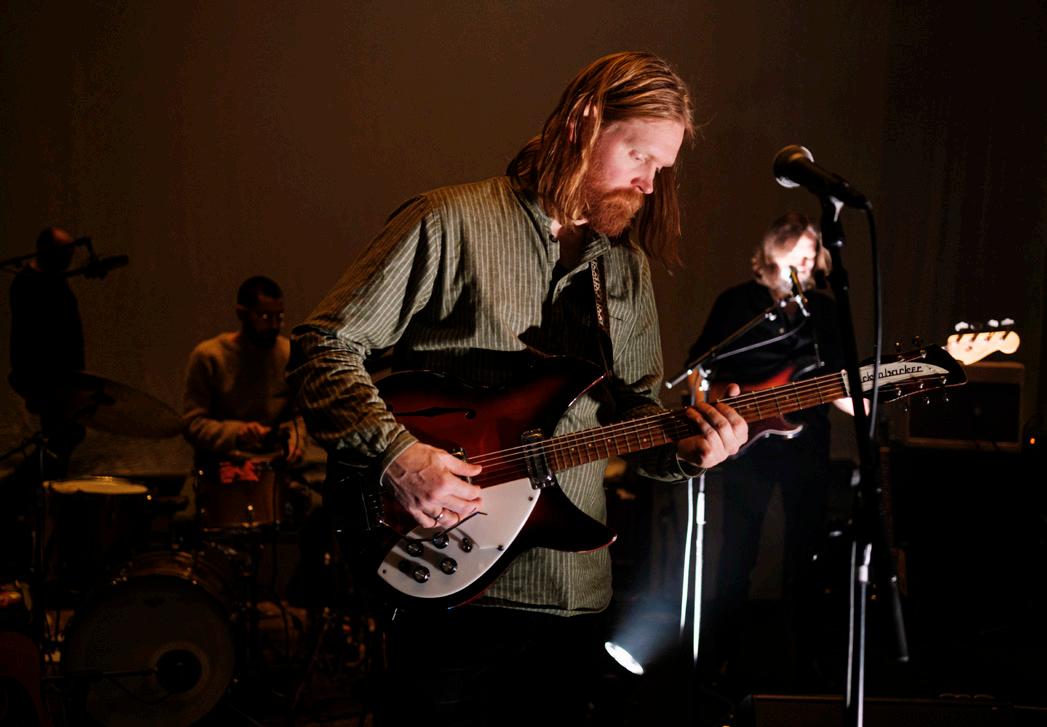

“Do you like the song?”
“Yes. But, of course, I’m always thinking of things that could have gone better. But I’m relatively happy with it. I wanted to do a very Icelandic song: no complaining or crying. Because I think it’s sad how cloyingly sentimental music has gotten. Everything is so emotional and sappy. There are no real rock albums today. There’s always
someone singing as if he’s singing a ballad to some crazy rhythm and doing these fancy vocals. It’s rare that someone plays a song without caveating that song by gesturing towards a feeling of guilty pleasure.”
“And what do you put on, when you want that feeling?”
“I listen to a lot of old stuff.”
“A lot of soul music?” I ask, extrapolating on the sound of his songs.
“I actually don’t listen to a lot of soul music. I listen to a lot of film music. And a lot of old blues. Folk.”
“Is there any artist that has inspired you more than others?”
“Bob Dylan, I think. He’s done so much.”
“Tell us about the concert. What’ll that be like?”
“It’s going to be big. And I’ll be performing Undravera.”
I’m sold.
Contrasts
Júníus’ personality is not at all toned down during live performances. On the following Friday, during his release
“I was sitting in the living room trying to finish the line: ‘throw a flame upon…’ and my mind was drawn to ‘frozen water’ or something like that. And then my father, who was sitting there on the sofa, watching some very macho movie, screams, ‘What about the hell-cold scythe of death!’”
concert at Harpa Concert Hall in Reykjavík, Júníus kept telling people to “get out!” between his songs.

Turning to the members of his brass section, upon finishing one of his opening songs:
“You’re fired! Get out!”
Addressing the audience, a little later:
“Are there any útlendings [bungled Icelandic for foreigners] in the building?”
(About a dozen or so people call out.)
“Yes, very nice …” he replied, as if he were like the thousands of other musicians leaning on this familiar cliché (i.e. reaching out to international listeners) to establish rapport – but then that cliché received the Meyvant treatment: “Get out!” he screamed, almost in the manner of a fascist dictator. “You get out of here! This is my family!”
And then he laughed.
The concert felt very much like a success. The Eldborg auditorium was nearly full, and Rubin Pollock, of Kaleo fame, and the dozen or so musicians who accompanied Júníus on stage, appeared to be thoroughly enjoying themselves. Bríet made a cameo. And so did KK.
During the latter half of his set, Júníus was suddenly joined on stage by a choir, and together they performed Signals. He then played six or seven more songs, prior to taking a bow, and exiting the stage. I was momentarily confused – and held my breath for an encore.
And what an encore it was.
The curtain rose to reveal Júníus standing among the choir, and as the band, located in front, began to play the intro to the track, I expressed breathless enthusiasm to my wife: “Yes!” While I lost myself in the music, feeling slightly conscious of my giddiness, the rest of the audience seemed unsure what to make of it. The music grew louder than before, and the drummer and the guitarist seemed to allow themselves to be taken with a kind of Dionysian wildness, as the thunder of the choir crescendoed, and everything became wonderfully chaotic. The song felt very much like a digression from the rest of the concert, from the rest of Júníus’ body of work – but this was its magic; for, in the words of Ralph Caplan, “nothing is more to the point than a good digression.”
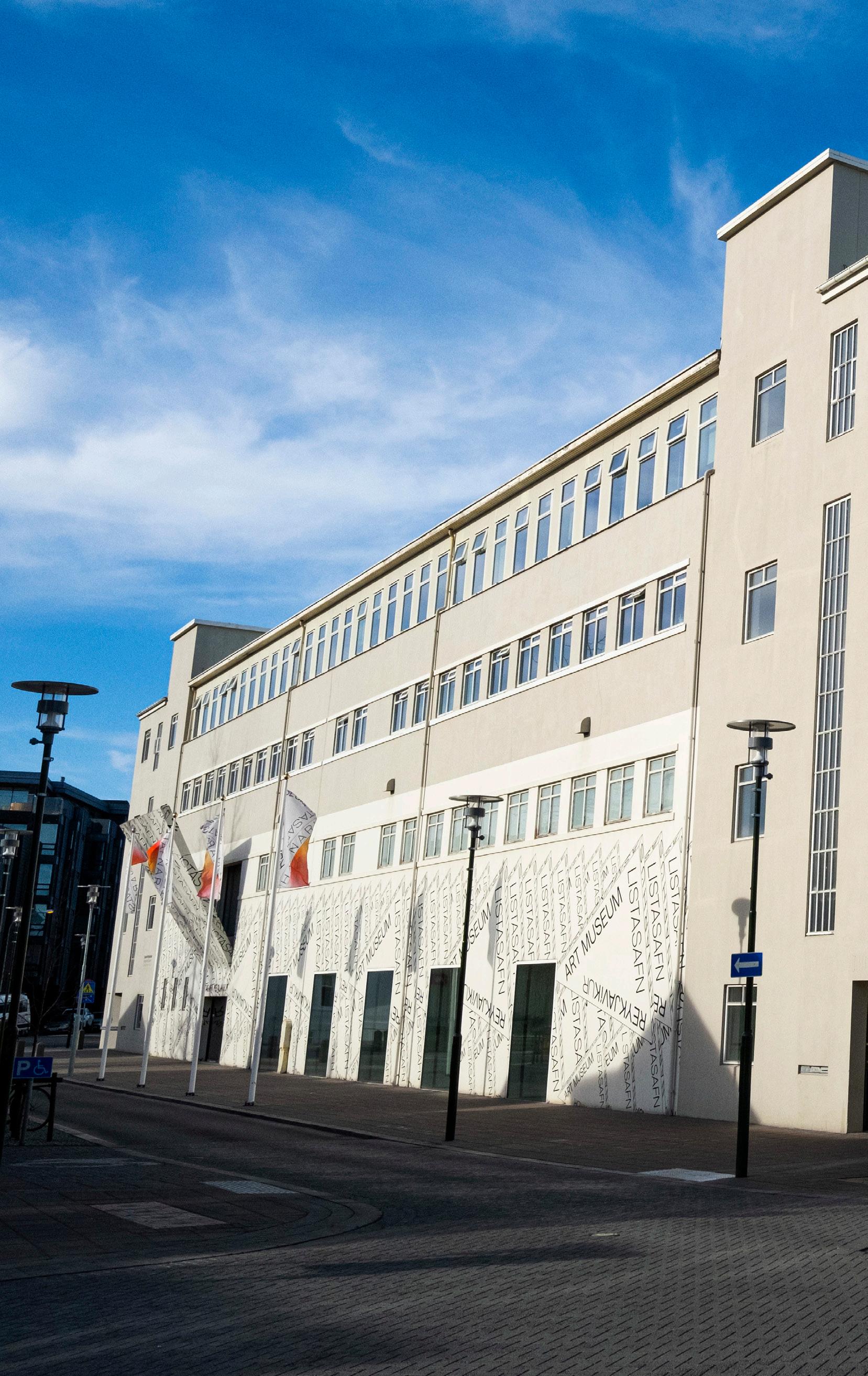

There are many theories as to what fosters creativity and innovation in society: education, inspiration, even suffering. Yet from SoHo to Montmartre, there’s one simple ingredient that never fails to foster creative communities: affordable rent. The new hafnar.haus creative hub in downtown Reykjavík is providing just that – as well as a vision to unite creative people from diverse disciplines under one roof.
While the first tenants moved into hafnar.haus last September, the project started nearly two years ago, when entrepreneur Haraldur Þorleifsson (known as Halli) began getting in touch with city and state officials, as well as prominent members of the local creative industry, about establishing a space for creative workers in the city. He soon hired René, one of hafnar.haus’ current hosts, to move the idea forward. “There's a lot of creativity in Reykjavik. But it’s been scattered all across the city,” explains René. “There’s a space for music. And visual art is somewhere else, and there’s a startup hub in a third place. And they don’t connect at all. We wanted to bring together all these different fields within the creative industries and get people from different backgrounds and stages in their careers all together under one roof.” Halli and City of Reykjavík Mayor Dagur B. Eggertsson discussed Hafnarhús as a potential location for the new hub, and when the city put out a tender, Halli and his collaborators applied and were selected to run the place.

Another of the project’s hosts, Arnar Sigurðsson, points out that municipal support for initiatives like hafnar.haus is crucial. “This wouldn’t have been possible if the City of Reykjavík hadn’t seen the value of bringing creative people together in this space: they would have used the building for something else. Without decisions like this being made, there would be nothing but souvenir shops, hotels, and cafés in downtown Reykjavík, no spaces, or way fewer, that fostered creativity.”
“THE HAUS HAS LIMITATIONS. AND I LOVE THAT ABOUT IT. WE MAKE IT WHAT WE NEED. BUT IT ALSO COMES WITH A SKELETON THAT WE HAVE TO UTILISE, FIGURE OUT, ONE WAY OR ANOTHER. I COME FROM EAST GERMANY, WE HAD TO MAKE USE OF WHAT WE GOT. WE HAD TO IMPROVISE. AND I REALLY EMBRACE THAT. ALL MY UPBRINGING MAKES SENSE HERE.”
As its name suggests, one of the main inspirations for hafnar.haus is the Bauhaus art school and movement, which emerged in Germany in the 1920s. The school aimed to bring together all sorts of arts, design, and handicrafts and eventually became an influential intellectual and design institution. Proximity is already sparking new connections. “What we’re trying to do here is to facilitate that people can meet each other. By having lunch together, having spaces where people can come together, where events can happen. You already start seeing now that people that had never met before have started working together after meeting in the hallway. It’s not rocket science: people should just meet each other more and get to know each other.” Collaboration can benefit creative workers, as hafnar.haus’ other host, Arnar Sigurðsson, points out. “When you put together a lot of creative people with similar challenges, they realise that their problems are not their own personal failings, that everyone else is struggling with the same things. And it creates the possibility of some sort of collective action.”
Along with around 80 private or shared studio spaces for music, visual art, writing, design, coding, and more, hafnar. haus’ residents and organisers have set up a coworking space, meeting rooms, a shared photography studio, a content creation space, and a gallery in hafnar.haus, just to name a few things. René says he would like to see hafnar.haus continue to evolve as an artist-run space, while Arnar points out the importance of staying open to whatever direction that evolution might take. “Organisers of projects like this one often define success in very specific terms. But if you’re leading something creative, you need to be aware that you’re aiming for the unexpected. The way we define our success is if there is stuff happening in hafnar.haus that never would have crossed our minds to aim for.”

“Elín Margot and I are making porcelain sex toys, dildos, butt plugs, and possibly more. They’re going to be the first sex toys produced in Iceland, we’re even going to use Icelandic clay.” AB

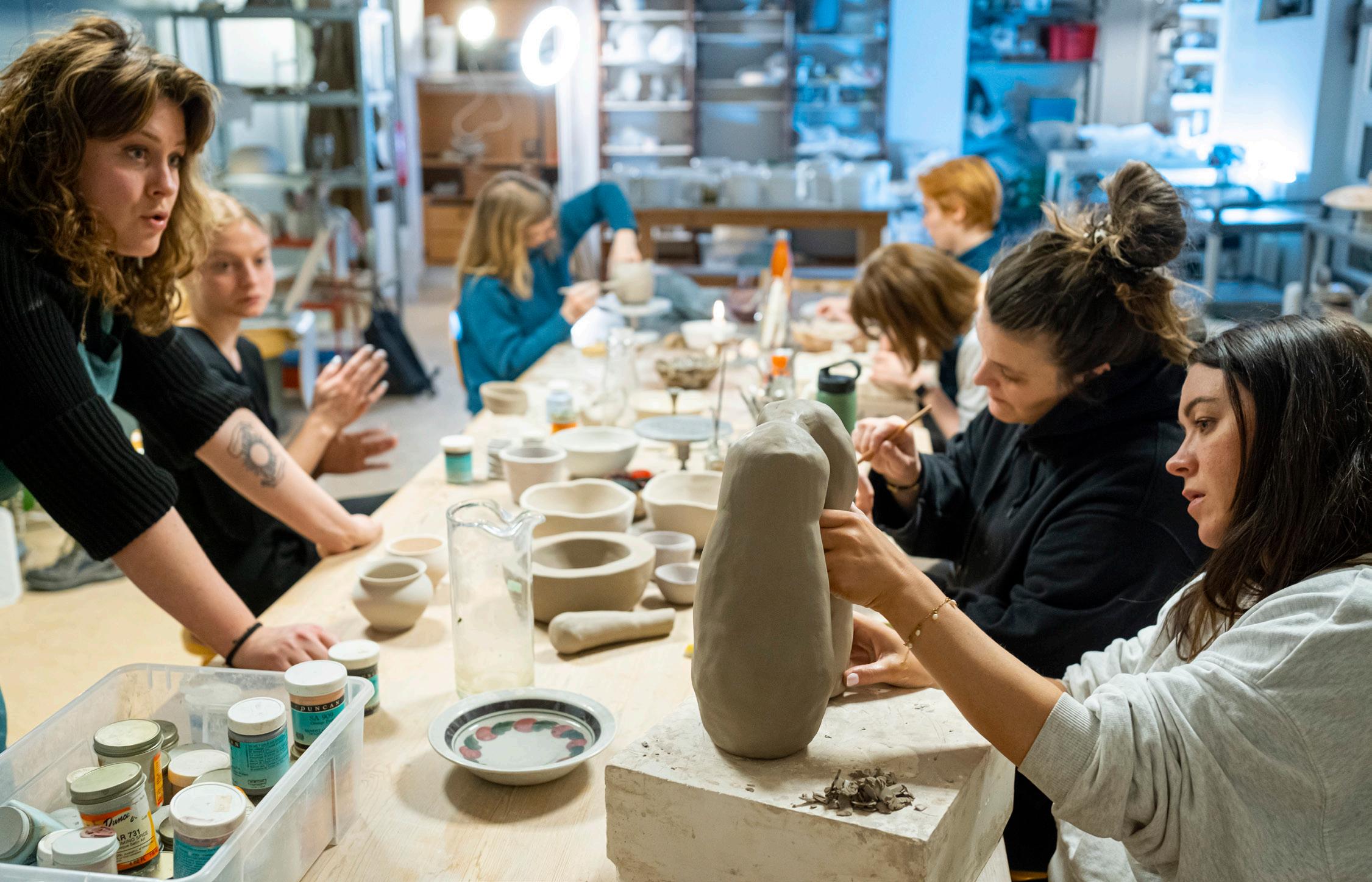
“It’s the dream: you have a private studio space but there’s always people around you can talk to.”
JW




“There are so many different people in different disciplines. I’ve already started working with a designer here, Agnar: he did all the graphic design for my exhibition in the Maritime Museum.”

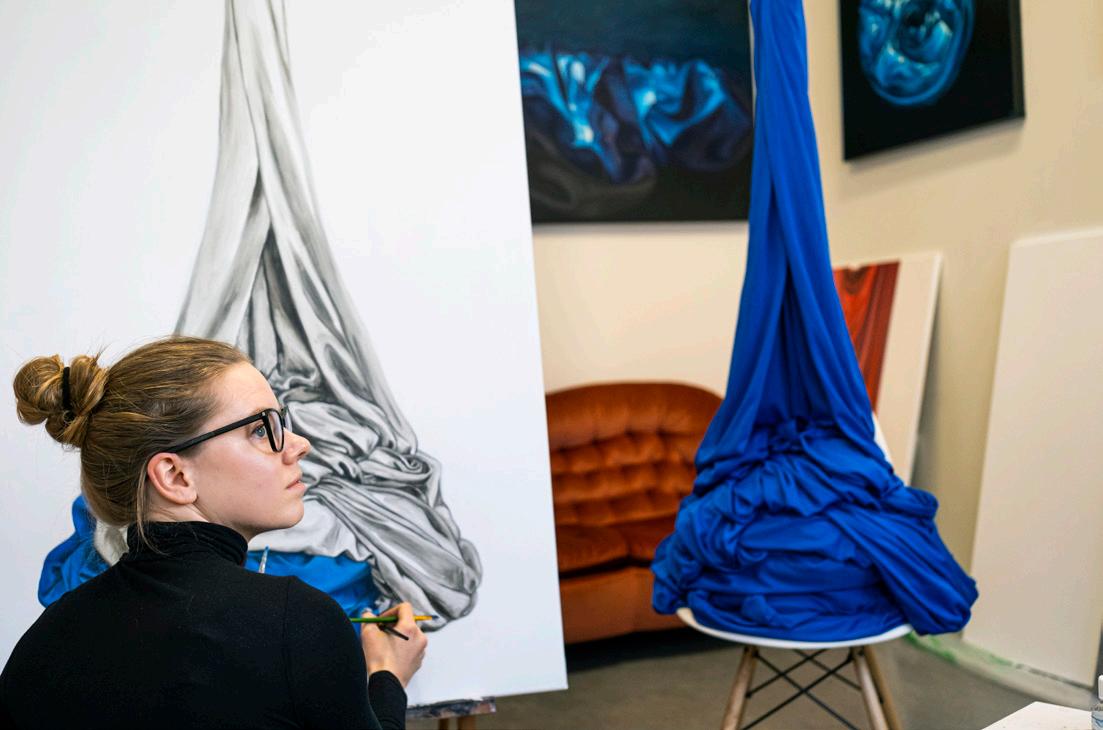

HFH

“I feel like I’m finally in a place where I can talk to everyone around me and get both support and inspiration for what I’m doing.”
“I do a lot of photography for foreign magazines: Nordic Living, Vogue. They tell me that content about Iceland just flies off the shelves.”

MT
“There are seven of us that share this studio: we’re all either sewing, building, or making ceramics.”
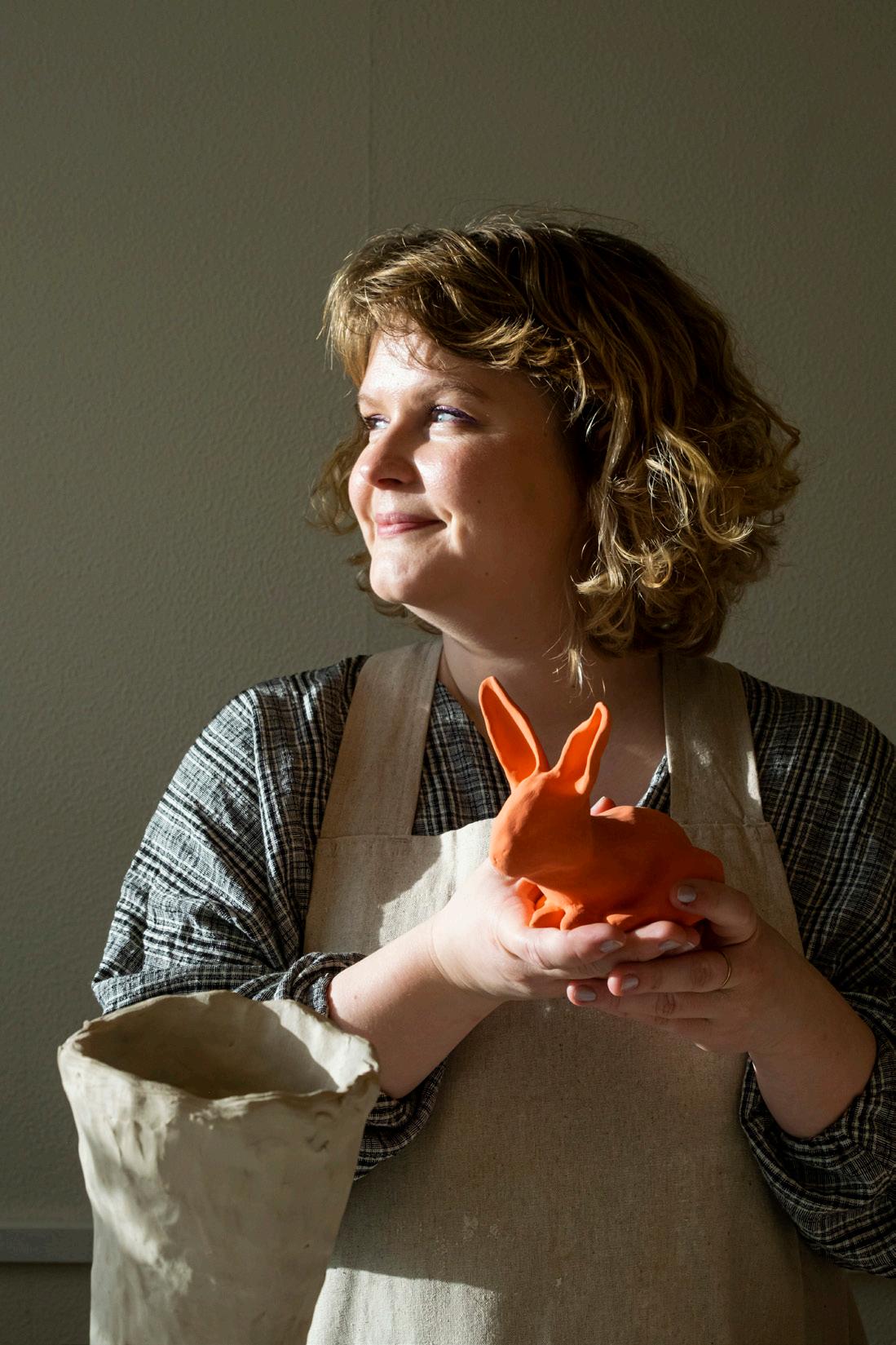
SJ
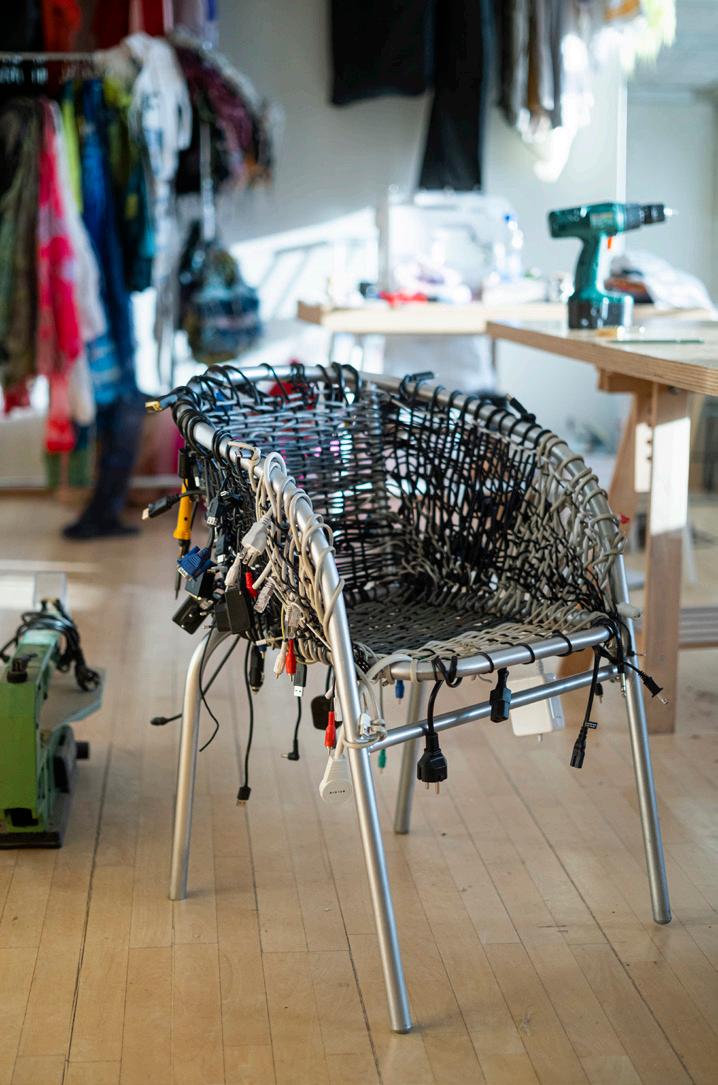
Salted cod croquette with charred tomato jam & cured egg yolk
Icelandic Maki Roll with smoked arctic charr, avocado, green apples & yuzu mayo
Miso glazed lamb fillet & shank of lamb with carrots, baby potatoes & lamb broth
White chocolate skyr mousse with milk ice cream
9.900kr
Gaia restaurant
Ægisgarður 2 - 101 Reykjavík gaiareykjavik.is
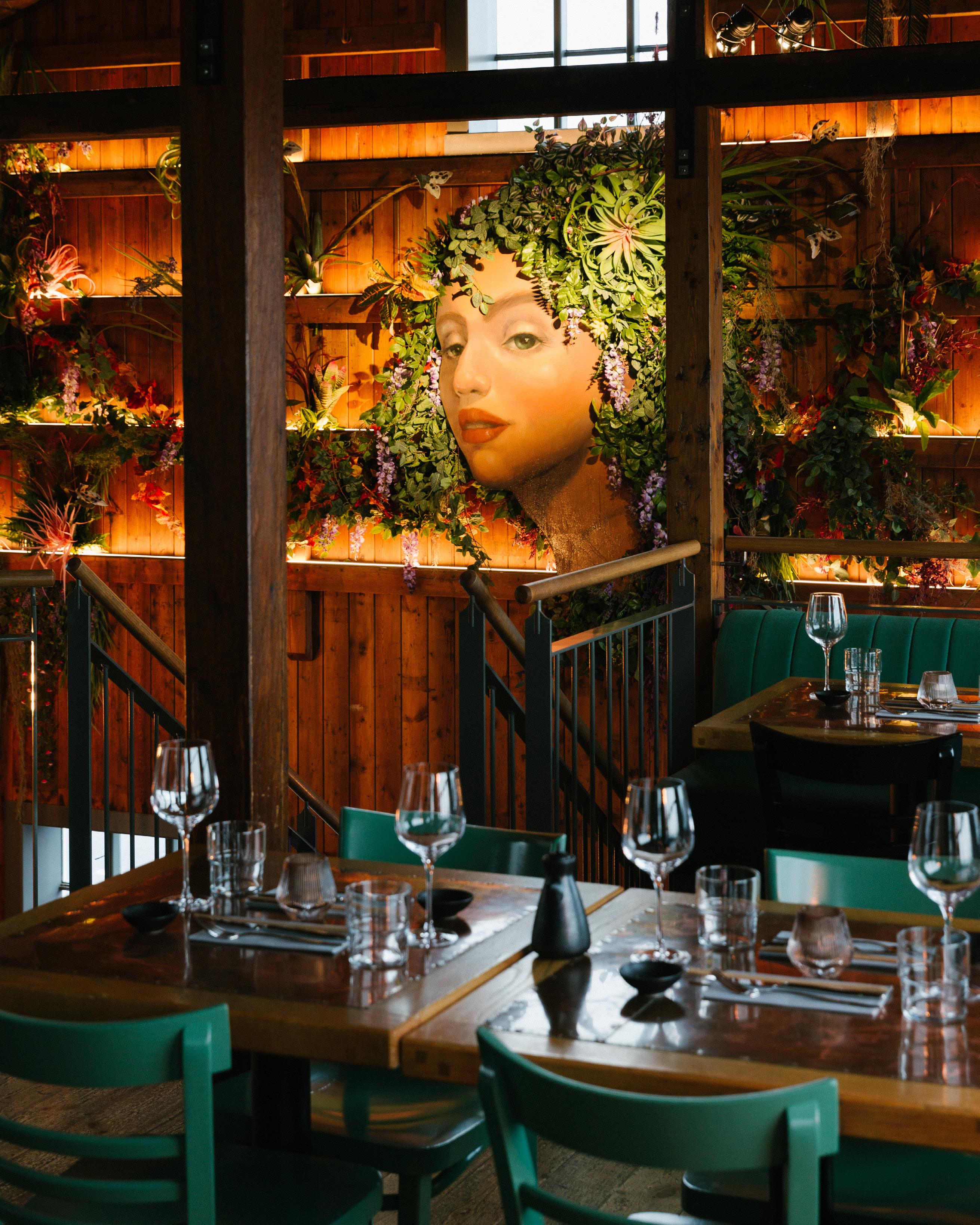
“I’ve always wanted to have a room where, when I have an idea, I can just turn around, and try it out. Just make it or print it. Moving here allowed me to let my business grow.”



IB
“I’m trying to make the time from when I enter the room until I can just do music and sound as short as possible. So I just turn on the power and everything is already hooked up. So I don’t have to break out of the flow I’m in to deal with technical things.”
KR
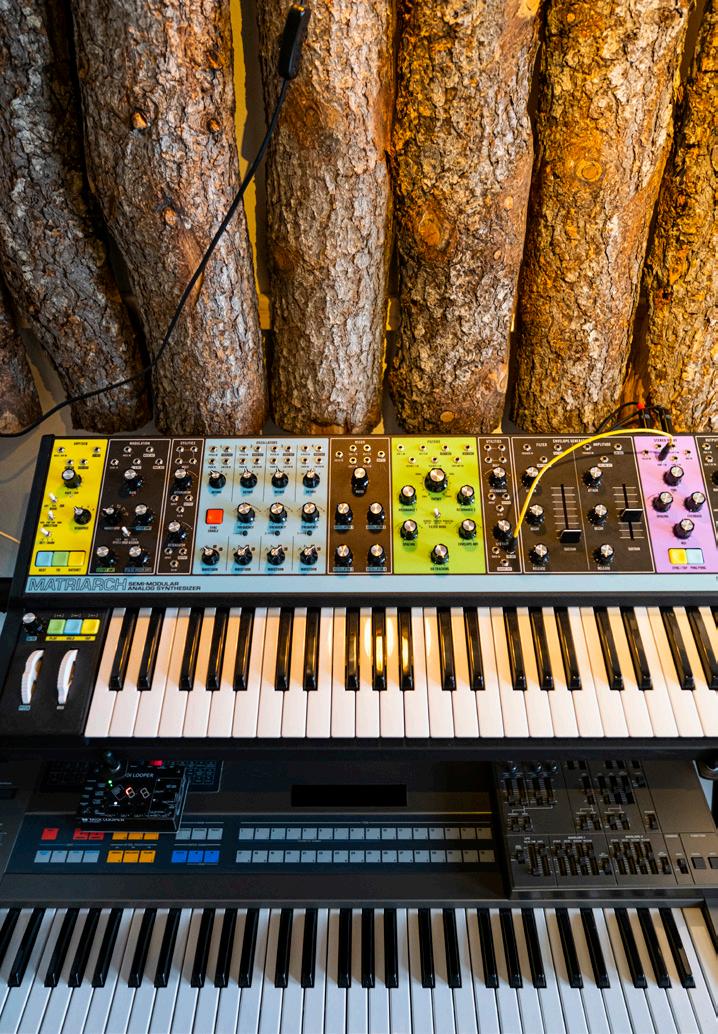
“Here we have a space to bring our ideas to life, and in a year or two or five we will see the effects of what we’re creating both in here and outside of this building as well.” AM
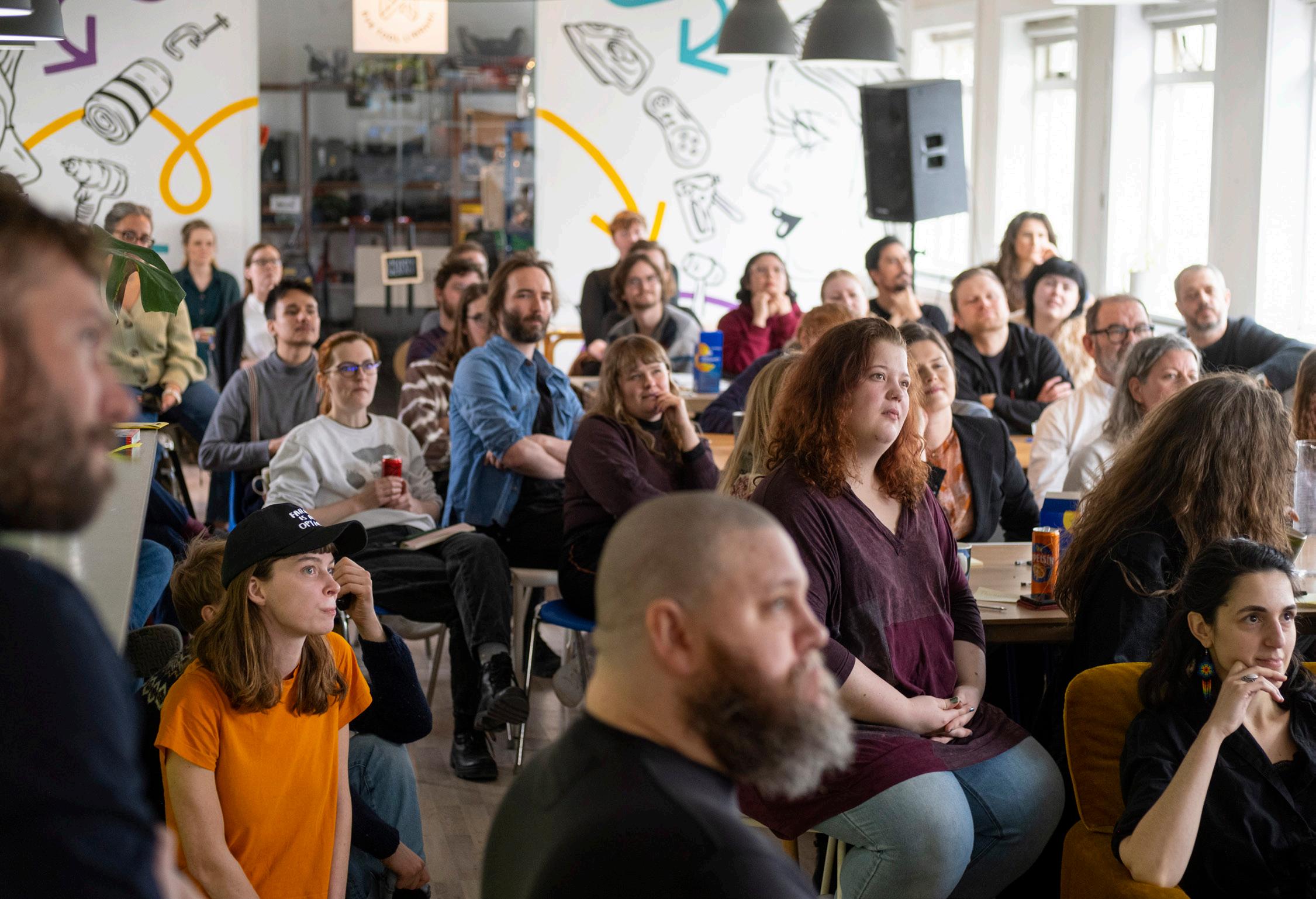

Interviewees:
Anna Marjankowska
Antje Taiga
Antonia Bergþórsdóttir Ástríður Ólafsdóttir
Heimir Freyr Hlöðversson
Ingi Bekk
Josh Wilkinson
Kristian Ross
Sylvía Jónsdóttir
In the summer of 1962, one year before the first ever issue of Iceland Review was published, an 18-year-old teaching student entered the offices of Alþýðublaðið newspaper in Reykjavík, carrying a few photographs he believed would suit the publication. At the time, the newspaper printed the largest photos out of any Icelandic newspaper.
Luckily for Rúnar, the photographs passed muster. In fact, they were so good that Rúnar Gunnarsson was offered a job as the paper’s photographer. Rúnar left school to begin his new career and the rest, as they say, is history.
The National Museum Iceland is currently exhibiting some pearls from his enormous body of work. Despite having shifted gears soon after being hired, working in TV as a cameraman, producer, and head of programming for decades, Rúnar has never put the camera down. He’s been obsessed with photography ever since he saw an exhibition as a child, “The Family of Man”, which MoMA staged around the world in 1957. “It was an exhibition that was supposed to show the world as it really was. To me, it was a life-changing experience. I thought it was magnificent and to this day, photography is my main focus.”
He studied photography in the US, later adding filmmaking studies in Sweden to his resume. But despite producing TV material for decades, he says he never quite found the magic of moving pictures. “Film and TV is such an industrial process that requires a large staff on multiple projects. I never really found myself within that art form. I’ve always been more of a loner. I wanted to stop time with a single click and produce this lasting peace. To stop the world, stop this crazy world and contemplate it. Deep inside, I’m always trying to capture the mood of the time. It’s my meditation, to walk around and take in my surroundings through the camera. It’s almost like a religious rite.”
The core of the National Museum exhibition is photos of life in the sixties, seventies, and eighties in Iceland. “It’s priceless. They’ve written books and made movies about this era of Icelandic history but those are descriptions. It’s really photos from that time that are our best sources. This is what it was like!” Rúnar emphasises.
Rúnar’s perception of his environment has changed over the past few years. Eye disease has left him without sight in his right eye, and he’s down to 60% sight in his left. Despite his diminished vision, he still walks the city streets every day with his camera, looking for the mood of the moment and clicking the button when he finds it.
According to Rúnar, the attitude towards photographers has changed completely. “For the first few decades, I’d go anywhere, make contact with everyone and take photos of

everything I saw. Now, you can’t take photos of children in public, something I used to do quite a lot, because of distrust towards strangers. People are called perverts for lifting a camera around children at play.”
He adds that street photography is ruined as well, as everyone is staring at their phones in every picture. It’s hard to shoot people and hopeless to make a connection with them. It doesn’t result in exciting photographs. In addition, many of the old buildings of Reykjavík have been remodelled. “I used to make series on the ageing and forgotten buildings of Reykjavík. I’ve long admired what the Japanese call wabisabi, finding beauty in the old and worn out. I used to walk around the city, shooting the beauty of decay.” Five years ago, Rúnar found the urge to run out of the house with his camera. “I had this unnerving feeling that all the old doors in the city centre were being removed, as everything morphs into guesthouses and tourist shops.” By Christmas, Rúnar had collected 101 doors in 101 Reykjavík. “Now they’ve all been painted, remodelled or exchanged for new ones. This offhand project has become an important source of times gone by,” Rúnar says with a laugh.
The exhibition includes a pile of the over 50 books Rúnar has produced these past years. Most of the new ones are only printed in a few copies, their are even ones with a print run of one. “I couldn’t enter digitalisation without finding a way to store my photos. A file on a hard drive or the cloud isn’t a photograph in my mind until it becomes physical, a print or the page of a book. Instead of developing all these little photos and storing them in a box, I found the time to edit and create these books. I’m old-fashioned like that.”
Rúnar is still taking photos. “Why shouldn’t I practice several hours a day like a concert pianist? Cellist Pablo Casals practised for three hours a day after he turned 90. It’s the same with me. I know the ins and outs of how my camera functions, all the technical process happens without thinking. But it’s about training your attention. You have it turned on wherever you go and you see photo opportunities everywhere.”
Rúnar continues to compare photography to music, and while most people can enjoy the process, just like some have a better ear for music, some people have a better eye for photography than others. When asked if that’s changing as his vision fades, Rúnar replies: “It’s not a question of sight. It’s an inner vision that some people are born with. There’s an air of mystery to this, I still remember when I first blew up a photograph in the red light of the darkroom, I felt consumed by a spell. And it hasn’t changed at all. Photography is always magic.”
Portrait by Golli Words by Kjartan Þorbjörnsson Photography by Rúnar Gunnarsson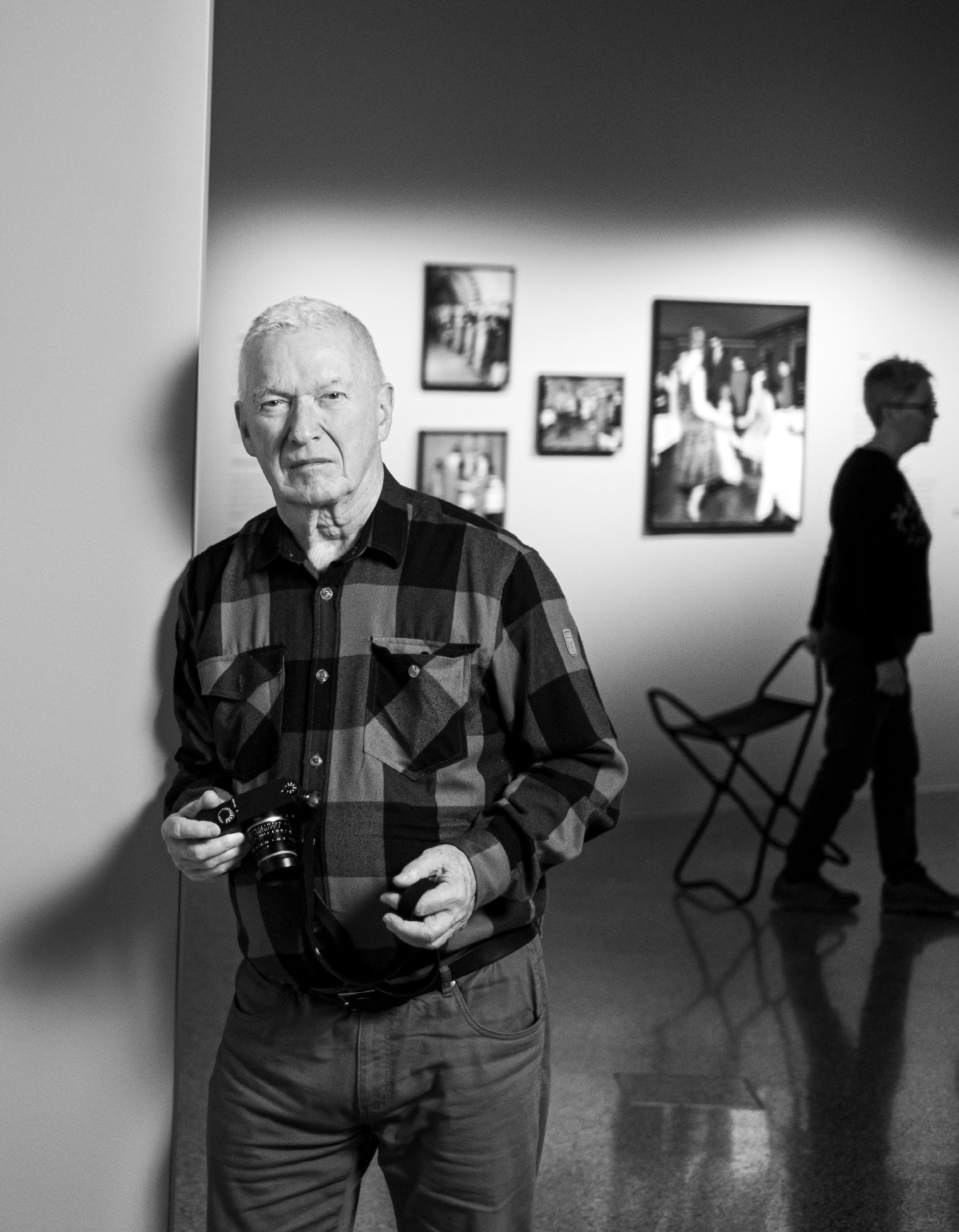

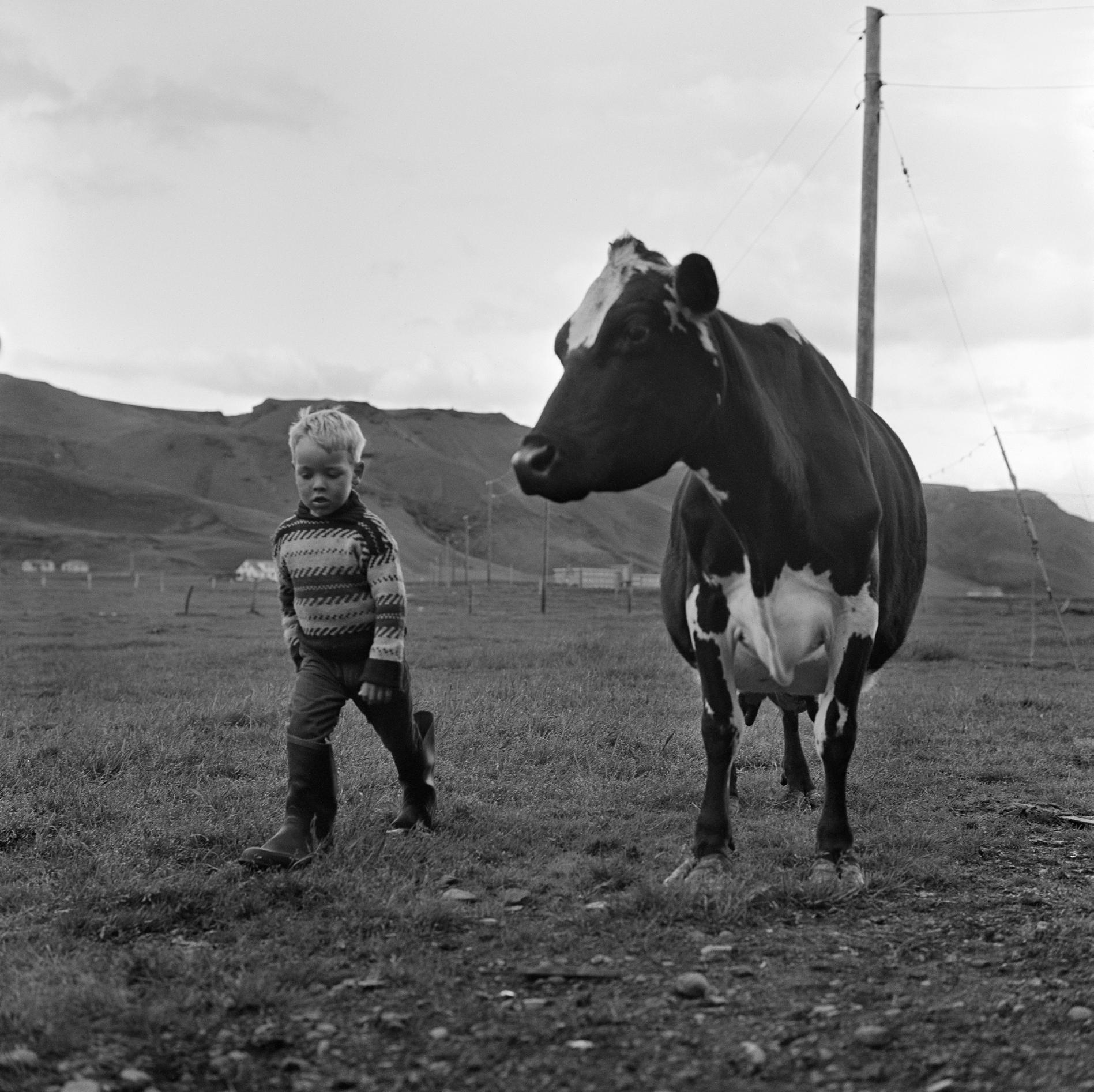
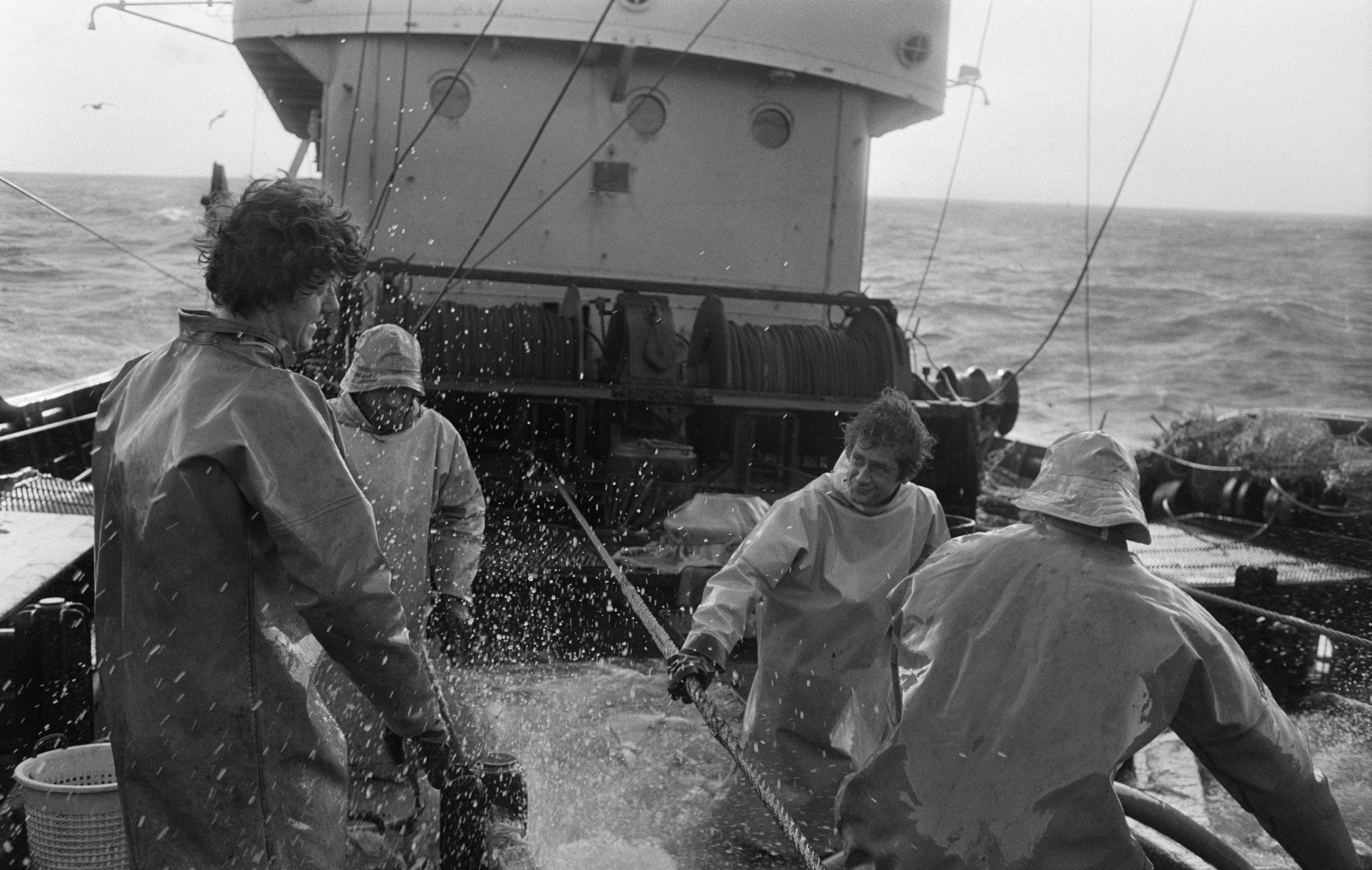

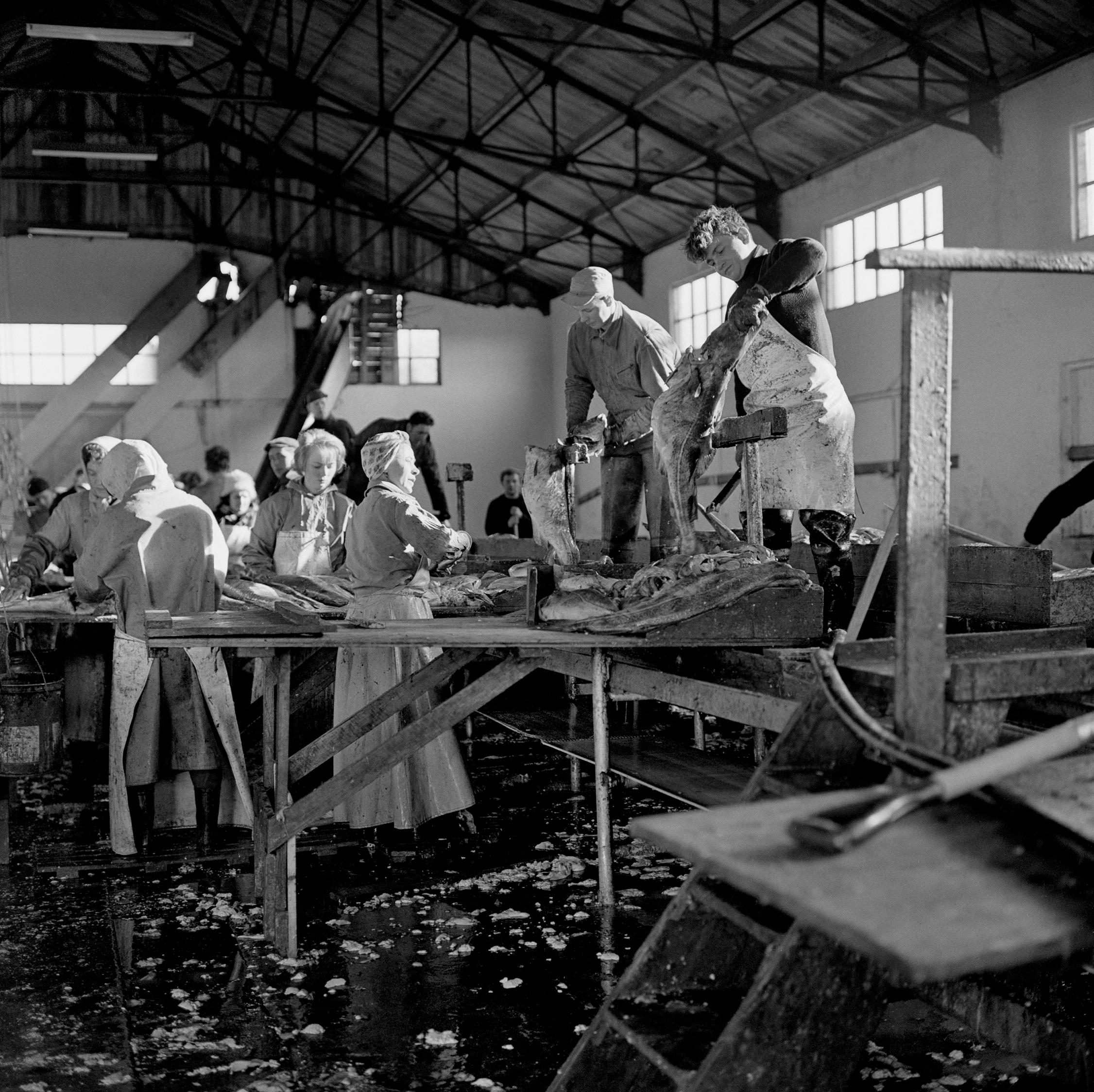
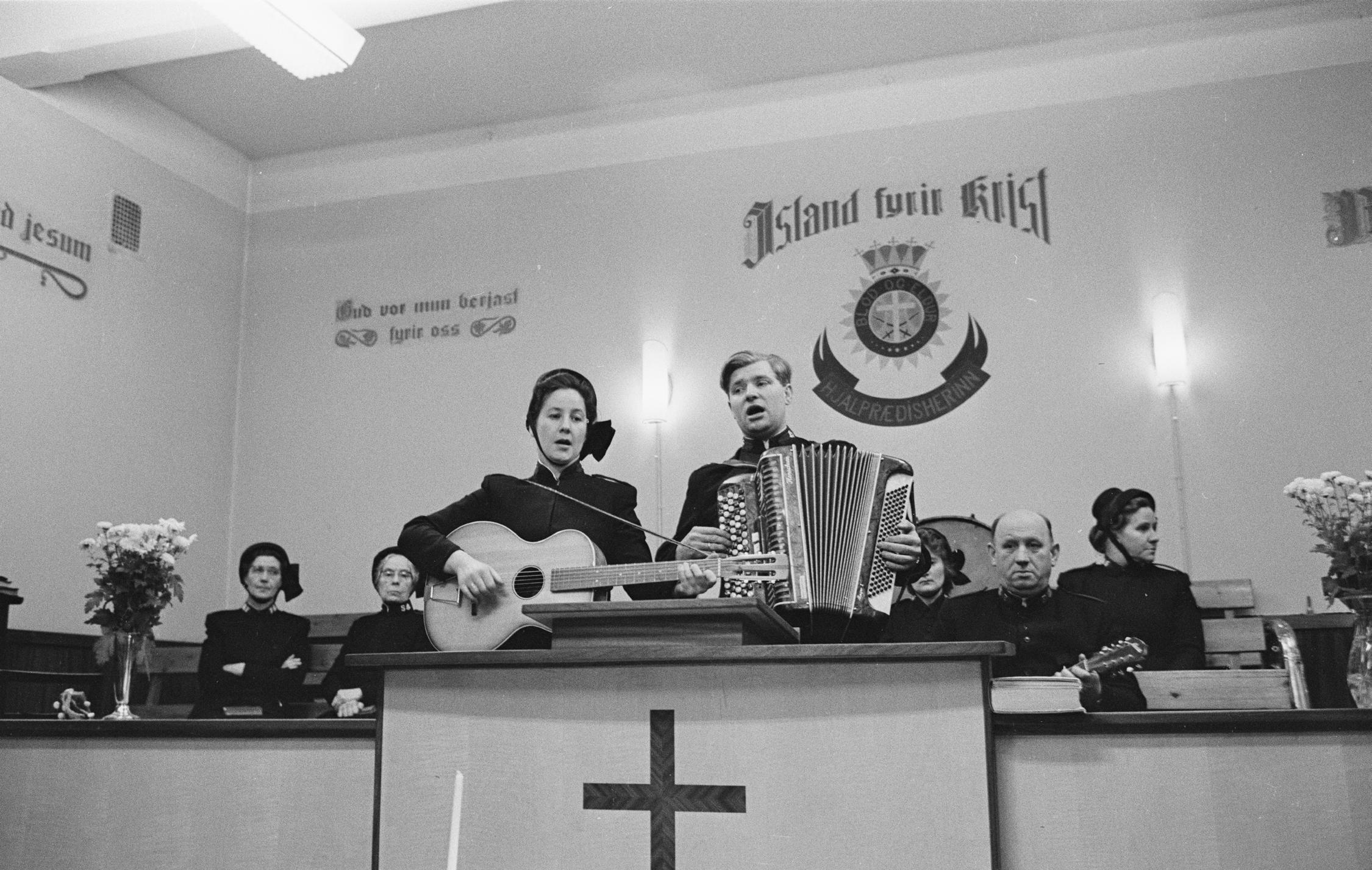





What if artificial intelligence isn’t the death of human creativity
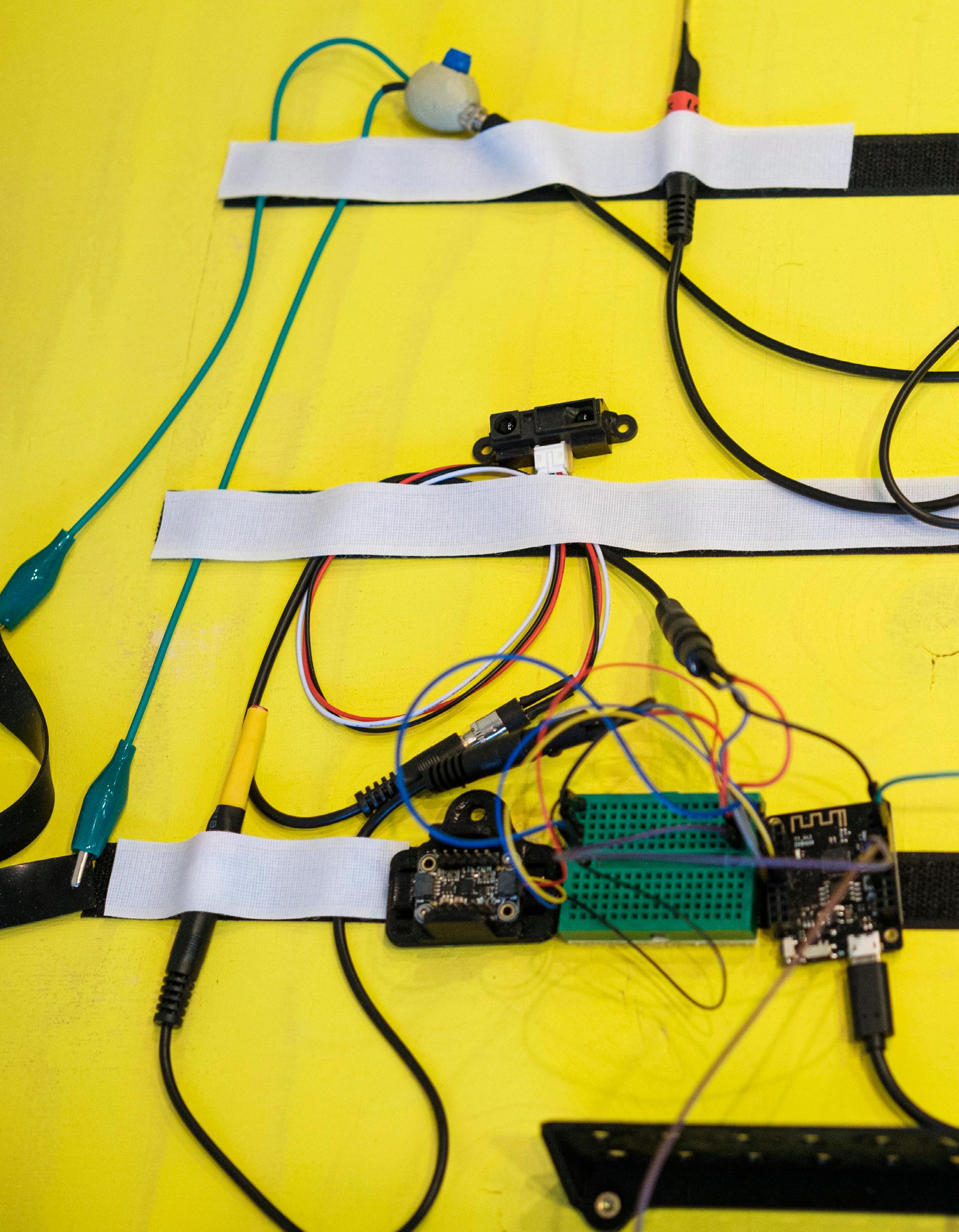 Words by Jelena Ćirić
Words by Jelena Ćirić
but a tool to take it even further?
 Photography by Golli
Photography by Golli
The lab
I’m in a fourth-floor room in the Iceland University of the Arts’ main building. It contains a few computer screens, and a few people staring at them, but there are also strings, tuning pegs, needles, screwdrivers, scraps of textiles, and musical instruments strewn about. Through the window is a view of downtown Reykjavík’s quaint, colourful houses huddled together below the sloping tower of Hallgrímskirkja. None of this conforms to my mental image of a lab developing artificial intelligence – yet that is where I am.
“We actually have an inspirational image floating around, this artwork of a Renaissance lab with instruments of science and art all thrown together indiscriminately. That’s kind of been Thor’s guiding light for what this lab should be,” Jack Armitage explains. They’re a postdoctoral research fellow at the Intelligent Instruments Lab, where a group of researchers, led by Thor Magnusson, is developing musical instruments embedded with artificial intelligence. The focus of the project, however, is not necessarily the instruments themselves, but how they change the way we make music and even the way we think.
“Scientific practice used to be very embodied. That was the case when we were discovering how sound waves work and gravity and the kind of low-hanging fruit of the late Renaissance and the Romantic era. But now most scientific practice is fairly abstract,” Jack explains. The lab, on the other hand, is designed to facilitate a physical research process. “We decided from the beginning to make all of our own furniture, it’s all modular: any of these tabletops, for example, can go away and the frame of the desks can become like a prototyping platform for different installations and instruments.”
All of that modular furniture is, aptly, bright yellow: a colour traditionally symbolising intellect

and optimism but also caution and fear. All four have a close relationship to AI, and all have been in the global discussion lately, as AI technologies that can create artwork or write text have been rolled out to the public. While our emotional reactions to AI are often strong, our intellectual understanding of it remains limited.
Ad hoc and interdisciplinary
The lab’s principal investigator, Thor, is a professor at the University of Sussex. In 2020, he received a €2 million [$2.14 milion] grant from the European Research Council to set up the Intelligent Instruments Lab at the Iceland University of the Arts, and hire PhD students, postdoctoral researchers, and an instrument designer to staff it. “One of the questions I had to prepare for the interview when I was applying for the funding was: why Iceland and why this institution? It has certain disadvantages, for sure: geographical distance and a small community. There are few specialised workers in many areas. Yet in Iceland, you’re able to establish collaborations with those people in three or four hours. You can just call someone in computer science or biology and say, ‘Hey, would you be up for a meeting Thursday at four?’ and they say, ‘Sure, give me a call at 3:50.’ In many other countries, you would have to plan weeks or months ahead. And people are very open to collaborations here. It’s easy to be ad hoc in Iceland.”
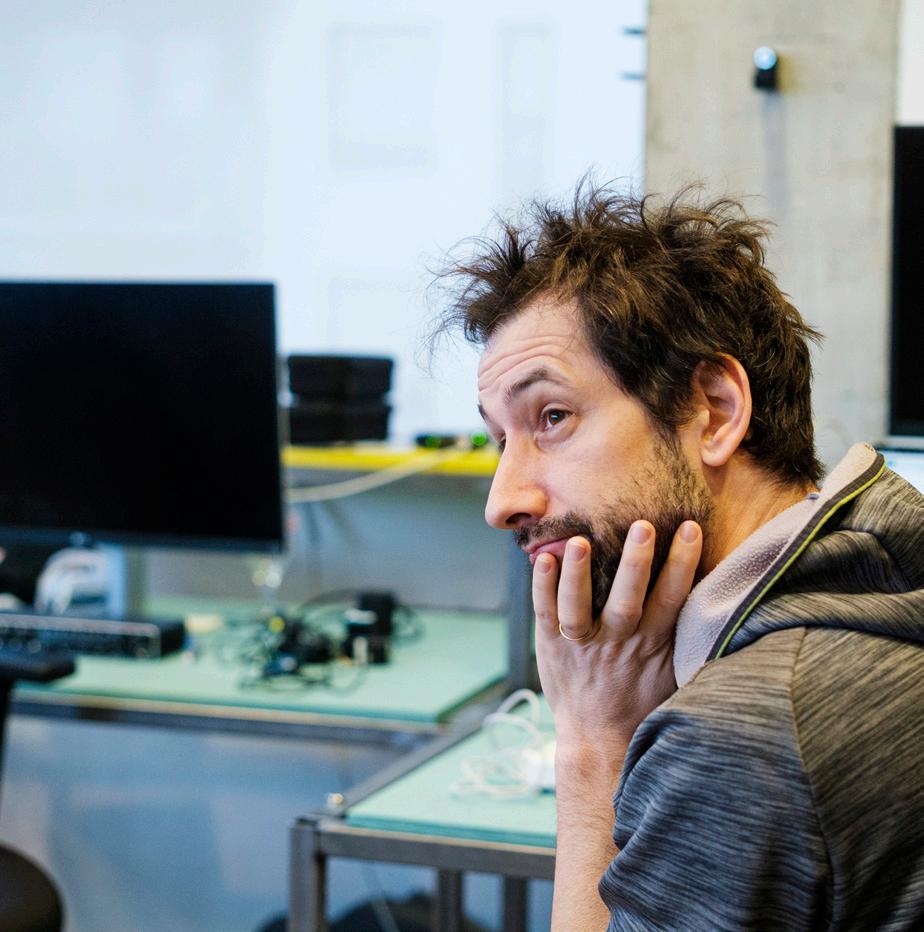
Unlike the AI being developed by big corporations behind closed doors, one of the pillars of the IIL’s research is community involvement. They hold weekly open labs where anyone can come and learn about their work and participate in it, organise workshops where musicians and composers develop and use their instruments, and even draw inspiration from traditional Icelandic music. One of the IIL’s first projects was making an intelligent version of the Icelandic langspil, a three-stringed instrument

“IN ICELAND, YOU’RE ABLE TO ESTABLISH COLLABORATIONS WITH PEOPLE IN THREE OR FOUR HOURS. YOU CAN JUST CALL SOMEONE IN COMPUTER SCIENCE OR BIOLOGY AND SAY, ‘HEY, WOULD YOU BE UP FOR A MEETING THURSDAY AT 4?’ AND THEY SAY ‘SURE, GIVE ME A CALL AT 3:50’.”
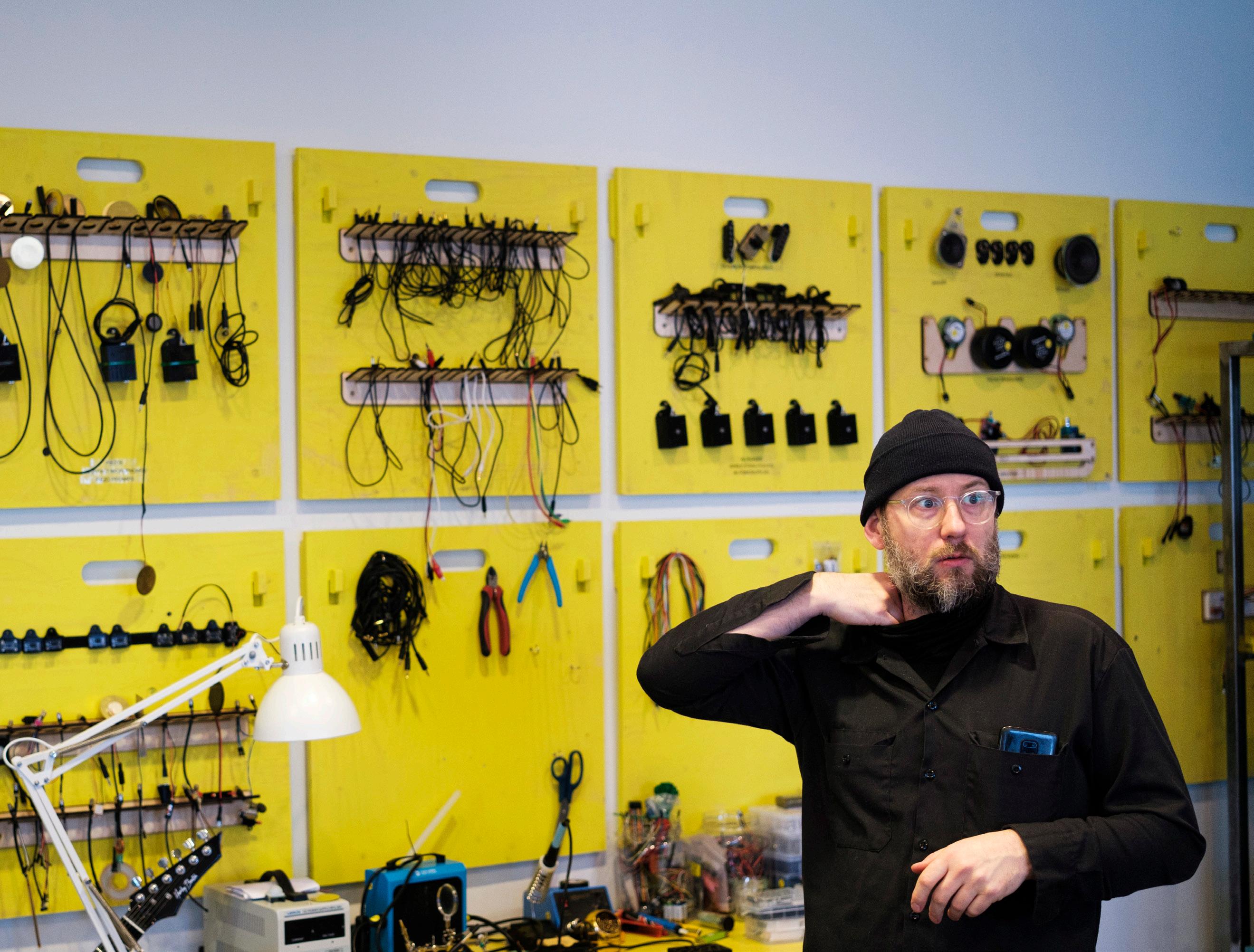
that dates at least as far back as the 18th century. The lab’s researchers made a langspil with a small computer inside it that was writing code to alter the sounds feeding back through the instrument.
“Because it’s an Icelandic instrument it was a sort of gateway into the local culture and allowed us to have lots of interesting conversations with local instrument makers,” Jack explains. Thor adds: “We were careful not to tread on any toes. We asked langspil players for advice and asked them to come and collaborate with us. They were all positive, and they found it an interesting addition to their tradition.” New additions can revitalise old traditions, but they can bring with them changes to the culture around instruments. “If you make the instrument capable of things that it couldn’t do before, you give composers and performers new ideas. This means that the instrument can even acquire a new function that can change the cultural space around it.”
So what are these ‘things’ that an intelligent instrument can do that a traditional instrument can’t? Do they really represent a new frontier, or are they just more advanced versions of the electronic tools musicians have now been using for decades? “Traditionally, the tools that we have

been using to make music are tools that we control,” Thor explains. The sounds that a violin produces, for example, depend on how it’s plucked or bowed by a player. Thor says the same is essentially true for many modern tools and software programmes used by musicians. “These tools are still just an extension of the musician’s will. They are epistemic tools. With conversational tools, intelligent tools, I think there’s a change: the unpredictability of what comes out.” He takes the Notochord project by the lab’s PhD student Victor Shepardson as an example: “It’s a neural network based on 100,000 MIDI files [a format that allows sound to be stored, transmitted, and manipulated electronically]. It can contain the whole human history of music in one little model. And when you play it, the response from the system comes from all this experience. And when we have such devices, I think we have a different type of technology. There’s a shift from clever technology to intelligent technology.”
The Notochord is intended for live performance, and that is what the IIL is really interested in. “There are lots of AI projects that compose music as automatic composers and they spit out the piece and then somebody has to play it or it’s played by a MIDI file. But we are more interested in this dialogue with AI and working with it in real-time,” Thor
explains. “We’re investigating what kind of relationship it is, what kind of language we attribute to that thing. Will we start to say that the instrument is angry or happy or does it have a will? Does it want to go somewhere?” Thor proposes this dialogue as one possible definition of intelligent instruments: they can have a conversation with their players.
There is a lot of apprehension surrounding the possibilities of AI and its effects on society. I ask Jack whether there is reason to fear where the conversation with intelligent instruments will take us. “The leading edge of technical research in AI doesn’t happen in public institutions, it happens in corporations. They’re the only ones that can afford to invest so much in computing infrastructure. The primary aim of these corporations is to operate as a capitalist organisation, and when you think about how AI is projected to us, it’s usually in the context of some new product or the automation of labour. The sci-fi writer Ted Chiang has said that a lot of the fear around technology is really a fear of capitalism: it can be hard to distinguish between artificial intelligence in and of itself, and artificial intelligence as it exists within big tech and capitalism.”
The Intelligent Instruments Lab is not a corporation,
The Icelandic langspil is a threestringed instrument that dates at least as far back as the 18th century. In collaboration with local musicians, the lab’s researchers made a langspil with a small computer inside it that writes code to alter the sounds feeding back through the instrument.

and it is not developing intelligent instruments to replace human musicians or to create scalable, marketable products. It is putting the technologies we often associate with surveillance or dystopian futures into a new, creative context. “By taking these technologies that usually run on giant server farms in a desert somewhere and figuring out tactical ways to get them to run on these small computers and turn them into tactile experiences, we’re providing a different experience of AI, not just one which is technical and visceral, but one which is decontextualised from its capitalist framing.” I’m beginning to understand just how far removed the development of artificial intelligence is from the average person. The IIL aims to involve the public in its work through open lab events, symposia, and workshops, but it is still under the auspices of an arts university – a type of institution that, though not a corporation, can be a different sort of ivory tower. Thor disagrees with that analogy, however, pointing out that the Iceland University of the Arts offers open courses and that its graduating exhibitions and recitals boast the attendance of some 30,000 people, around 7% of Iceland’s population. Still, I wonder what it would take to bring AI development even closer to the other 93%.

The Intelligent Instruments Lab is funded for a five-year period. While its researchers have already published a book and several peer-reviewed papers, run workshops, and released code, the project is still in its early stages. There are many questions the researchers are fascinated by, particularly how AI can change not only the creative process but society in general.
“We have this whole set of sensors and filters called the OrganoLib,” explains PhD student Nicola Privato. “And we’re using it with musicians and composers to develop instruments and try to understand how their process changes both in building and in performing. How the instruments get designed, but also how the music pieces get designed. So it’s a composed system, which is not just the instrument but the whole musical environment.”
The way AI could change this environment is something that fascinates Jack. “In 20 or 30 years’ time, if we imagine the music school up the road teaching instrumentality and musicianship with AI instruments: what does it look like to be very good at playing these instruments, on a technical level? The physical skill is not the same as learning to play the guitar, necessarily, where you just do the scales and the same actions over and over again until it’s burned into your brain. It might be a much more general skill set. And equally, what does it mean to say something culturally relevant using those skills? We don't really know the answer to either yet, but somehow people are going to be learning this, and it's going to be kind of encoded and modelled into their brains. And I think that is ultimately going to change people’s

relationships with other aspects of their daily experience.”
Investigating these questions means that the IIL’s work will have a broader application than just within music. “I could have written that grant proposal to the European Research Council saying we want to build a lot of new AI instruments, but I don’t think it would have gotten funded because there are lots of people all over the world building AI instruments and putting AI into all kinds of things,” Thor explains. “What added value to the project was that we are going to do discourse analysis on the relationship people have with the instruments and study how people feel about it and how they treat these instruments differently from traditional instruments. By understanding and looking into that new relationship, we are then able to come up with theories that could be applied to other fields outside of music. That could benefit AI in general or help, for example, journalists write about AI.”
Even the lab’s instruments themselves might have applications beyond music. The IIL’s post-doc researcher Sophie Skach has a background in textile design and is researching how conductive threads and fabrics could be used in smart instruments. She shows me a piece of knit fabric with a ribbed edge. “With this rib, the first thing that people do is to stretch it, and that could be used as a gesture to be part of an instrument.” She holds out a silvery swatch of knit fabric made of stainless steel. “This could be used as a pressure sensor or stretch sensor,” she explains. I can imagine such sensors used in everything from video games to healthcare.



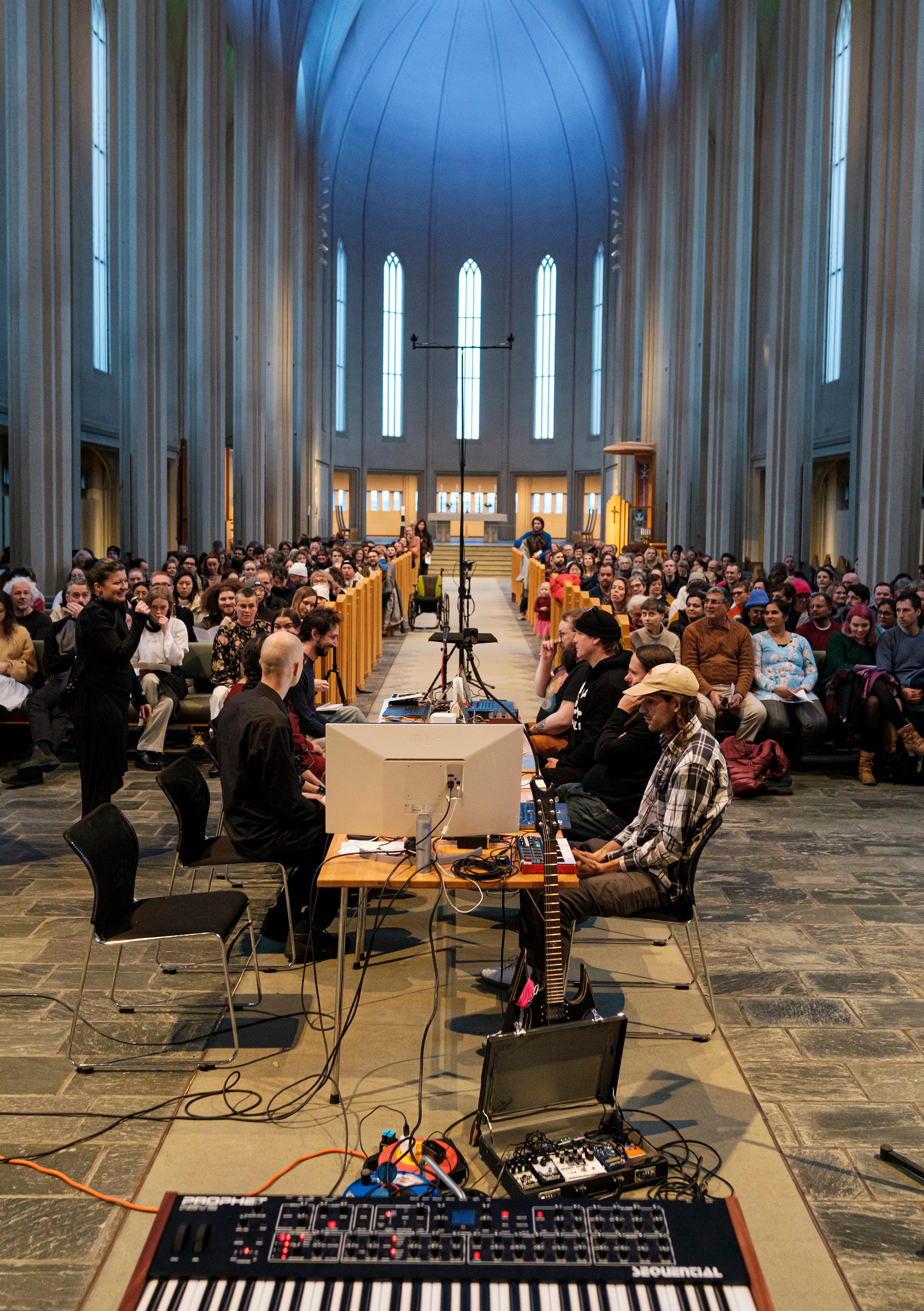
Most instruments consist of hard surfaces. Post-doc researcher Sophie Skach’s background is in textile design, and at the IIL, she is researching how textiles with conductive threads and fabrics could be used in smart instruments.
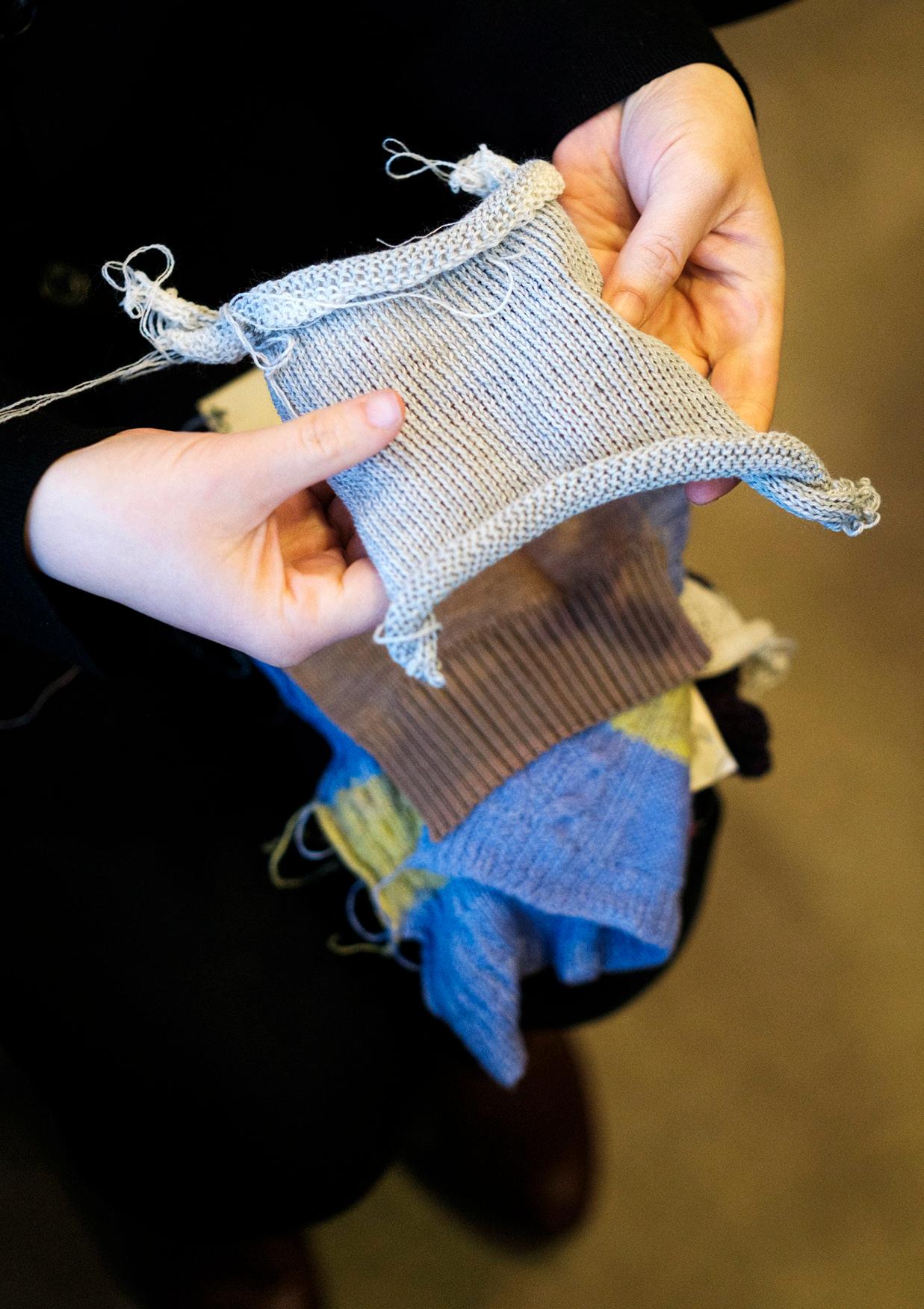
Two days later, I go to Hallgrímskirkja for an organ concert, showcasing pieces written for the organ and some of IIL’s instruments. The church is full of guests of all ages, plenty of whom I am certain would never attend a traditional organ concert at Hallgrímskirkja, or elsewhere. And this is by no means a traditional organ concert. One piece, for example, by composer Deepa R. Iyengar, is a sonification of neural data from a rat’s brain. Composer Áki Ásgeirsson, who led the IIL composition workshop that resulted in this concert, introduces the piece with the remarkable sentence: “I think this is the first time a rat’s brain indirectly plays such a great instrument.”
Later in the concert, composer Sara Flindt plays the organ using two magnetic disks: as she moves them through the air, her gestures produce clusters and chords at different registers, starting and stopping with the flick of a wrist. Ragnhildur Andrésdóttir plays the organ by dragging a knife across the strings of an electric guitar. Many of the pieces on the programme tease out sounds from the pipes that an organist sitting at the console would never be able to produce. They are interesting, bombastic, experimental, challenging.
As a musical experience, I can’t help but feel that this concert is not so different from the many composition recitals I attended as a music student at university more than ten years ago. Perhaps it’s too early to be able to see how the IIL’s work will give us a better understanding of artificial intelligence. On the other hand, maybe I am beginning to understand that AI is not as foreign, as antithetical, to the creative process as many of us “non-techies” imagine.
While I listen to the many ways the evening’s featured composers have applied AI to play the largest instrument in Iceland, I wonder about the even-larger tech companies developing AI for other purposes, behind closed doors. Is the work of the Intelligent Instruments Lab just a drop in the ocean? Is there a way to ensure its findings will be heard and applied where they can have the broadest possible impact? Or will they just reverberate within a different echo chamber, the world of experimental art? Thor argues that experimental art does impact the wider world. “Experimental music paves the way into the unknown, and that filters into other music eventually,” he tells me after the concert.
The audience faces the composers, seated at a long table, and together, we listen to the eccentric sounds and watch MIDI signals flash by on a screen. There are tech issues and glitches. “This is messy technology,” Áki interjects. “It’s all a work in progress.” Perhaps the very value of the Intelligent Instruments Lab and its work is this very messiness: showing us that AI is not just a tool to be used for surveillance or profit, but that it can be creative, impractical, and playful. And what could be more human than that?
“IF YOU MAKE THE INSTRUMENT CAPABLE OF THINGS THAT IT COULDN’T DO BEFORE, YOU GIVE COMPOSERS AND PERFORMERS NEW IDEAS. THIS MEANS THAT THE INSTRUMENT CAN EVEN GET A NEW FUNCTION THAT CAN CHANGE THE CULTURAL SPACE AROUND IT.”
 Halla Þórlaug Óskarsdóttir
Illustration by Ásdís Hanna Guðnadóttir Trans. Larissa Kyzer
by
Halla Þórlaug Óskarsdóttir
Illustration by Ásdís Hanna Guðnadóttir Trans. Larissa Kyzer
by
I have twice been asked to stop screaming, both times in a hospital. The first time, my mom was dying. The second, my daughter was being born.
Both instances are shrouded in fog, like I was in some other world. The first time, it was my brother, as I recall. In my memory, I’m roaming the hallways of the hospital, sobbing loudly. He asks me to keep it down—shh, he takes my shoulders and puts his finger to his lips—and I realize that I’m making the other patients anxious.
I ignored his advice. It felt good to dwell in the pain, to feel it wrapping itself around me, tight. It was like telling an addict to stay off the dope.
I sat alone in front of the mirror with the sole purpose of submersing myself in sadness, dunking my head under. No one was to know I was doing it. No one was to save me. I wanted to sink deep, deep into the cold abyss and then see if I’d float slowly back up to the surface.
The second time, it was a doctor—he’d come into the delivery room during the final sprint. He didn’t speak my mother tongue. I see now how sad that is, that no one who assisted with the birth of my daughter understood my mother tongue. The doctor told me to shut my mouth and focus on pushing.
These two instances could not be more different from one another, but in their own way, they both mark a beginning and an end. They are tallies on the timeline, tallies that change the entire course of events. The first time, I felt defenseless, helpless, despairing—I was screaming for help. The second, I felt I could conquer the world. That scream came from my guts.
Shh, said my brother. Shh, said the doctor. Don’t make a scene.
Underwater, the sounds of the outside world are dampened, and we disappear inside ourselves. While we do, it’s like we don’t belong to this world, just to our own stories, our own worlds and existences.
I remember Mom on the sofa. Remember what it was like to crawl into her arms, lay my head in her lap, enjoy the moment. Anxious she’d get restless, start tidying the house.
I remember her thighs. Her legs, crossed at the ankles and stretched out on the coffee table. How she’d switch feet. Talk on the phone. TV on. I remember everything about her gestures, her postures, even her heat.
For a long time, I had trouble accepting the fact that Mom abandoned me, even though she’d promised she wouldn’t. Or maybe especially because of that. “You’re not going to die, right?” I asked her once, her sitting on the toilet, me floating flat as a board in front of her. “No, my love, I’m not going to die.” “Promise?” I added, biting my tongue, a bad taste in my mouth. She looked at me and hesitated—not for more than half a second (I didn’t notice it then, but I know better now). “Yes,” she said. “I promise.”
And long after she died, I prayed—as I still do to this day—that God let Mom stay with me always. It became such a normal part of my nighttime routine that I barely noticed it. DearGod-let-Mom-stay-with-me-always. But every time, deep down, a twinge of guilt.
Because what if Mom wants to do something else?
The first person I told that Mom was sick was my French teacher. We were supposed to turn in a journal in French after Christmas vacation. Most people wrote about gaining weight or what they ate. I wrote about Mom’s cancer diagnosis. Wrote about how I was feeling. Wrote about being scared. I looked up complicated words in the dictionary. Used every line and took pains with my penmanship. When I got the journal back a few days later, my heart fluttered. I opened it to see a couple of corrections in red pen, a comment from my teacher, praising me for my good work.
The next time, I wrote a short entry about going to the swimming pool and out for ice cream.
My brother told me to never look into a mirror in sorrow. He said mirrors magnify hurt, that you start to pity yourself— feel your reflection’s pain—that sadness fluctuates like a soundwave that always finds the same frequency and then amplifies.
I prayed constantly. Asked God to watch over my family, my friends, everyone I loved. I’d started abridging my evening prayers so He wouldn’t waste any energy on anything but the most important stuff. And Dear-God-please-let-Mom-getbetter was the most important thing of all.
But then there was one time I came home, a normal day, a day like those days were, and I was tired, and Mom was lying in her
bedroom, and she was tired, we were all tired. It’s hard for me to conjure up those feelings, I don’t really like doing it, but I can remember standing in the hall, squeezing my eyes closed, and holding my breath. And that time, I didn’t ask God to make Mom get better. I was just so tired.
There’s this guy I follow on social media whose wife has cancer. It’s nice to see him declaring his love for her on the internet, posting pictures of her with no hair doing normal, everyday things like she’s doing them for the last time—she might be, actually—and I’m sometimes jealous of this man who’s able to look at the everyday through understanding-tinted glasses. His wife is always the main subject, but the captions he writes to go along with the pictures are always about whatever it is she’s doing. He’s never cloying or overly sentimental, just apt and honest.
When I look at these pictures, I start to wonder if you love someone more if they’re dying. We’re all dying, of course, we could all die tomorrow, at the very same time, even, but our fleetingness is so much more apparent with illness. When the quilt of habitude is yanked off us. We lose our footing, we belly flop, fumble for something we can hold onto. As if we’re frightened that the floor will start tilting and we’ll slide into the abyss.
For a long time, I was afraid that the first person I loved would get sick—really sick—that he’d fall ill with some horrible illness and slowly waste away. But first, he’d lie on his deathbed. (The ‘deathbed’ is such an overwhelming concept—what a lot of pressure.) Sitting beside his deathbed would be his new girlfriend. I was afraid that I’d suddenly be filled with an insurmountable regret at having ended the relationship and that it would be too late to do anything about it. I couldn’t take her place. There would be no going back, we would not have a future together and—and this was the worst part—I would not be able to nurse him in the final days of his life.
I once talked to a conservator about the preservation of plastic objects. She said that not all plastic was good plastic. I nodded. Sure, I said. As the conversation progressed, however, it became clear that we both had very different ideas about what ‘good plastic’ entailed. The conservator thought good plastic was plastic that was somehow impervious to the teeth of time. In my mind, good plastic was plastic that broke down easily. Natural plastic—a contradiction in terms, perhaps.
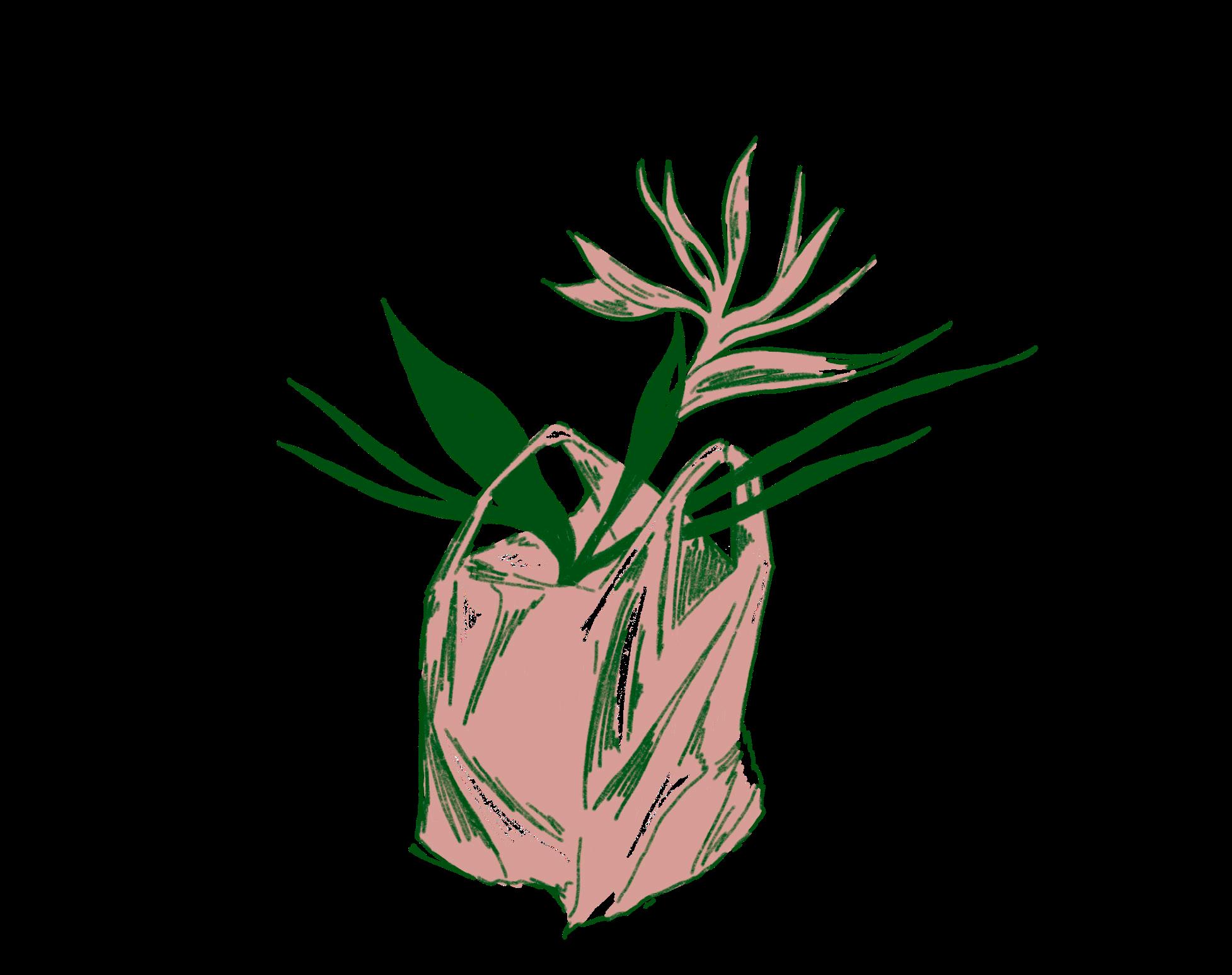
The conservator wanted to preserve things for the future. I wanted to be one with the circle of life. The quicker something degrades, the more natural, I thought. The quicker we disappear, the better.
To preserve the living is impossible—we’re all ticking time bombs. One day, we’ll explode, I say to the conservator, and it’s best that it be easy to forget us.
Halla Þórlaug Óskarsdóttir holds a Bachelor of Visual Art from the Iceland University of the Arts and a Master in Creative Writing from the University of Iceland. She has worked as a radio programmer at Iceland’s national broadcaster RÚV, where she has hosted literature and cultural programming. Halla’s published works are diverse, ranging from plays for stage and radio, poetry, and short stories, to a children’s book that she both wrote and illustrated. For her poetic-fiction work The Quiet Game, she received the Icelandic Literature Centre’s 2020 Grassroots Grant and the 2021 Maístjarnan Poetry Prize. Halla was a guest author at the 2022 Reykjavík International Literary Festival.
But the conservator was probably right about what makes for good plastic. It can’t be good for nature for plastic to become one with the circle of life.
Plastic never disappears.
Plastic is never forgotten.
A long time after, I called up the conservator again. I was then on the verge of disappearing myself and had changed my mind. I wanted her to save me. I no longer wanted to break down and become one with the circle of life.
Time will never again stand still. The face of my daughter changes at the speed of light. I watch her in her car seat, marveling at how quickly the light changes around her. We go into a tunnel—her eyes widen and an expression of something akin to terror crosses her face. A dim, yellowish flash appears and disappears, the lights of the tunnel, and then we go out again—shock, too bright. She’s experienced this before.
My wife is sitting up front with our neighbour, who’s picked us up from the maternity ward. He’s glowing with pride at having been given this responsibility. Being the first one to meet her, our daughter. They haven’t said a word the whole way. Then: When did we get together? she suddenly asks me in my mother tongue. I answer with an exact date, but suggest an alternate, as if I’m unsure. She nods, silent.
The little creature sleeps in her car seat and I gently stroke her head with my fingertips.

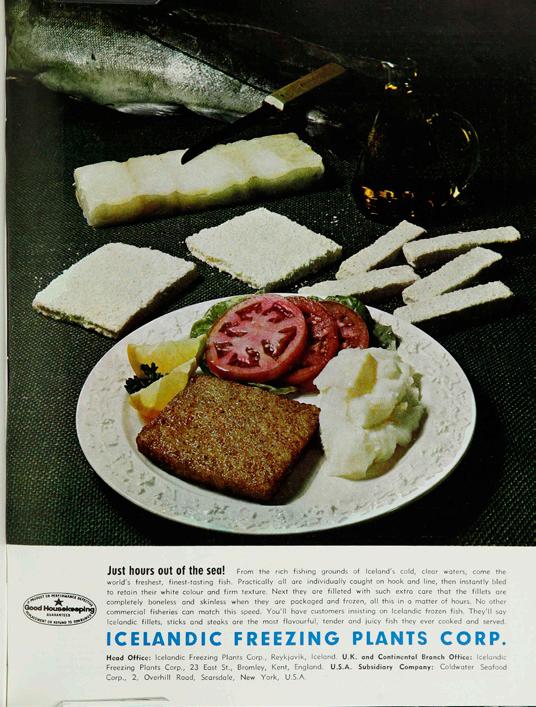
The first issue of Iceland Review came out in August 1963. Its ambitious editorial team aimed to grant travellers, businesspeople, and the general public abroad insight into life in Iceland: the country, the history, the people, and the value they created.


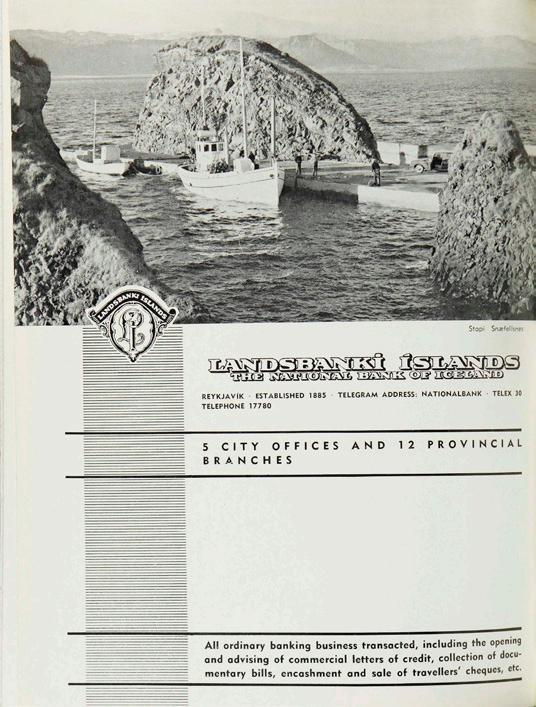



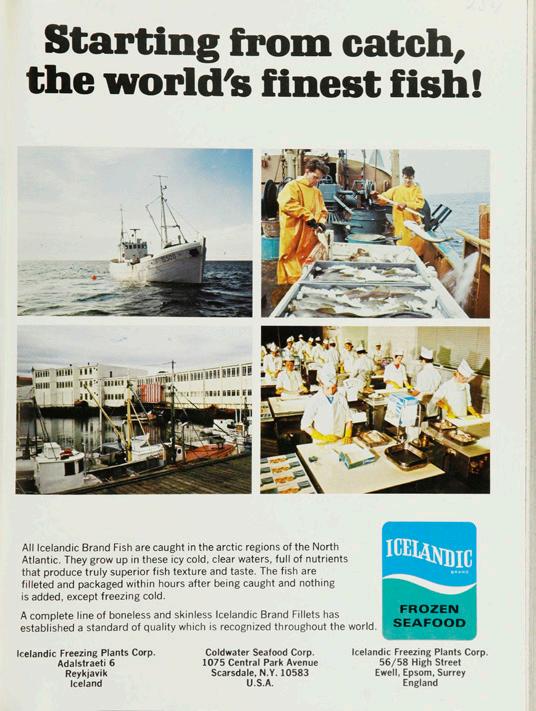



Since then, Iceland Review has continued telling stories of Iceland’s community, culture, and nature in both words and

pictures. Eruptions, earthquakes, economic ups and downs, the first steps of musicians like Björk and Sigur Rós, and five of the republic’s presidents have all graced the pages of the magazine through the years. The magazine’s photographers have captured the force of Iceland’s waterfalls, the heat of its lava, the vast expanse of the highland, and the faces of the nation.

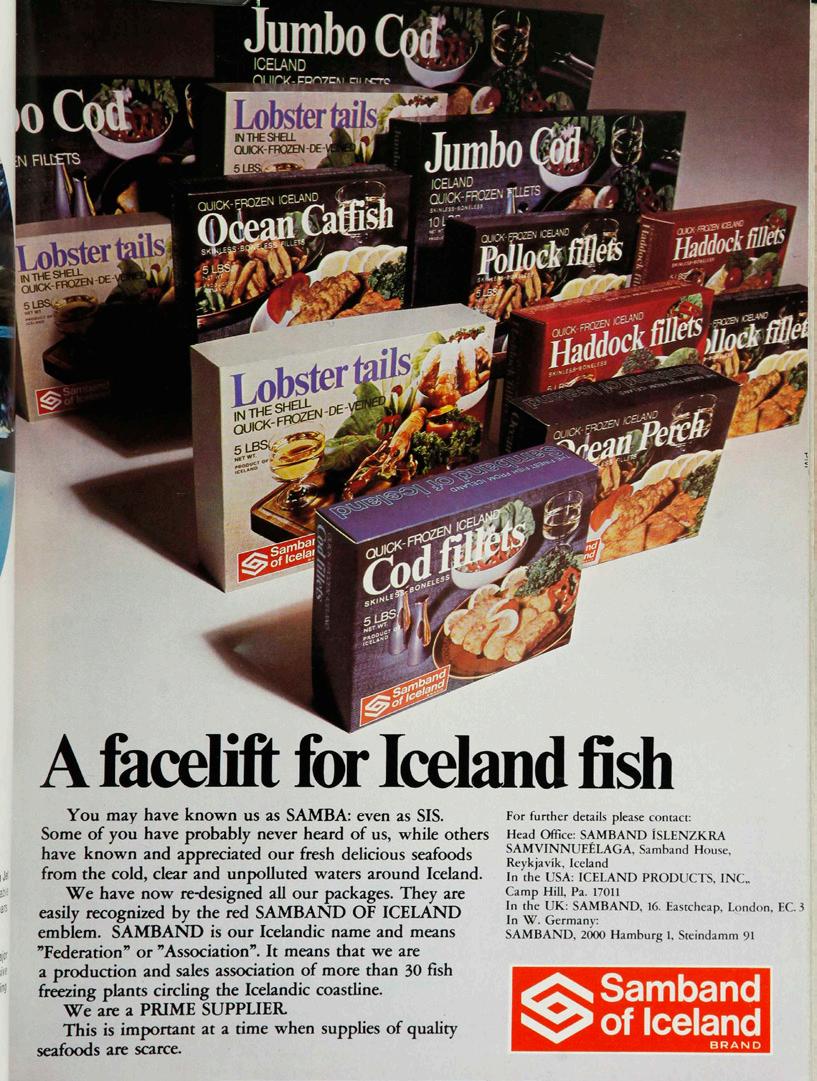
Each issue in 2023, our 60th anniversary year, will feature excerpts from our archives showcasing notable events and topics from years gone by. Although it has been six decades, we continue to see new dimensions of the country and its people.
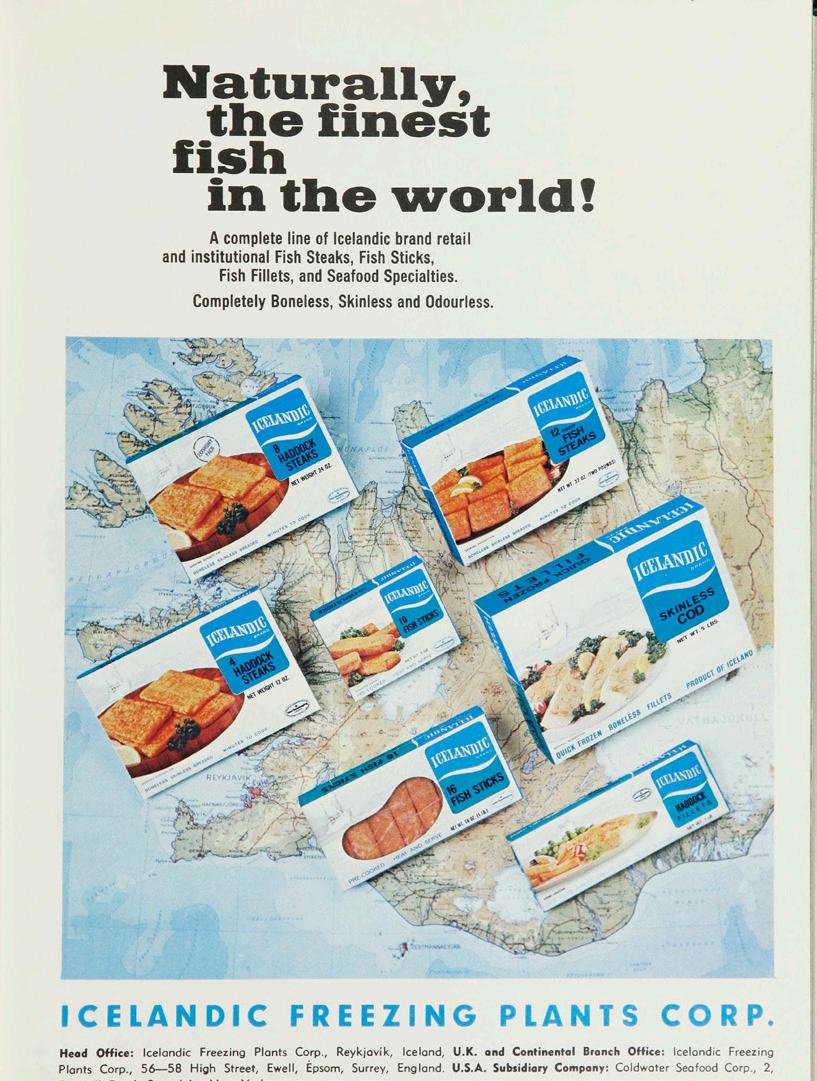


It’s quiet.
But not the kind of quiet when you can hear a pin drop. Nor is it an uncomfortable, anxious quiet, begging to be filled.
It’s quiet, but you hear a bird cawing in the distance and a soft breeze rustling the grass. It’s quiet, but there’s a soft rumble every now and again when a wave breaks on distant rocks. It’s quiet but filled with life.

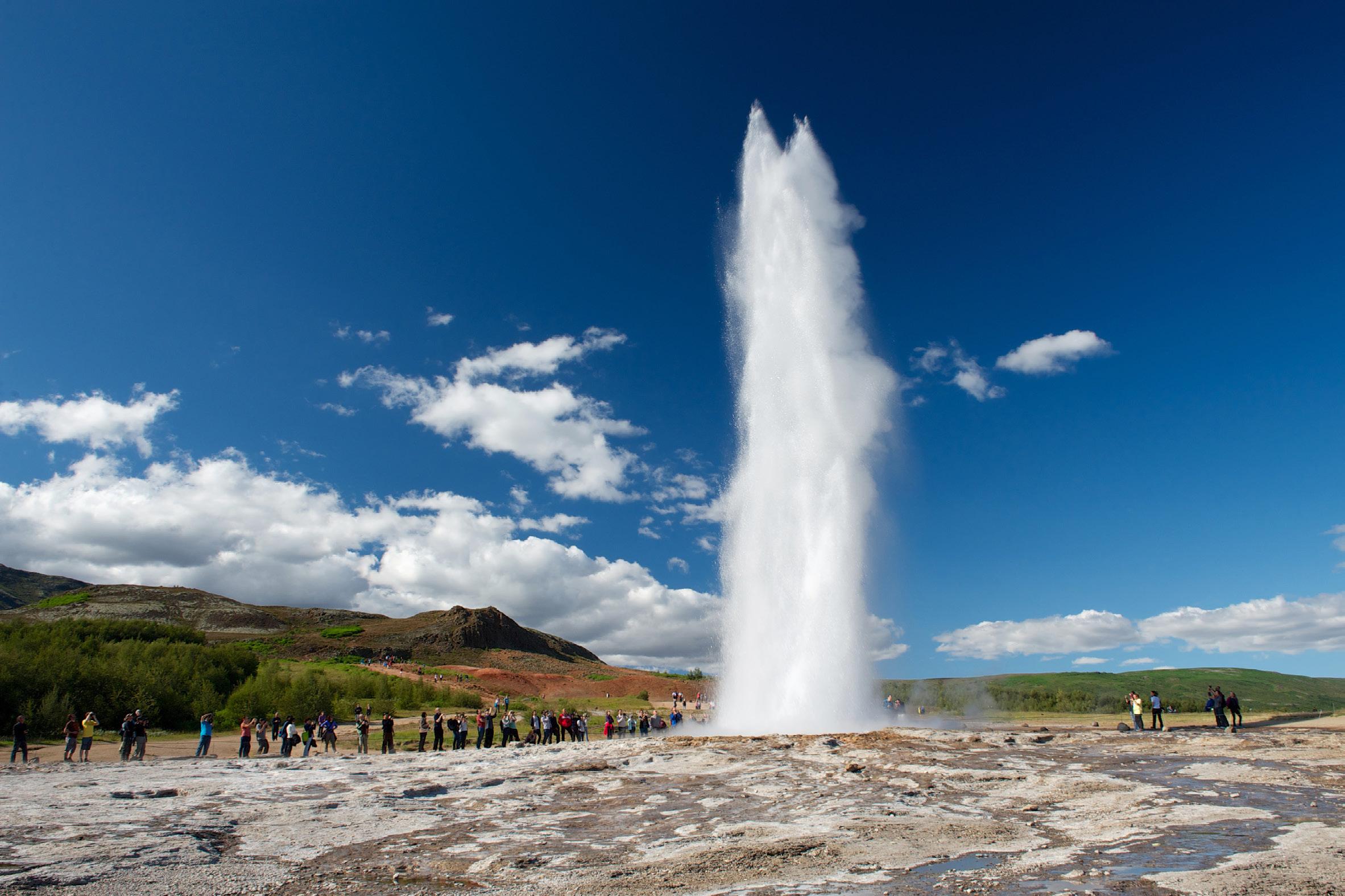
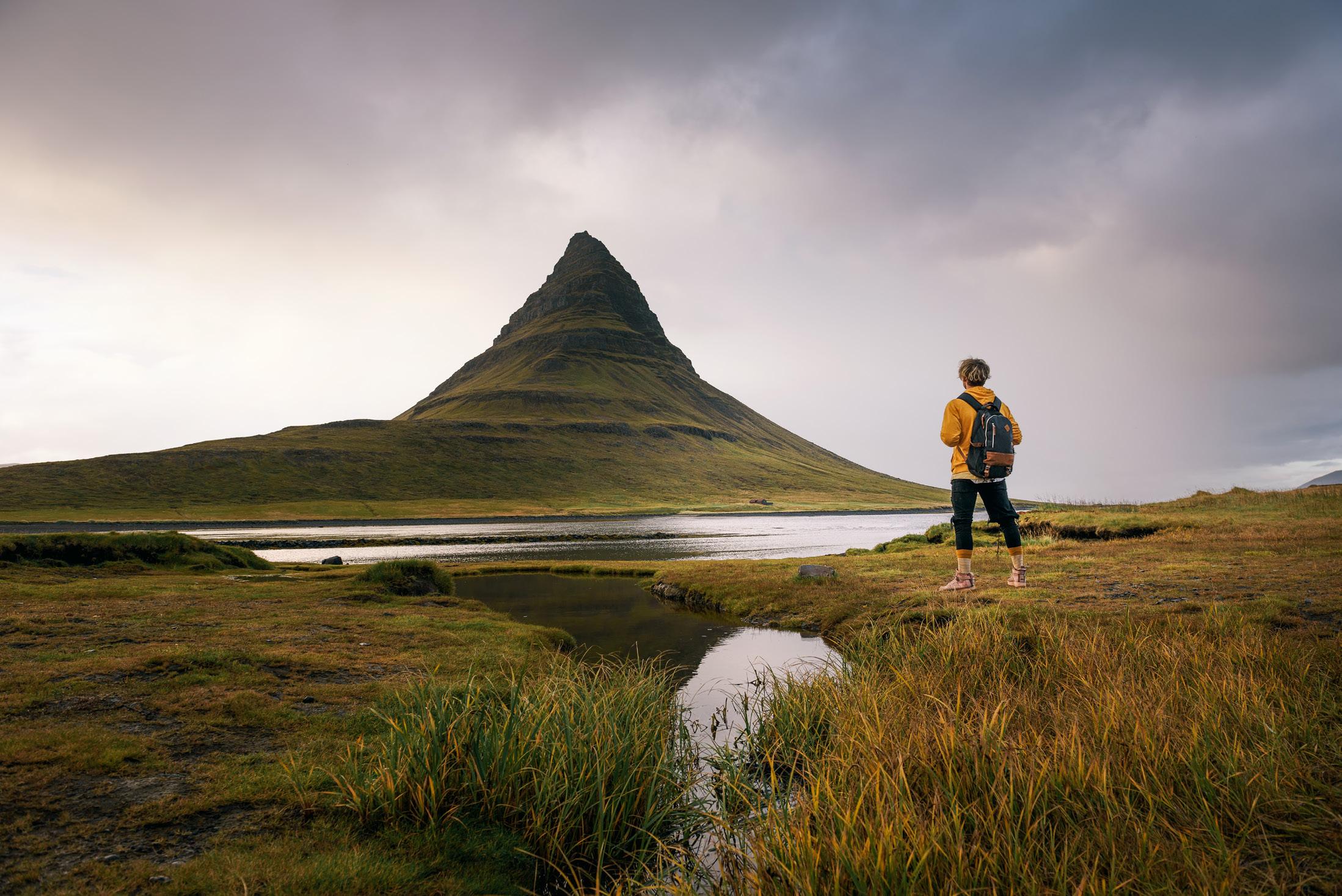


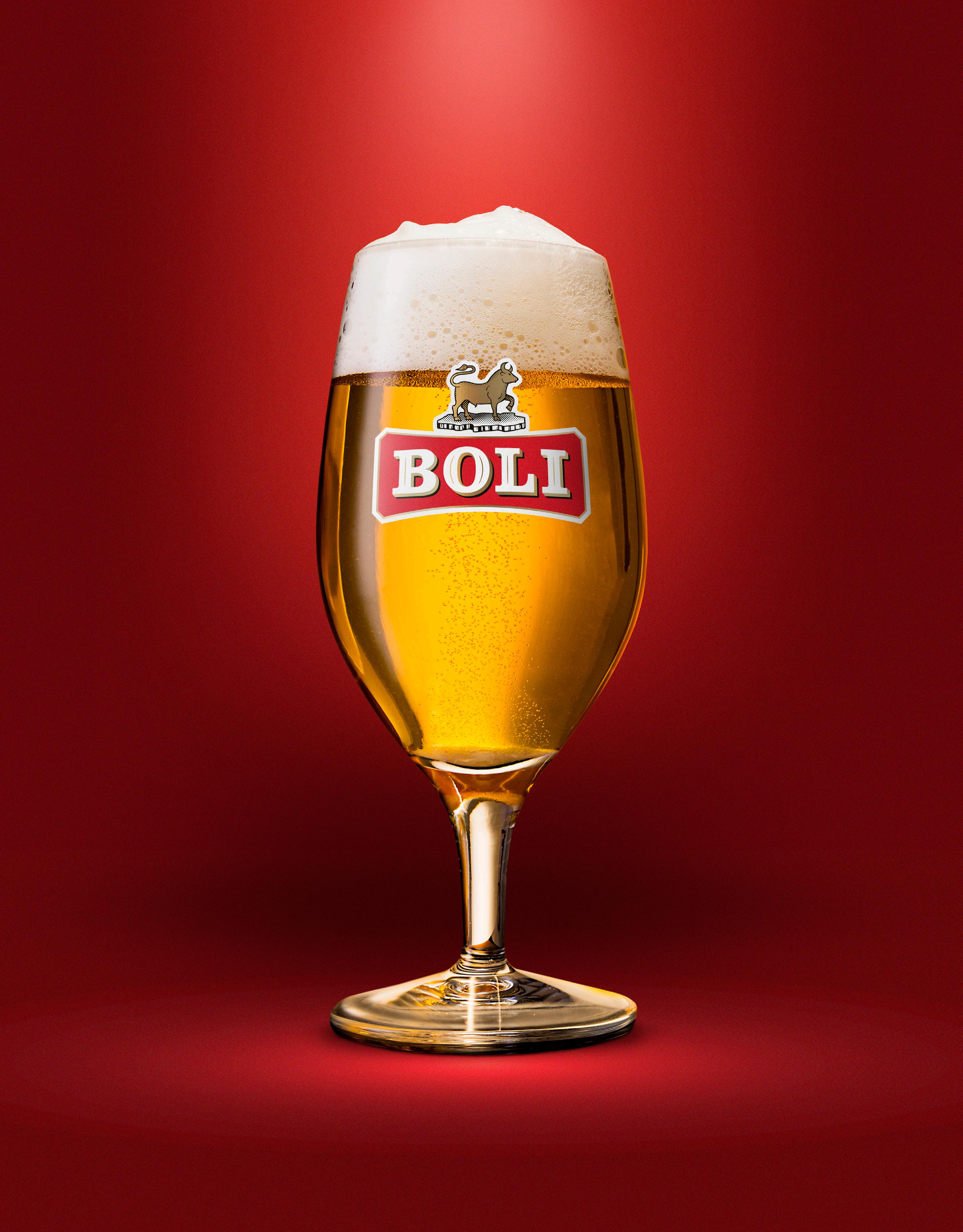


Blue Lagoon geothermal seawater is unlike any other water on the planet. Born deep underground, this natural marvel is rich in silica, algae, and minerals—the elements that give the water its extraordinary powers. Discover the water. Experience the wonder.
